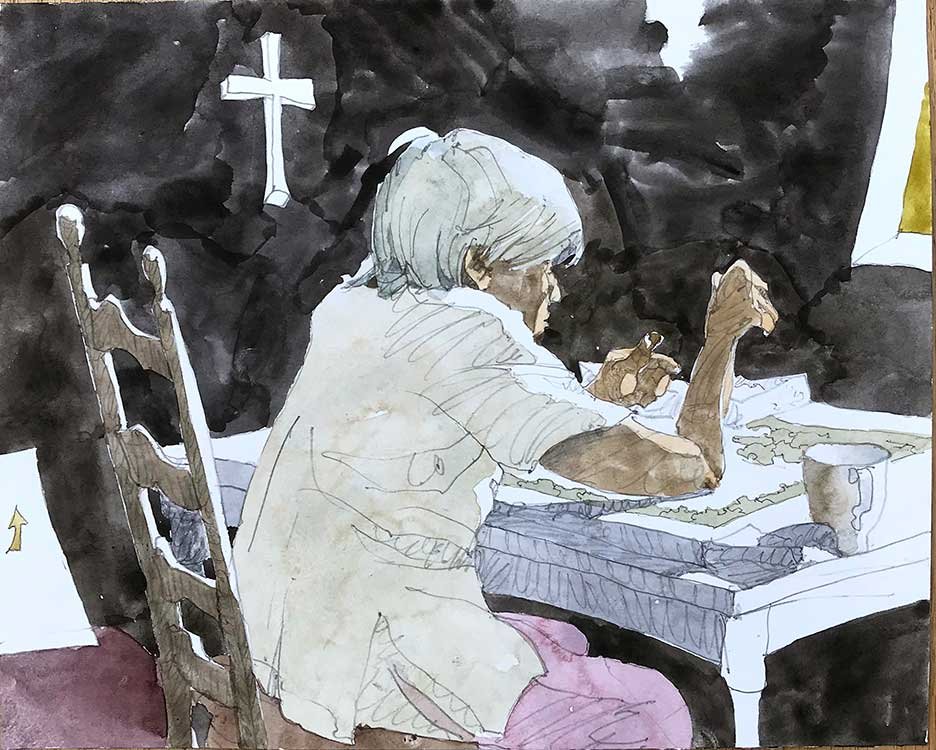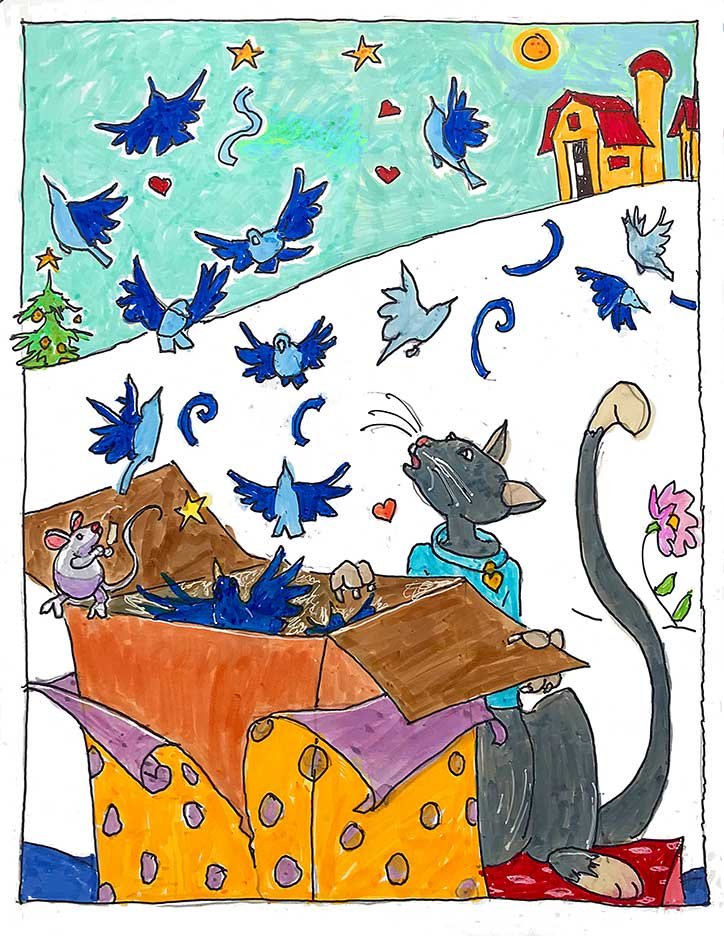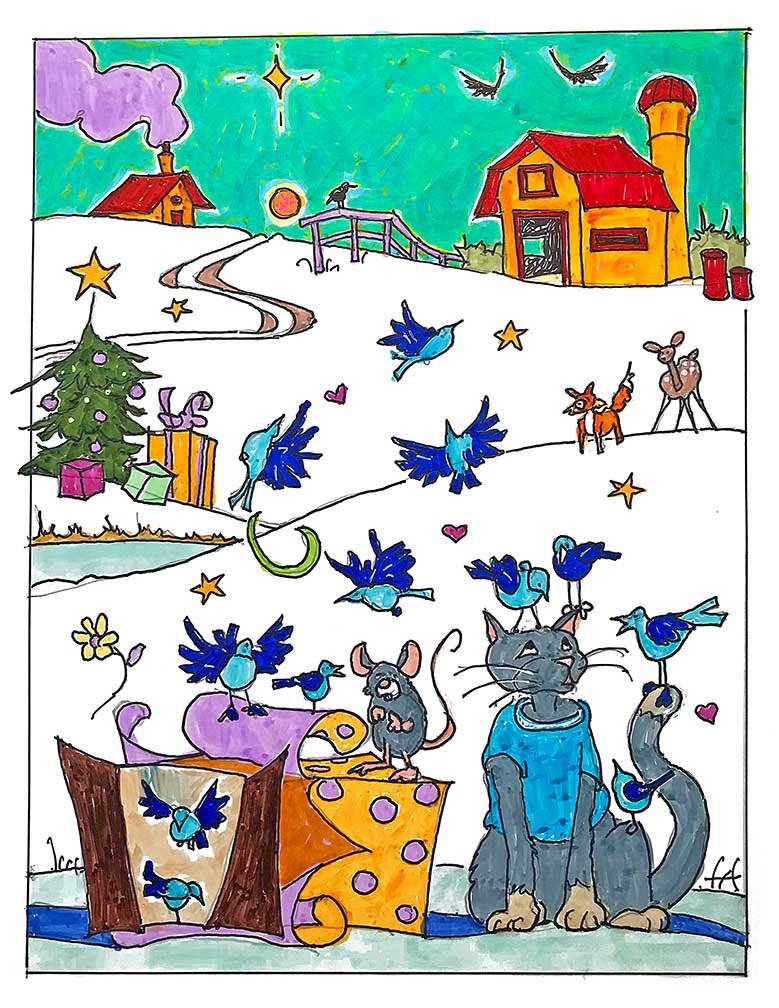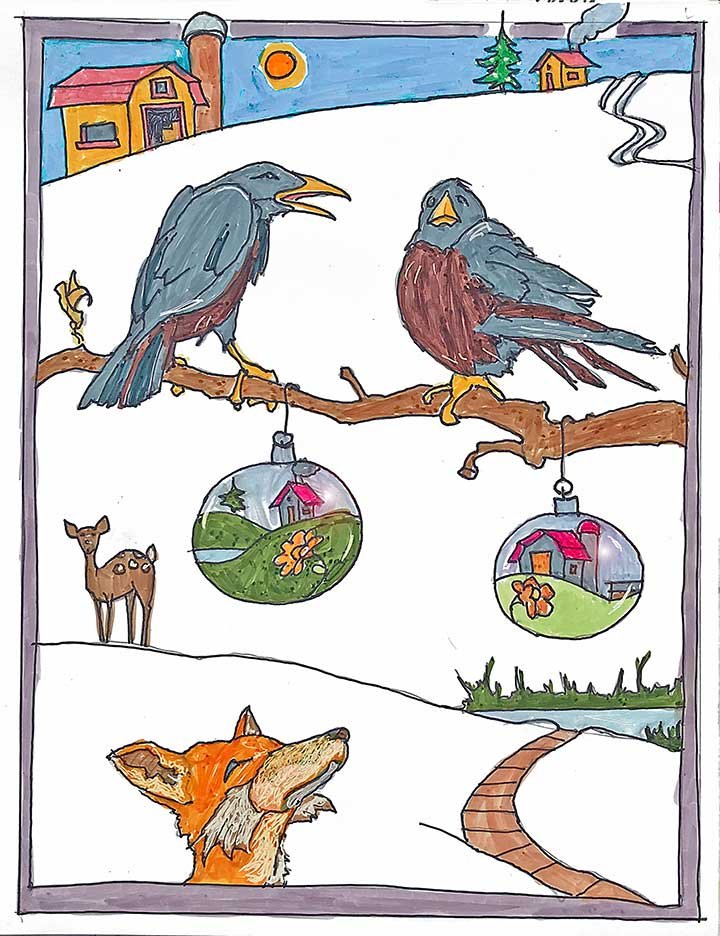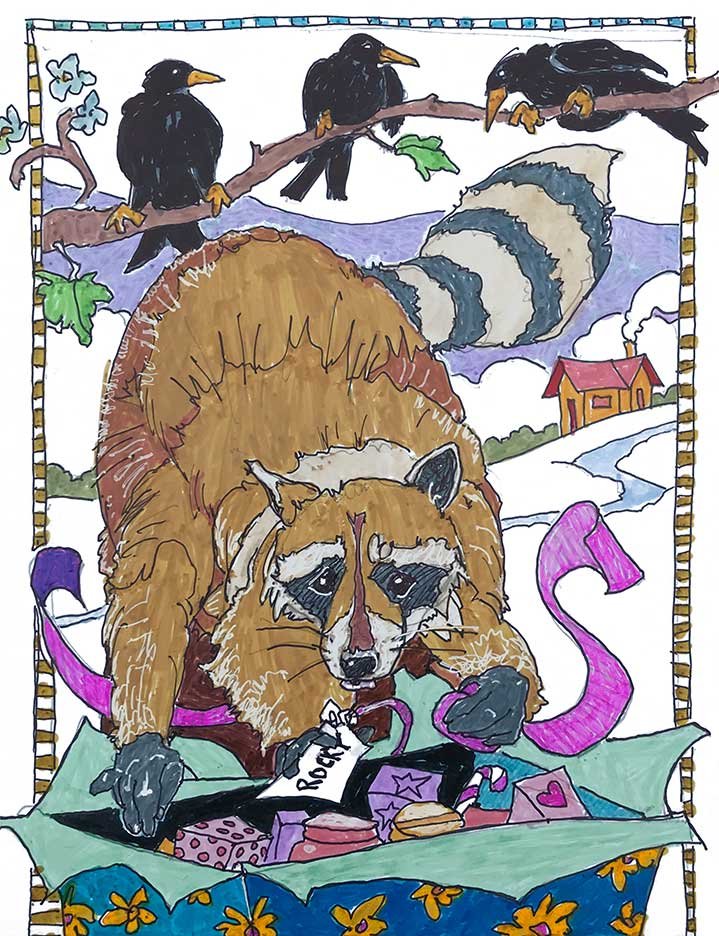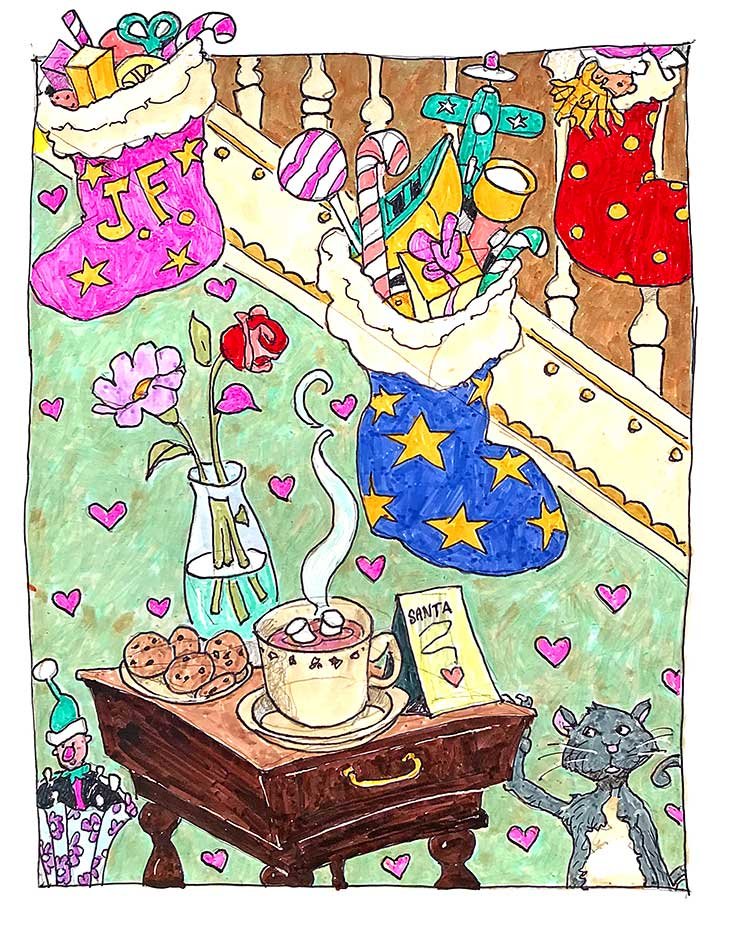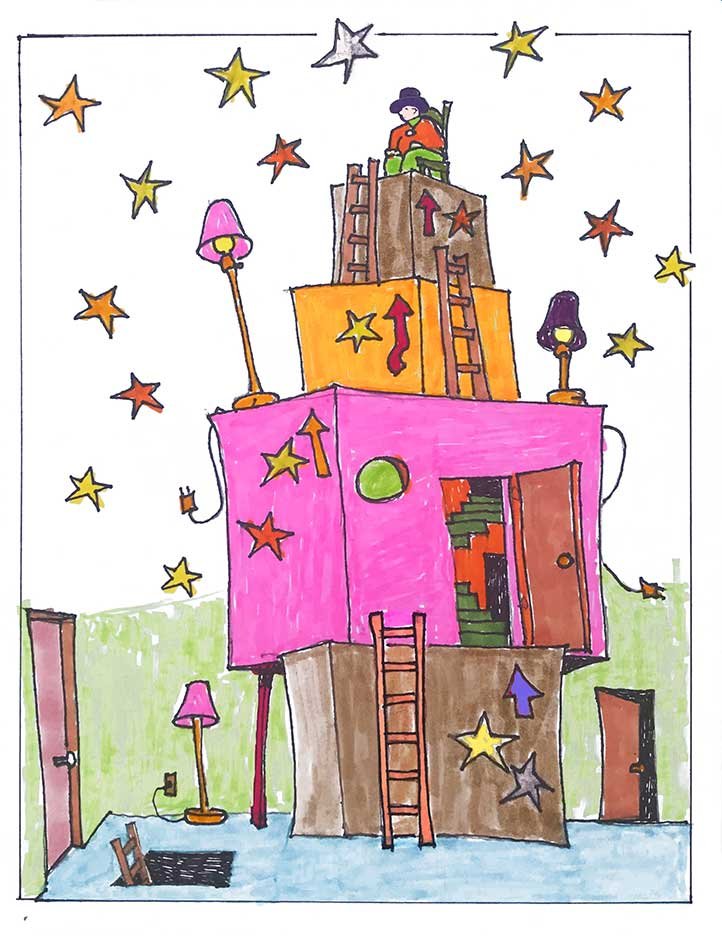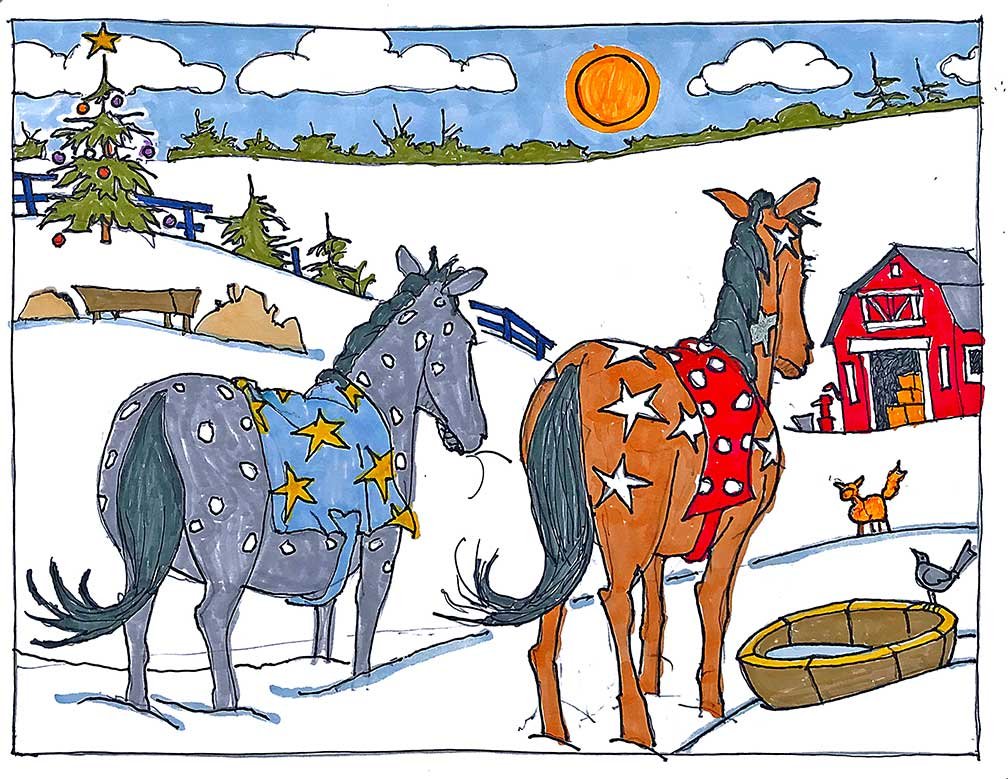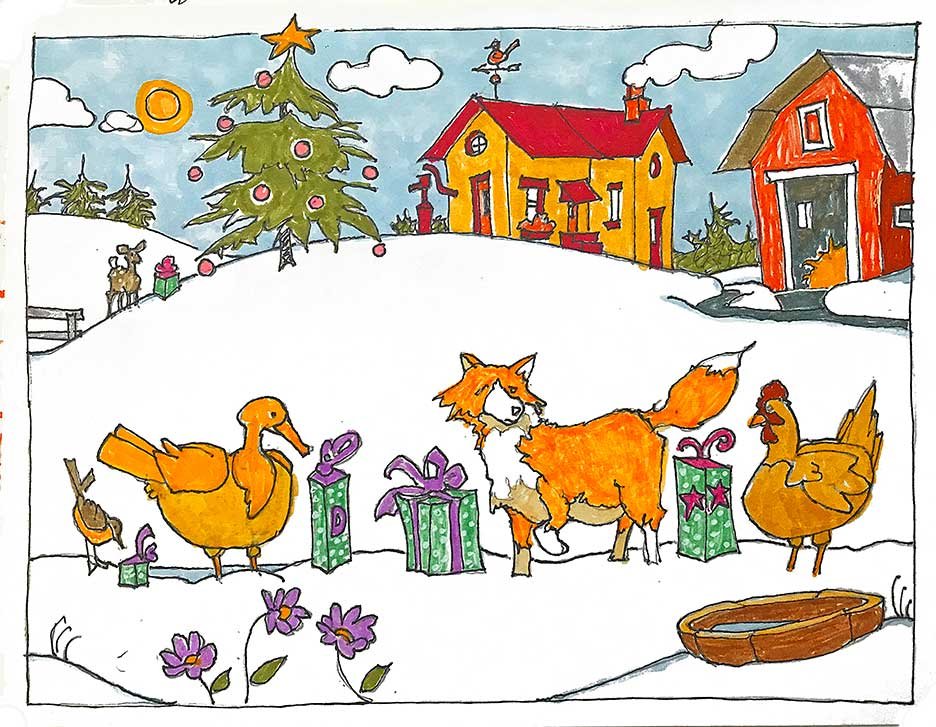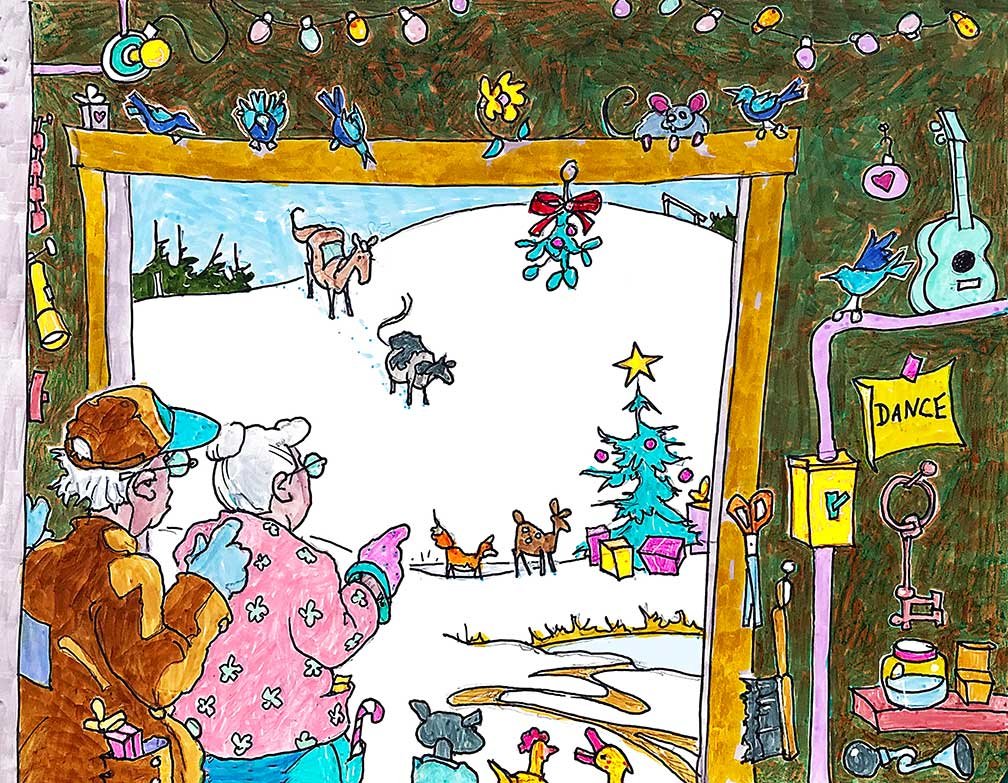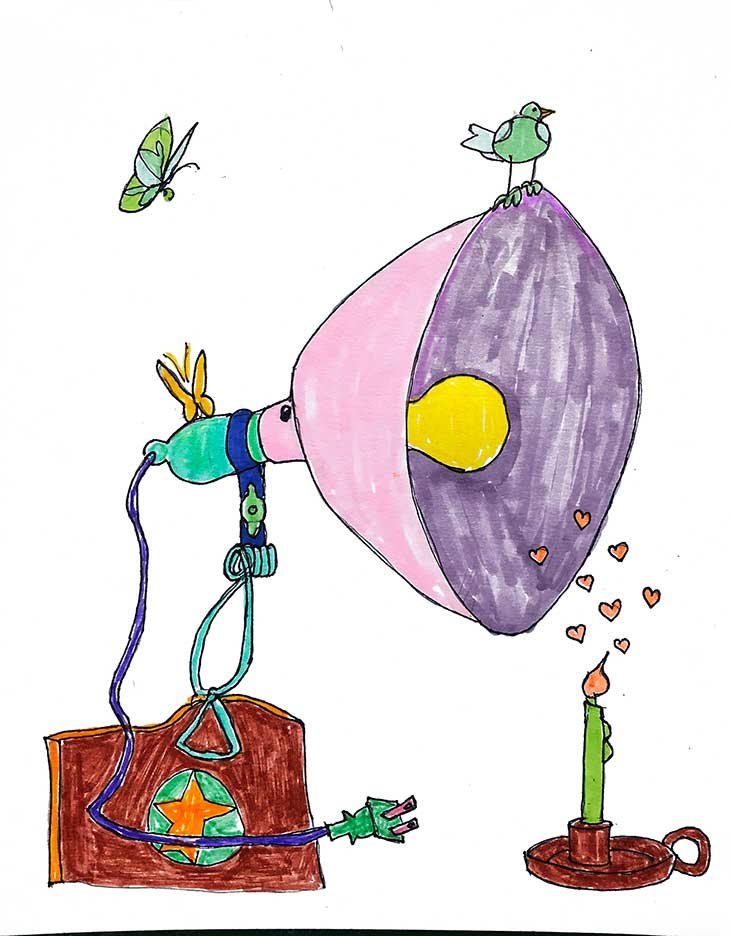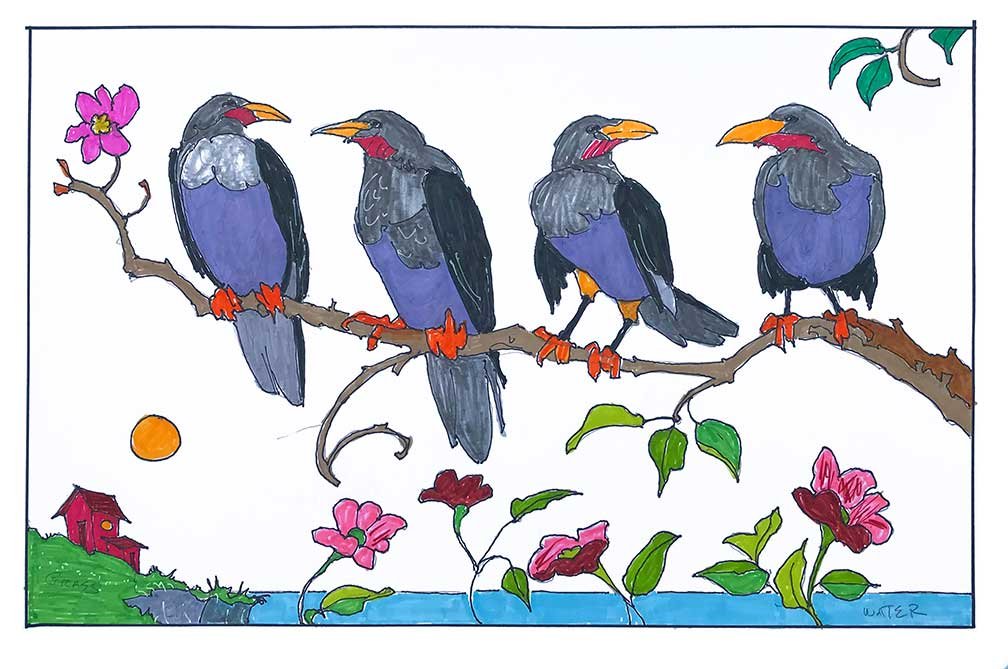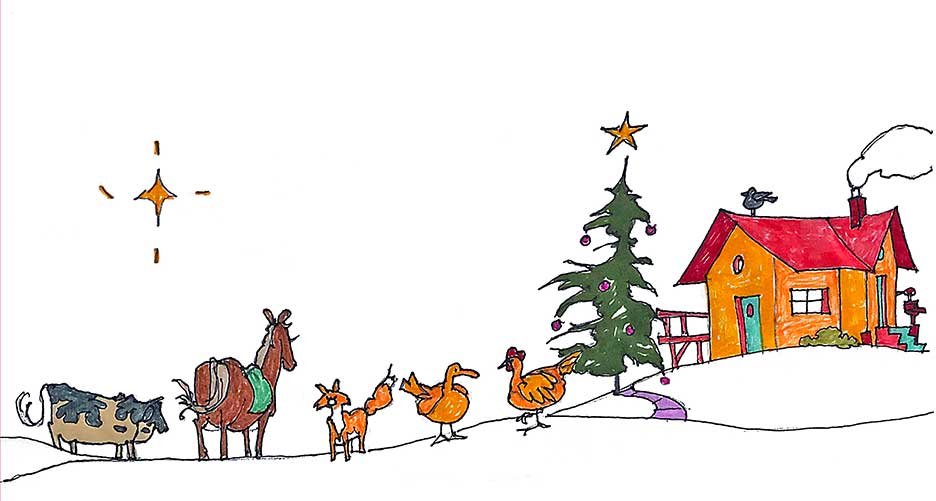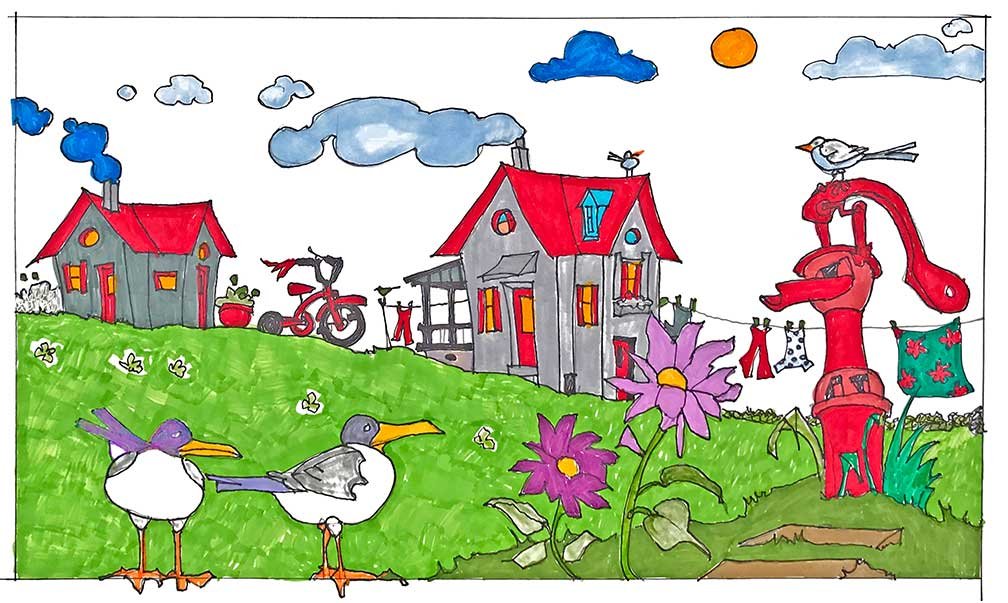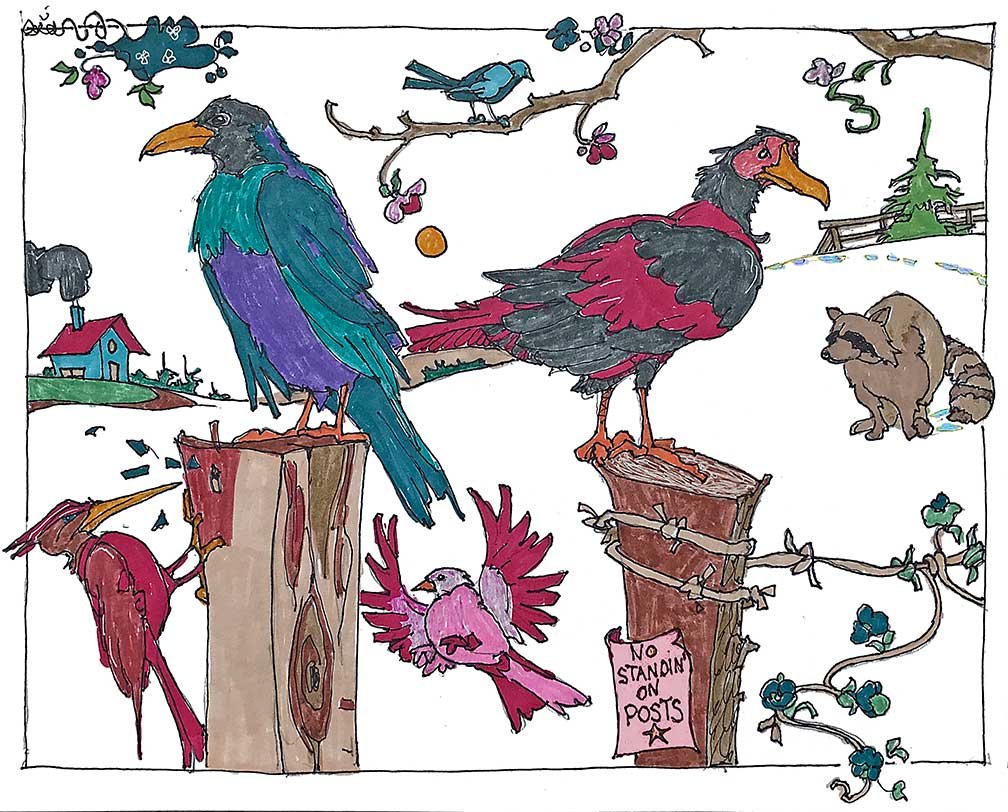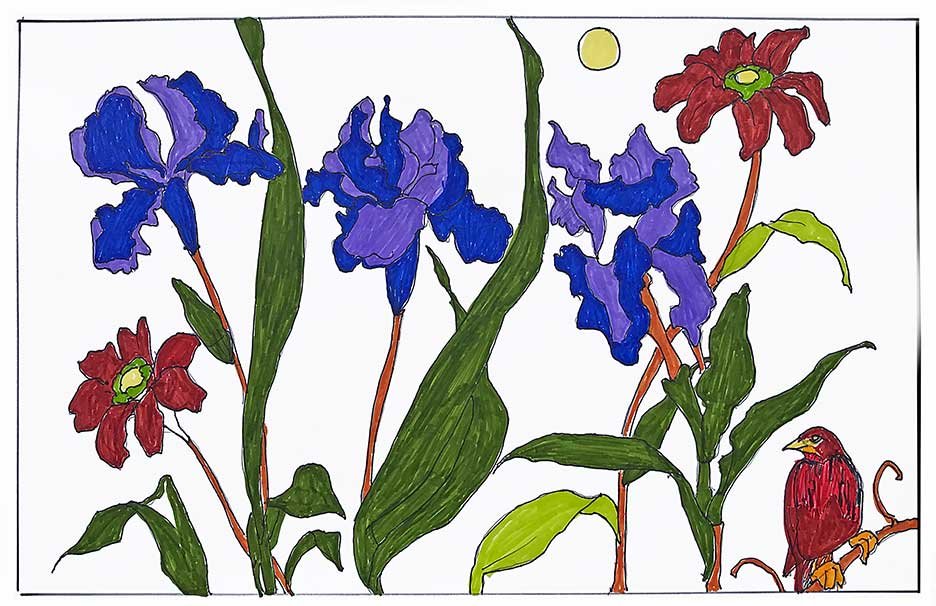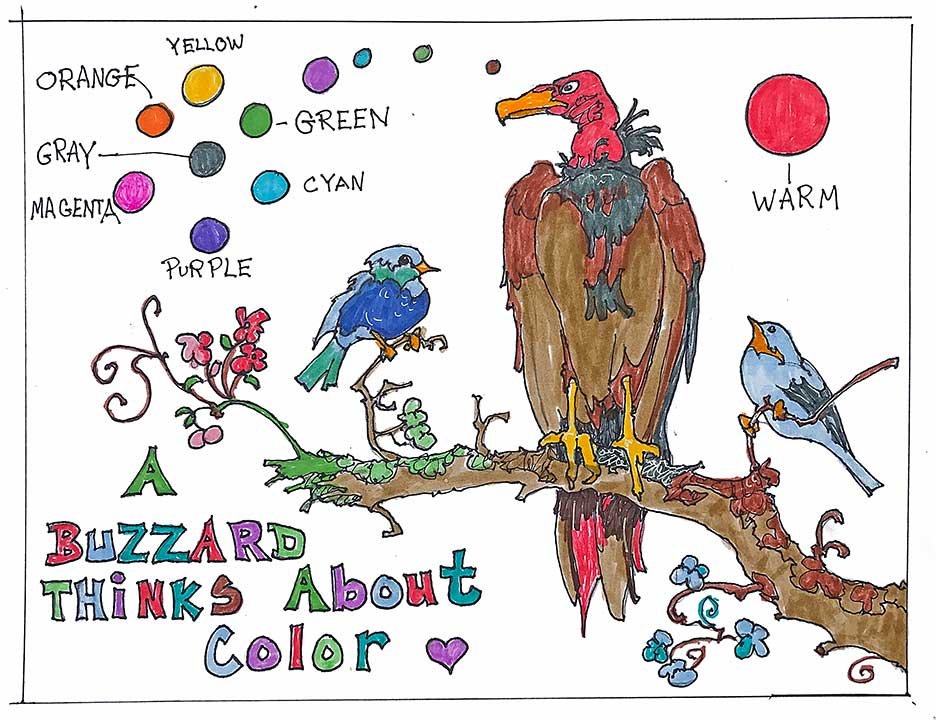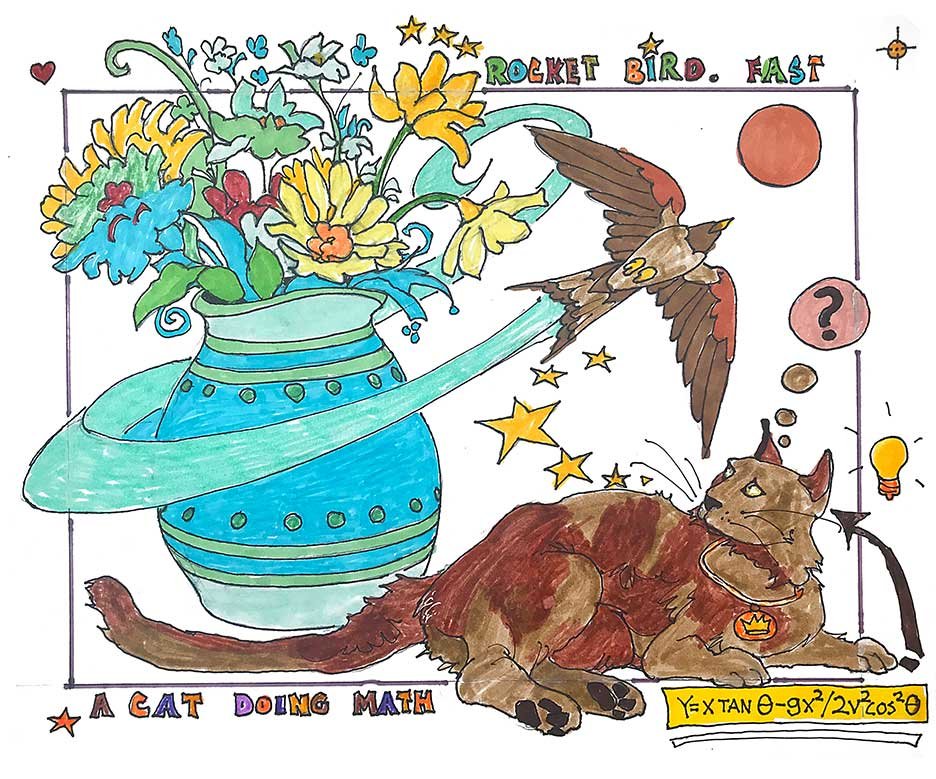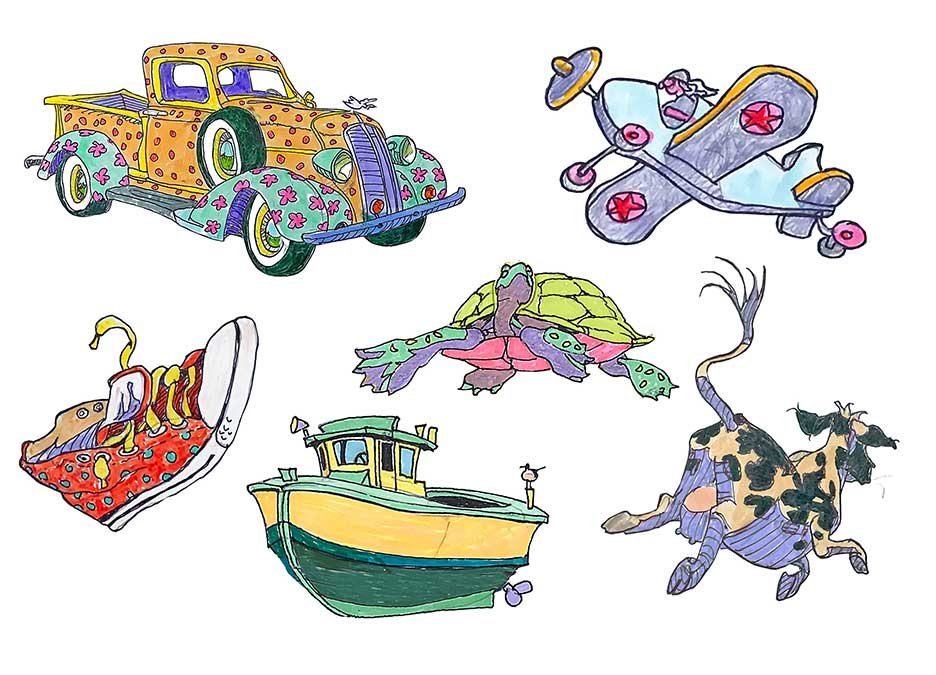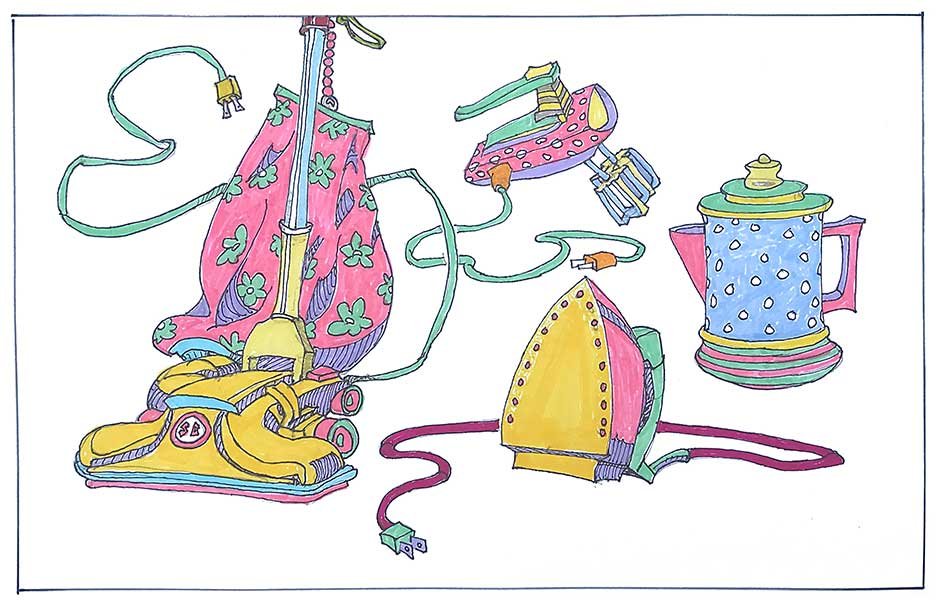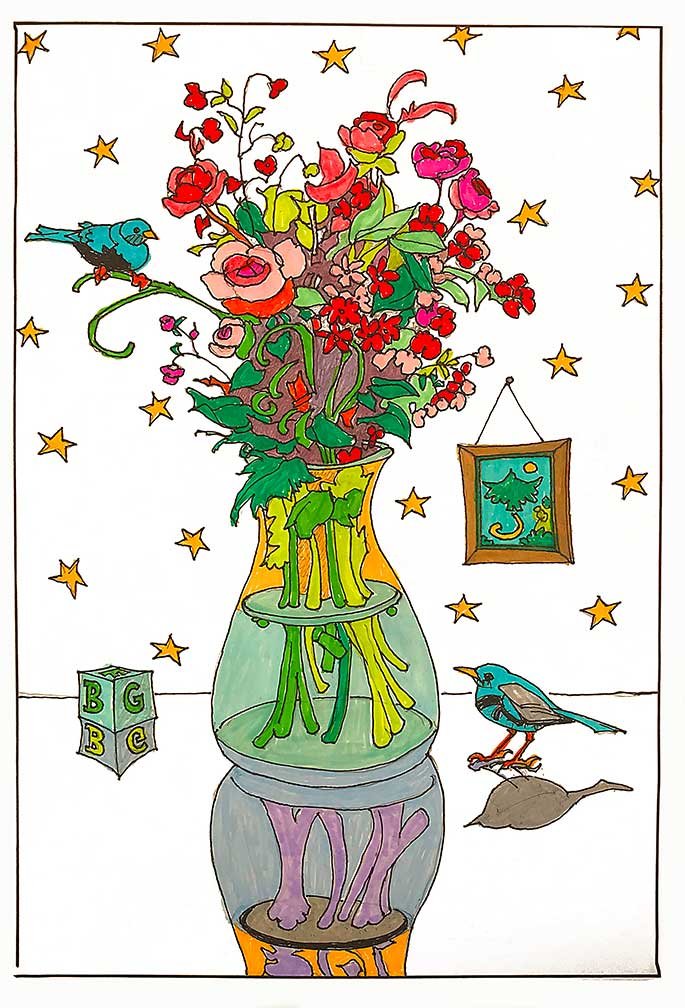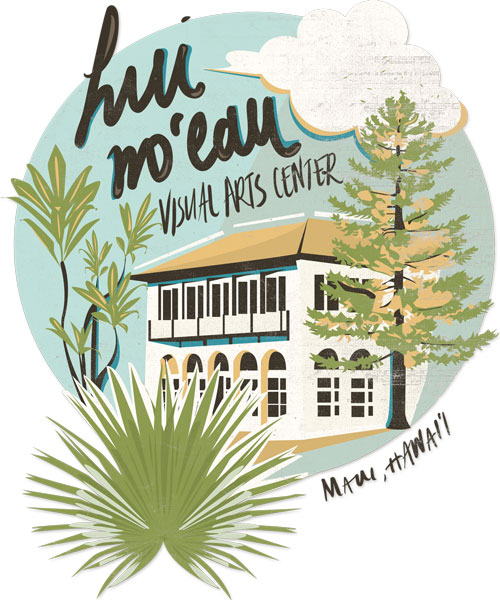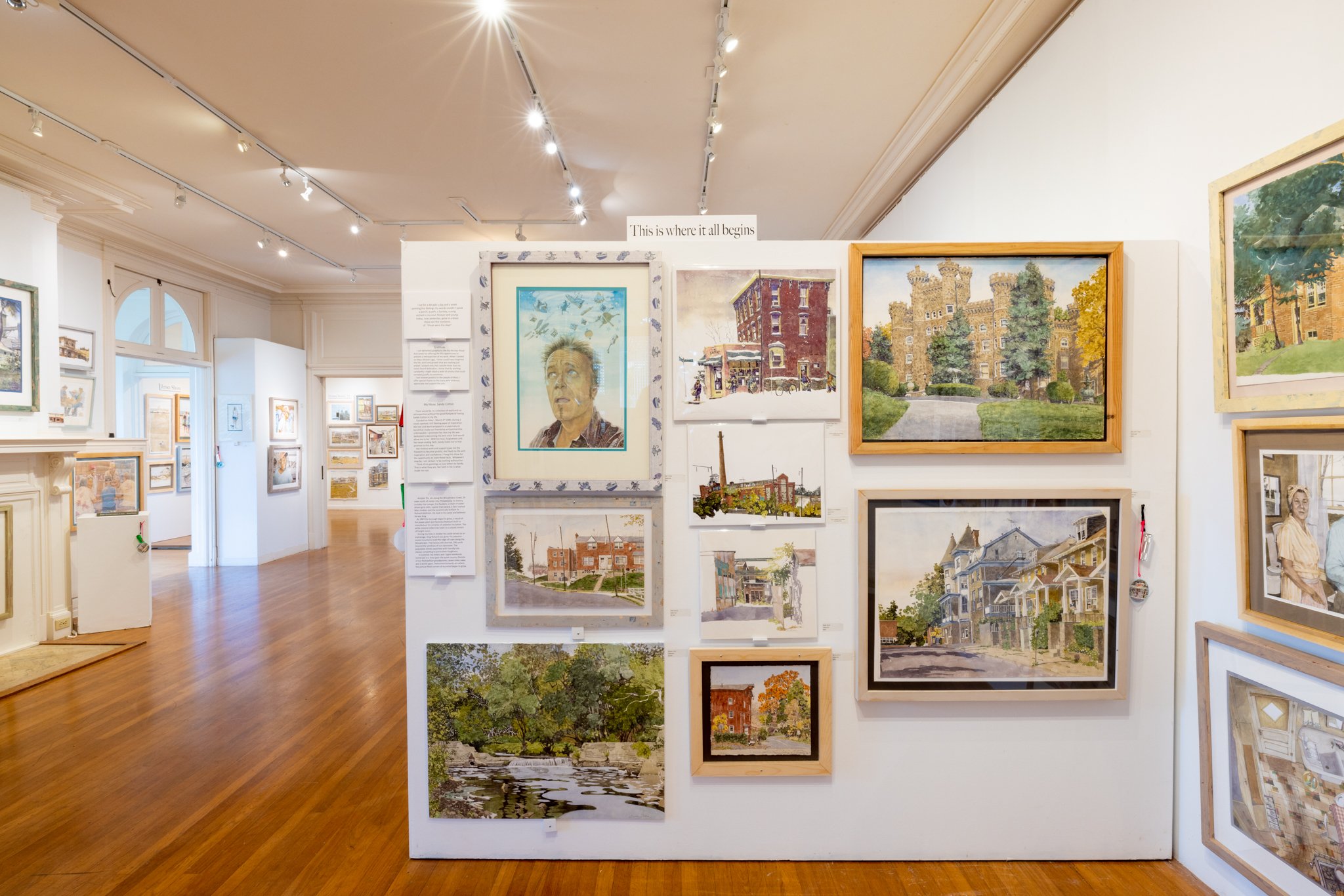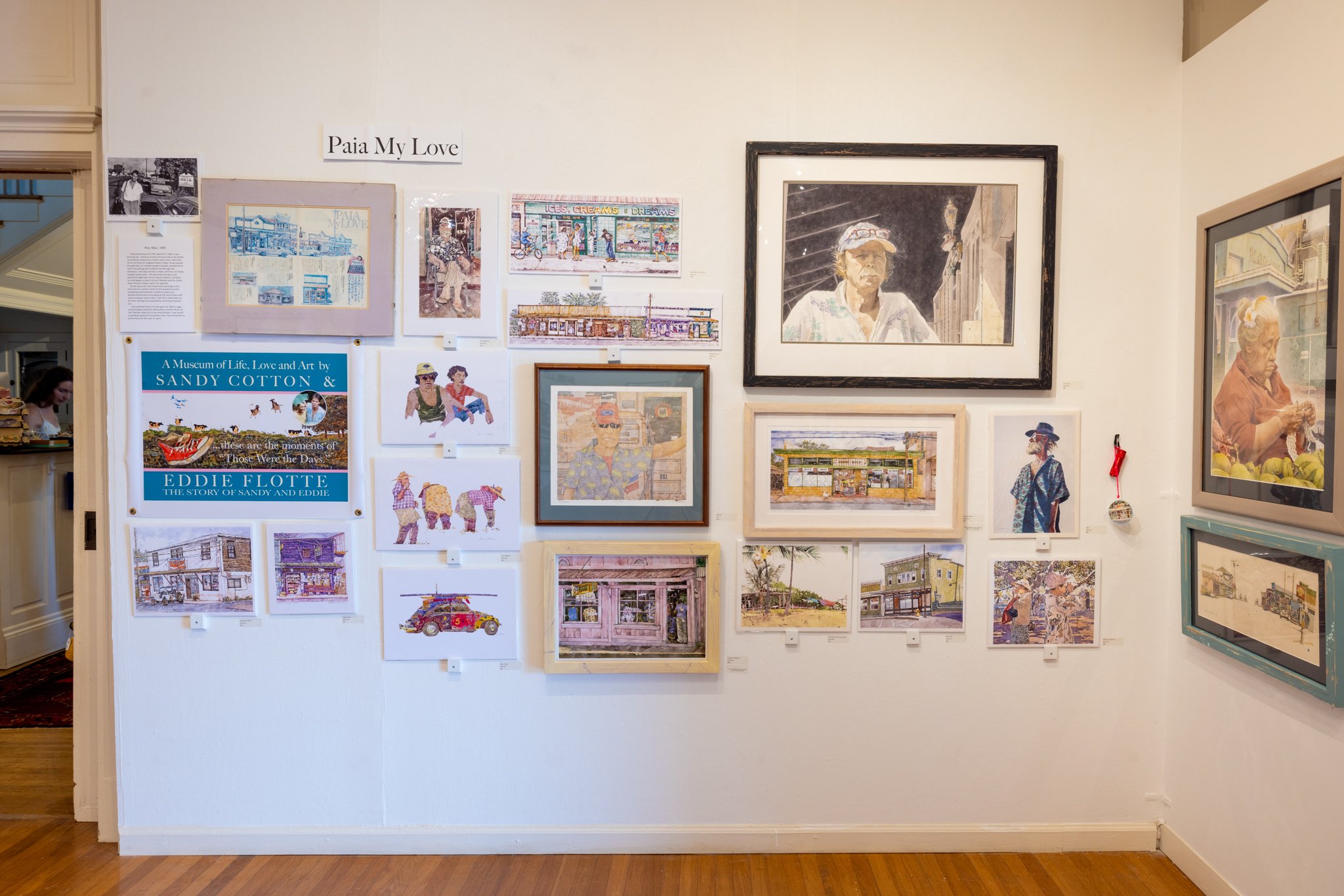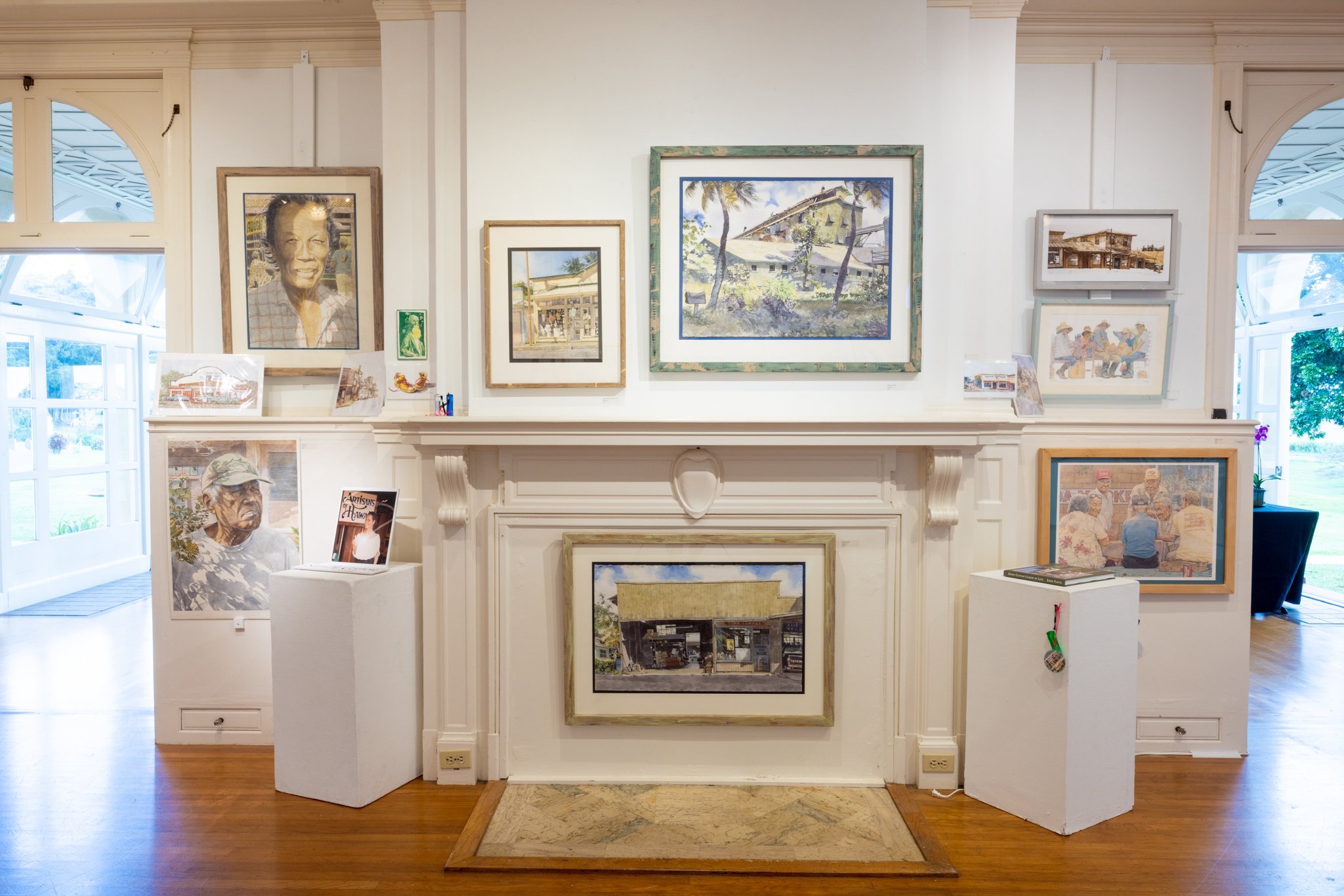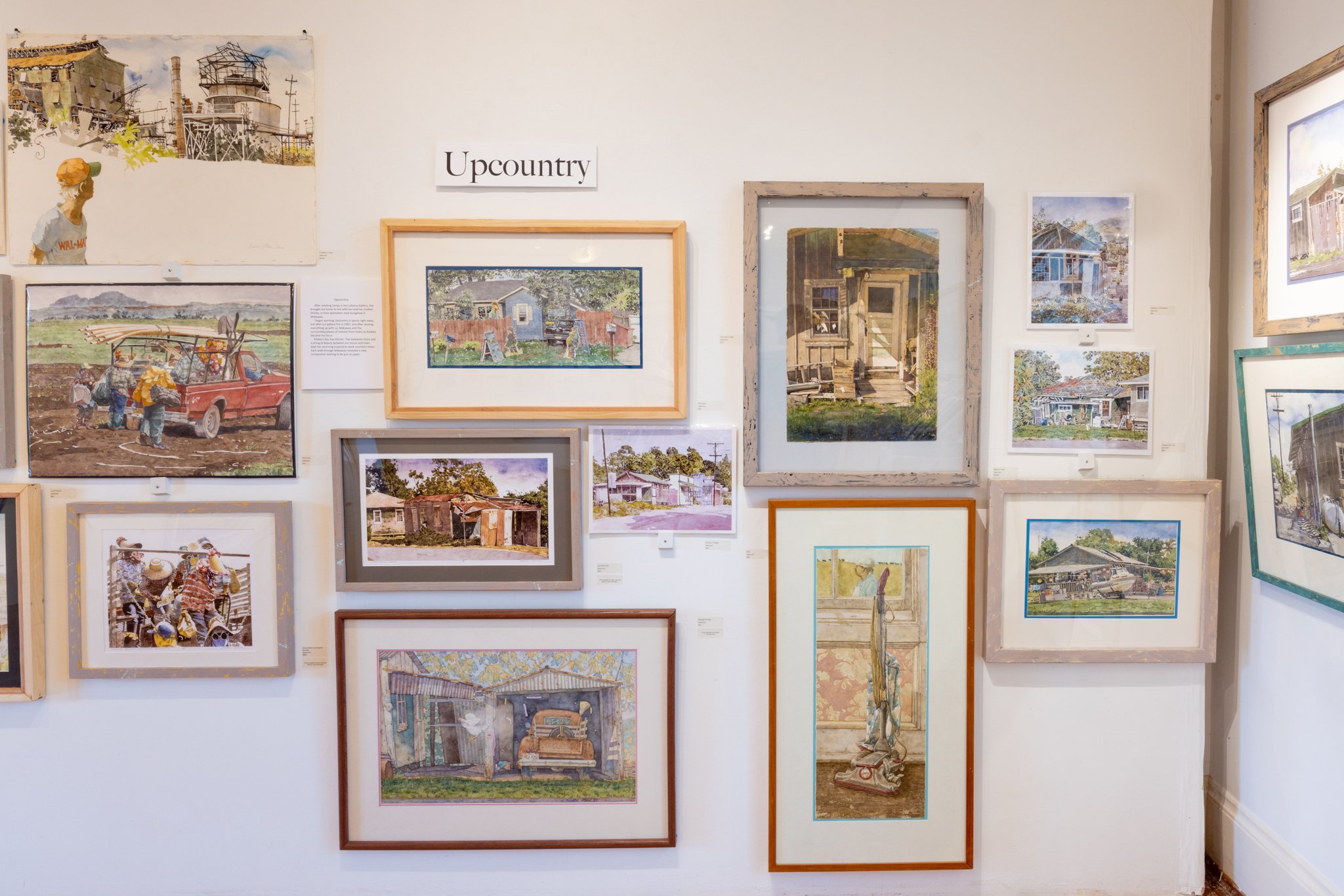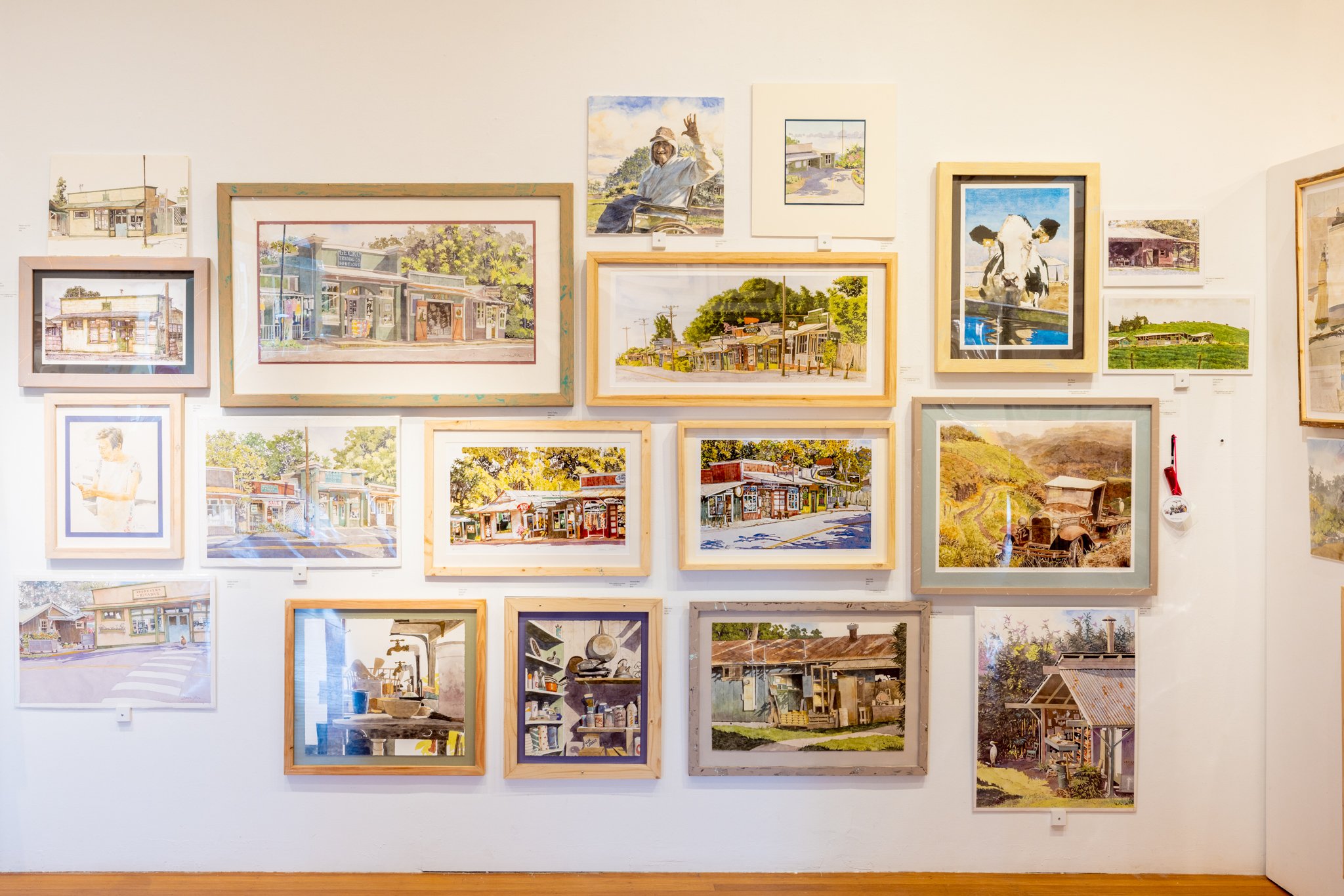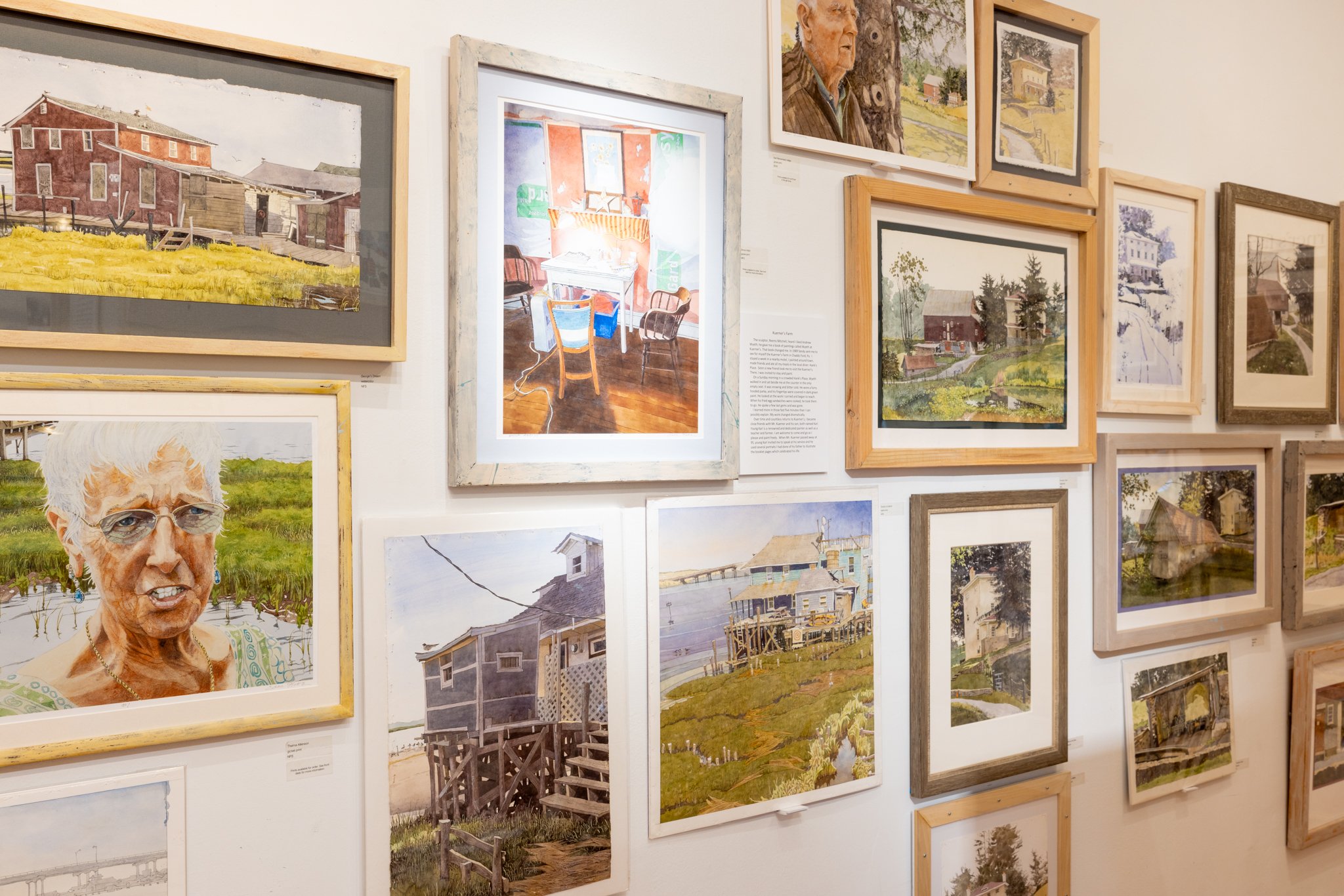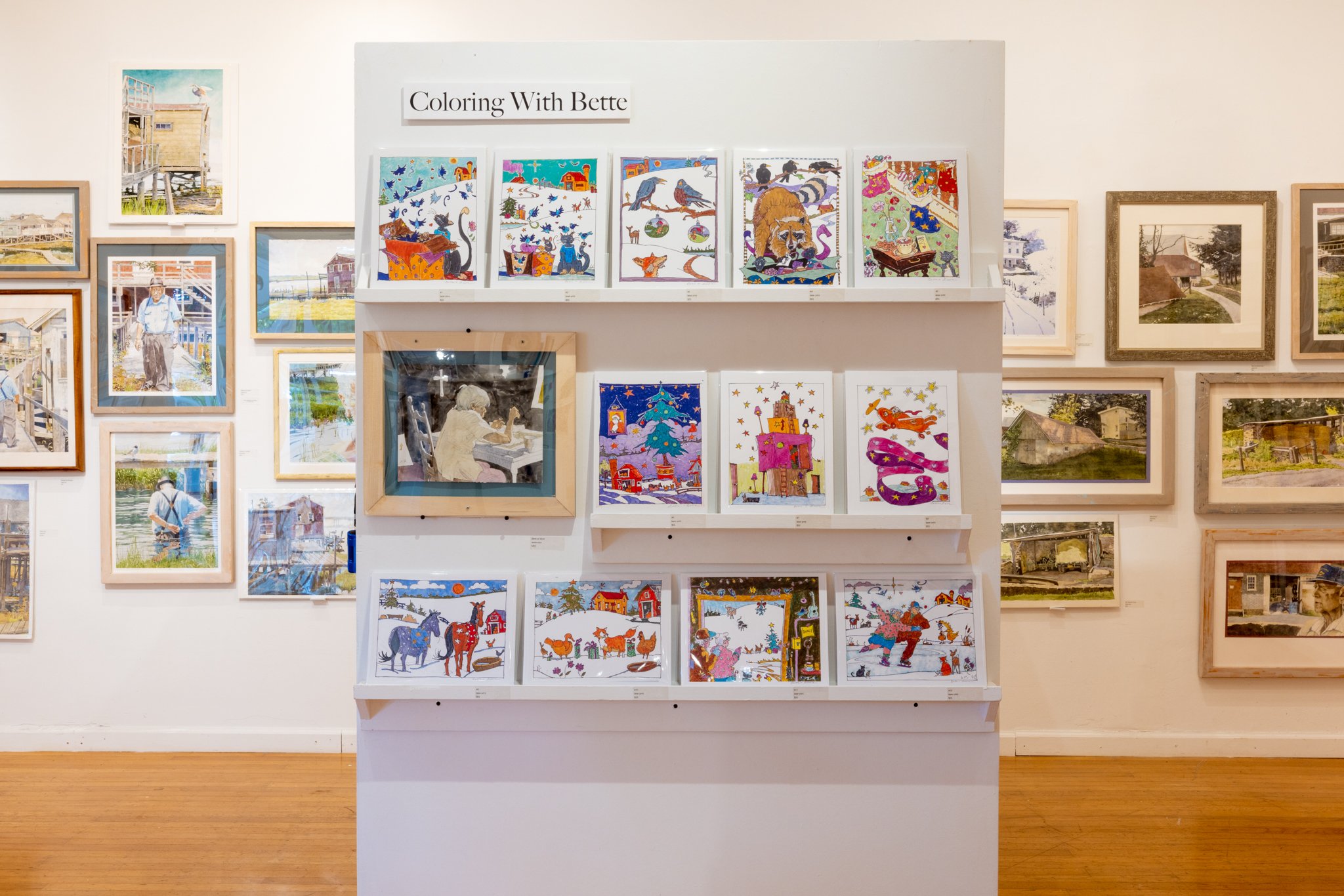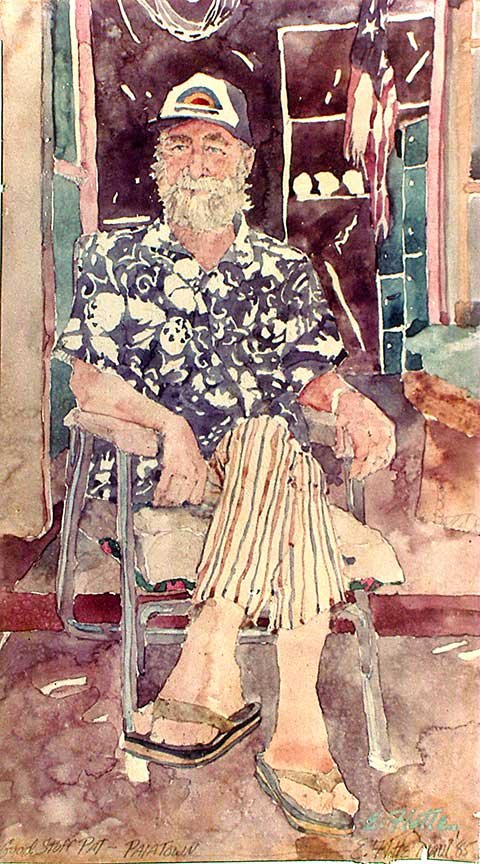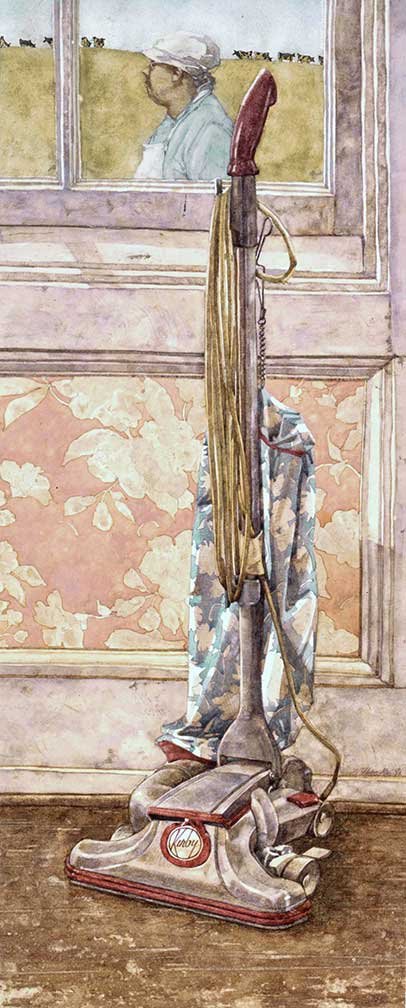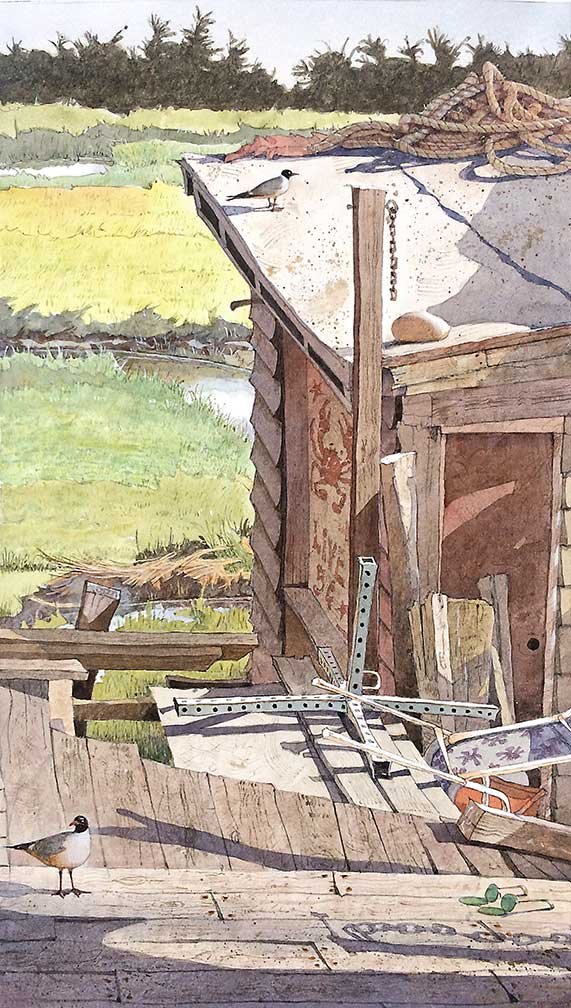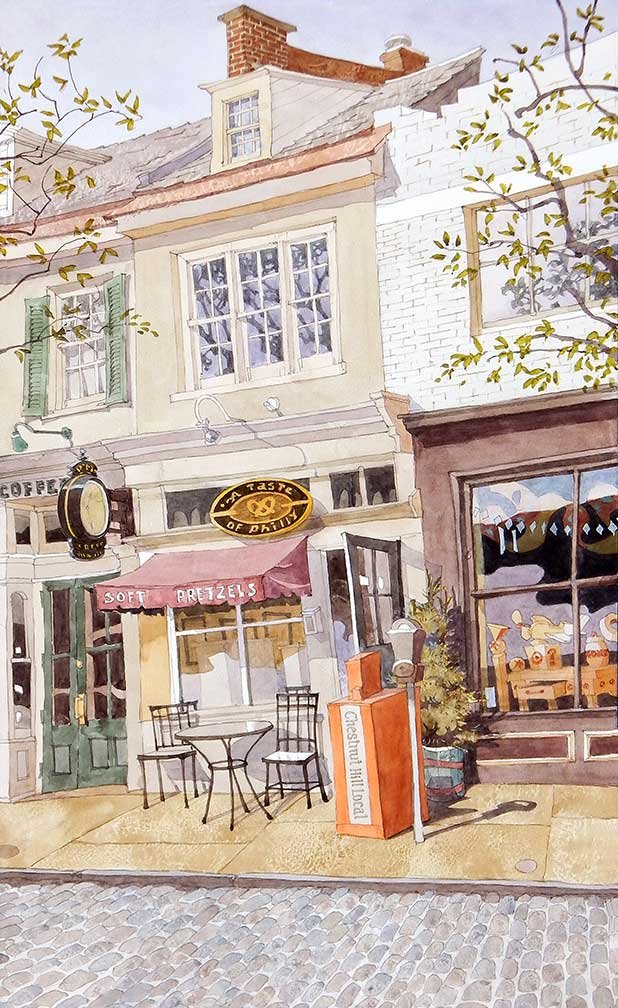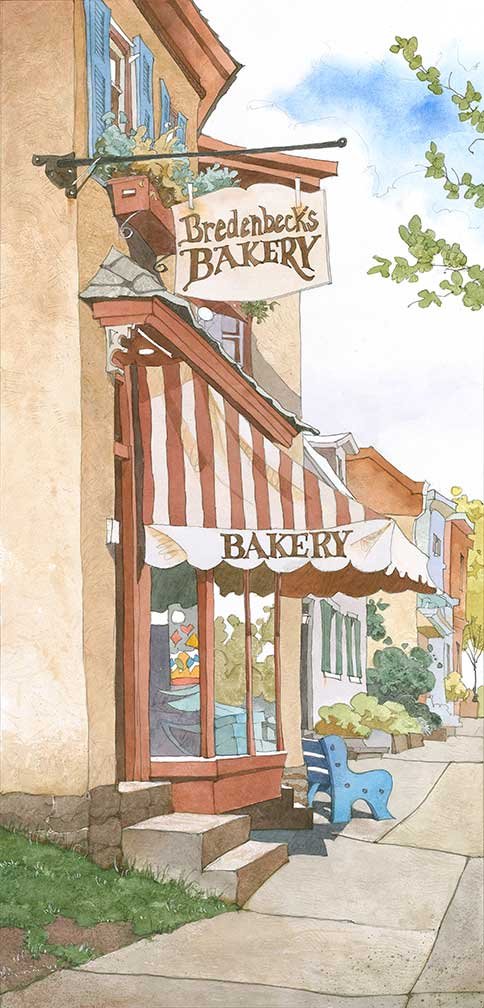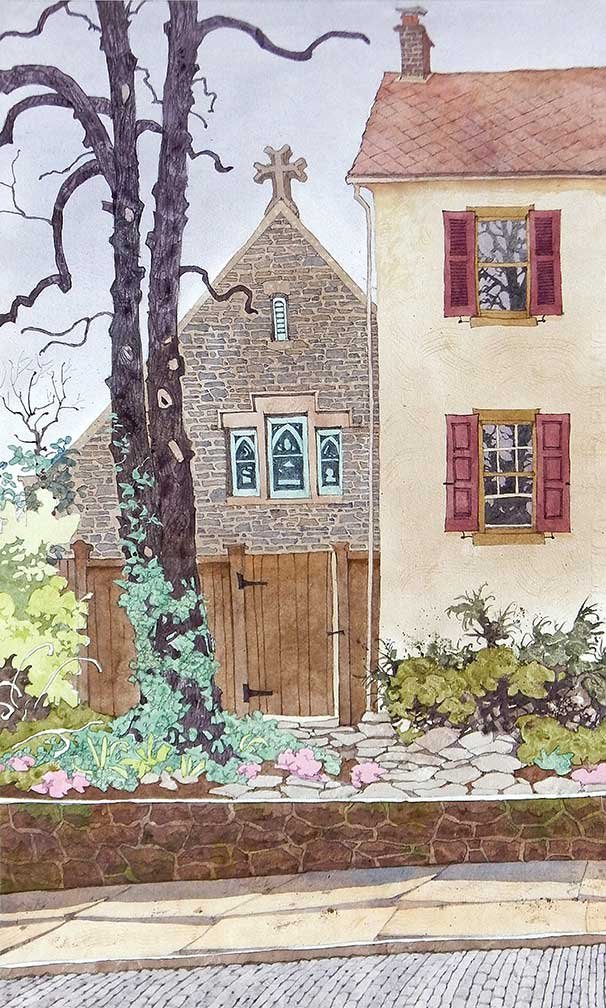Retrospective: Eddie Flotte - These Are the Moments of “Those Were the Days"
The Retrospective series was designed to acknowledge the contributions of individuals who have made a profound influence on local art and to share their work and ideas with the community. Hui No‘eau is honored to celebrate the work of artist Eddie Flotte.
Eddie landed on Maui in 1985 with the tools of his trade, a bit of skill, and an intense desire to make the most of his talent. Within his first month, he met his muse, Sandy Cotton. Immediately they formed an unbreakable bond as friends and partners. Sandy’s immeasurable support, love, and faith in Eddie’s work made their extraordinary and prolific journey together possible. A nostalgic nod to Maui’s past, Eddie’s paintings are love letters that capture the last days of Maui plantation life before the wave of modern development. His work also depicts his travels and extended stays in Wyeth’s Chadds Ford, The Wetlands of the Jersey Shore, and the area around his hometown of Ambler, PA.
Mahalo to our exhibition sponsors Jeremy & Michelle Baldwin!
To purchase any of the artwork you see here please contact call 808-572-6560.
Incubating
Ambler Pa. sits along the Wissahickon Creek, 20 miles north of center city, Philadelphia. Its history includes the Lenape, the Quakers, a chain of water-driven grist mills, a great train wreck, a hero named Mary Ambler and the eccentrically brilliant Dr. Richard Mattison. He lived in his castle and believed he was king.
By 1883 the borough began to grow, a result of the power plant and factories Mattison built to manufacture his miracles of asbestos insulation. The white mineral rolled into town on a steady stream of freight trains.
During my time in Ambler his castle served as an orphanage. King Richard was gone; his asbestos-waste mountains lined the edge of town along the Wissahickon. The factory still churned, 200 yards beyond the windows of our classroom. The populated streets swarmed with friendly kids always competing to prove their toughness.
In contrast, my sisters and I spent weekends immersed in a time past: the quiet country lifestyle of our Rockwellian grandparents, seven miles away and a world apart. These environments are where the picture filled corners of my mind began to grow.
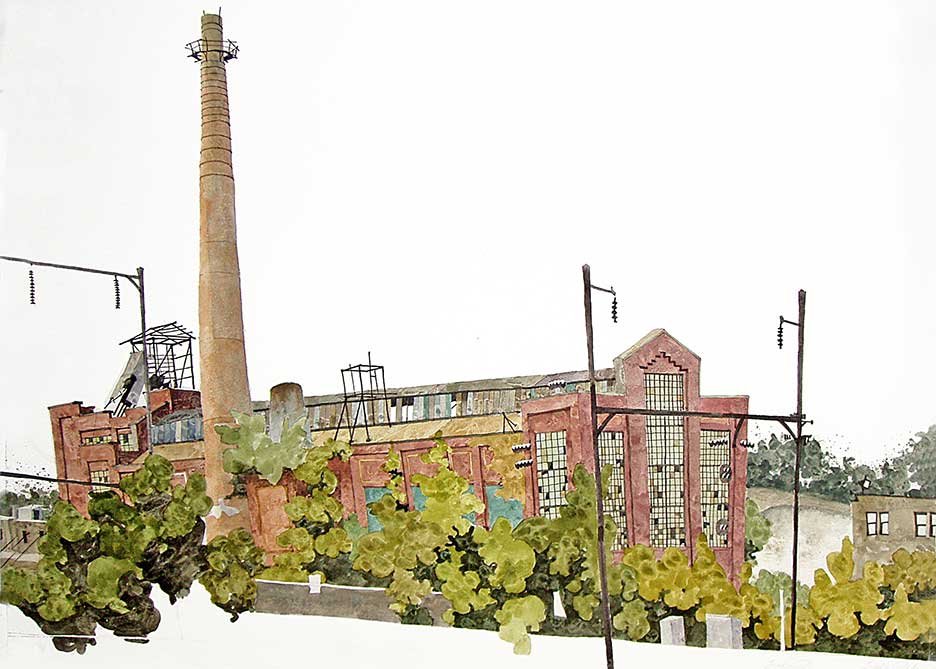
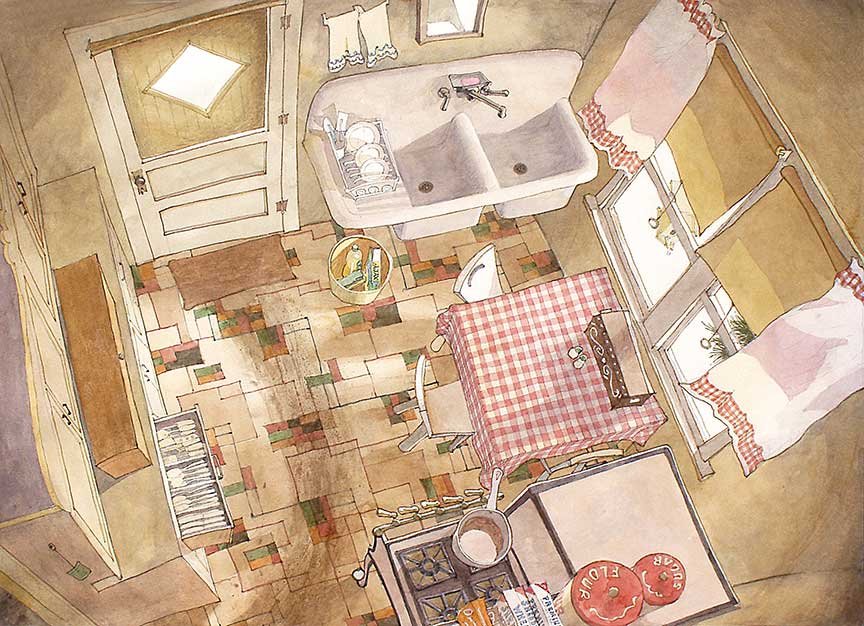
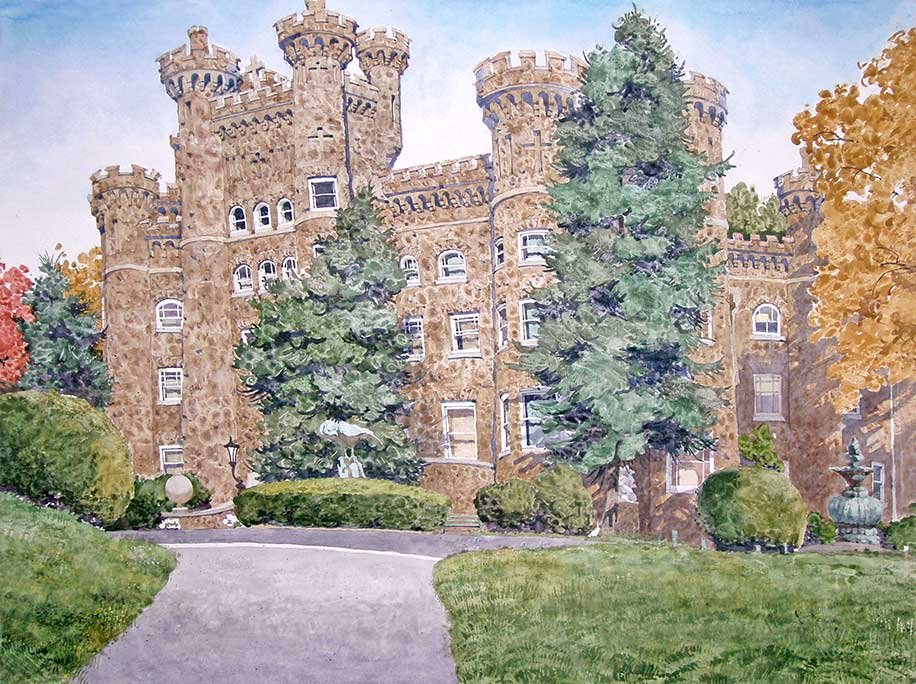
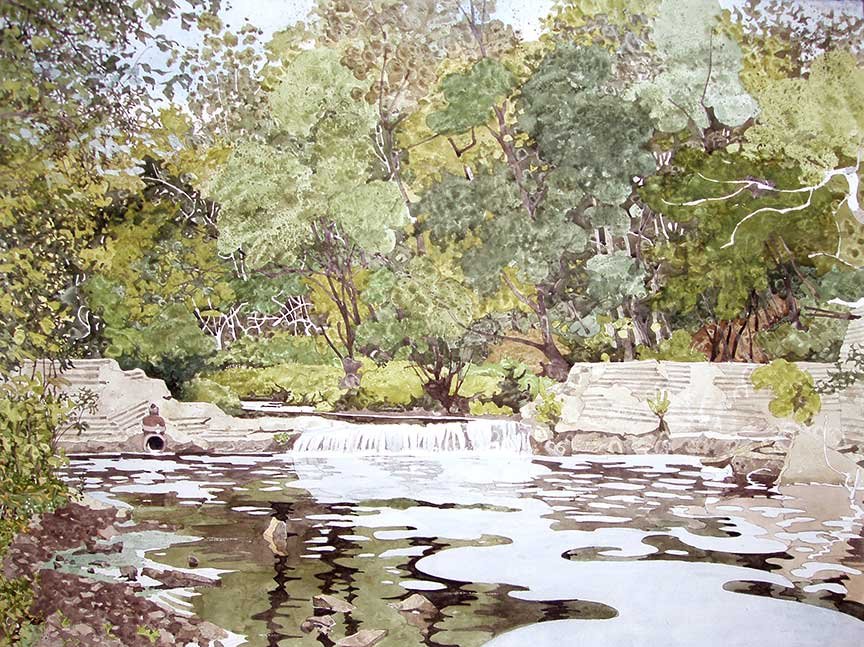
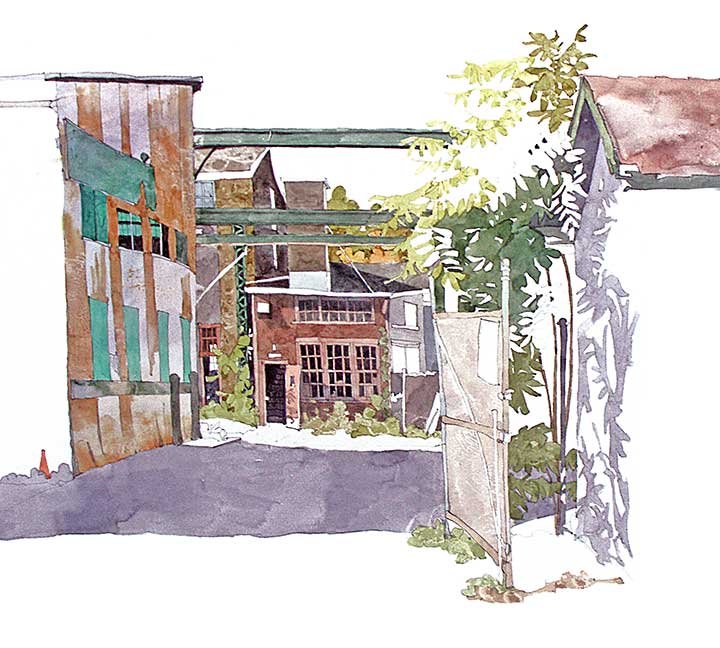
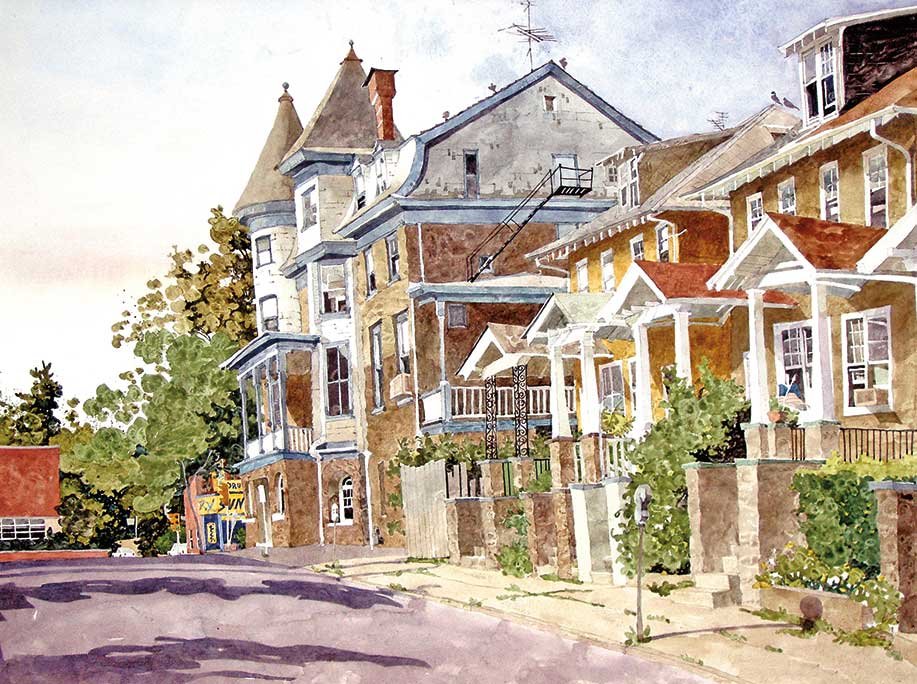
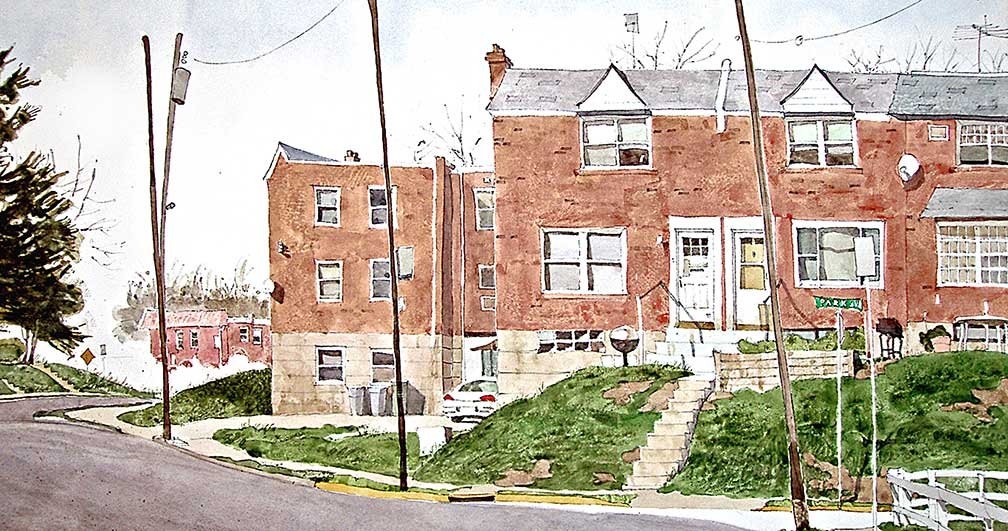
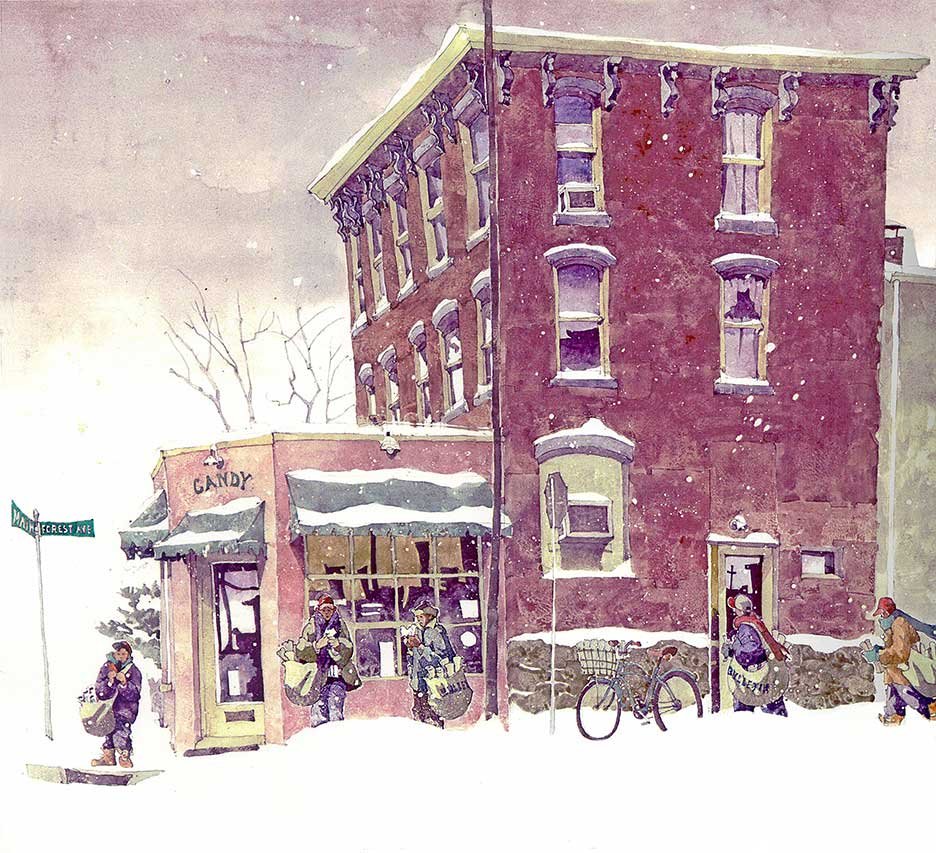
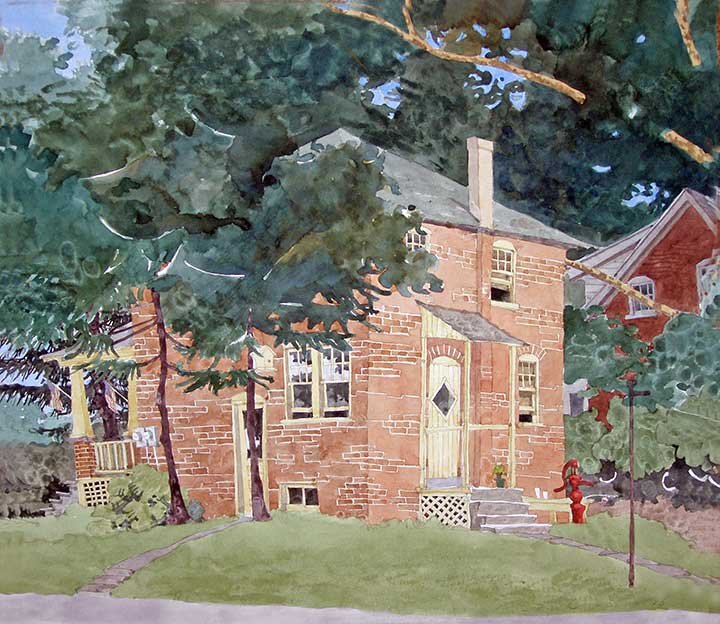
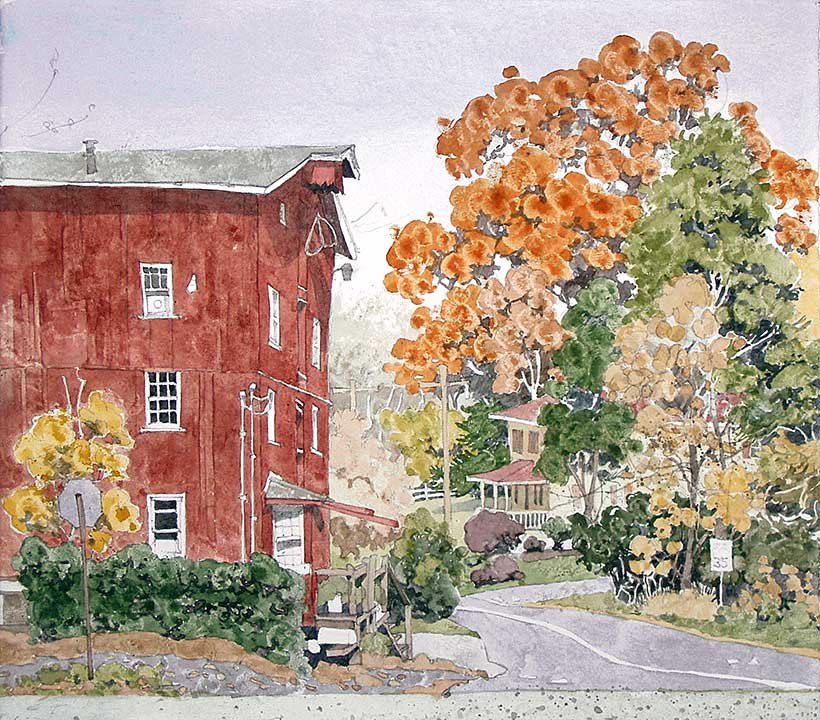
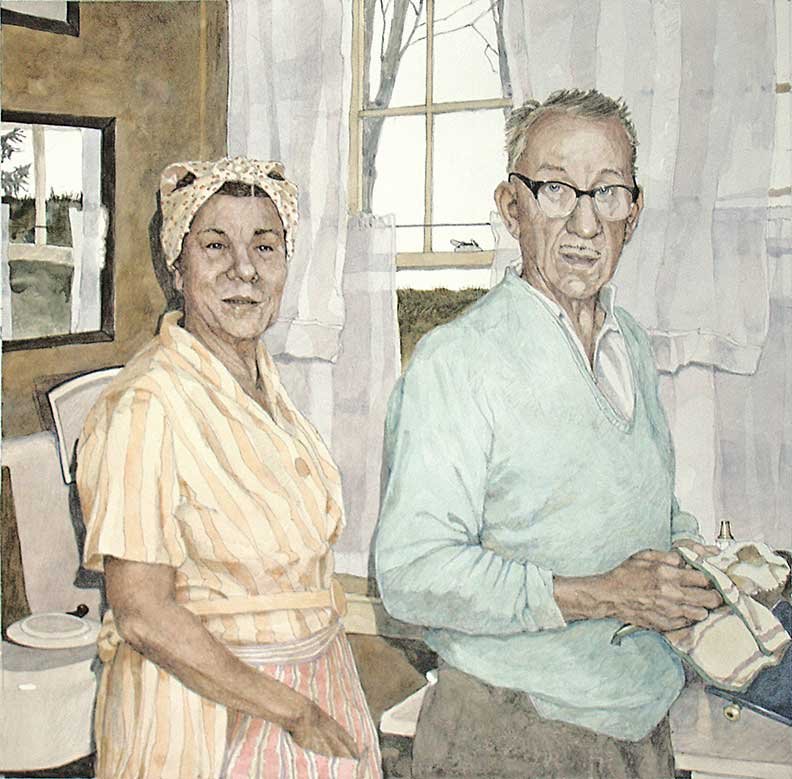
Tapping the Fountain
By 10th grade I was committed to living life as an artist, making it my job. I had always been one, but it took me until then to realize the possibility. Art had only ever meant illustration. After a year and a half immersed in a competitive commercial art college, I abruptly quit, moved into the city and began to freelance. I was not a success. I made the rounds repeatedly, dressed in my interview clothes, displaying my best work and was occasionally hired, not often and never twice. Having an art director’s expectations to consider left me stifled. My own point of view was yet to be discovered. I painted signs, murals and décor-abstracts for subsistence.
One day a friend spoke to me. “You are an artist”, she said, “stop calling what you do art, just call it work and know that everything you do is art.”
That approach set me free. A fountain of self-expression began to pour. I quickly left Philadelphia and moved to Maui with less than $100, some paint, brushes, a few sheets of paper and a passion. Thanks to determination, a series of miracles, and an angel named Sandy, I am still here 38 years later. The fountain continues to pour.

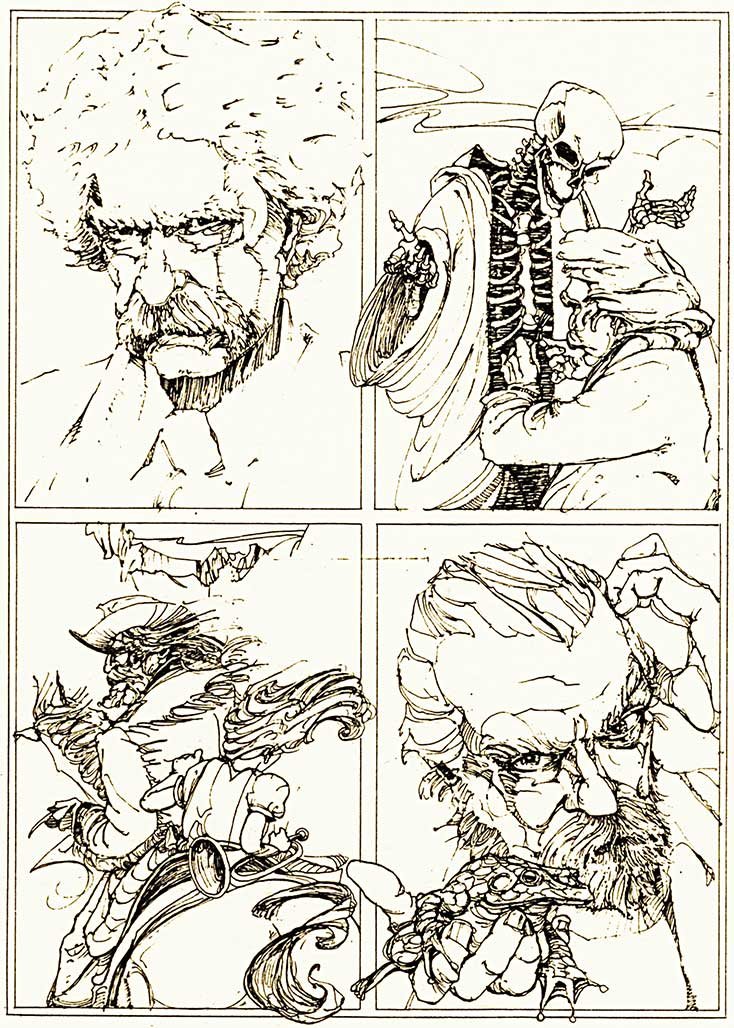
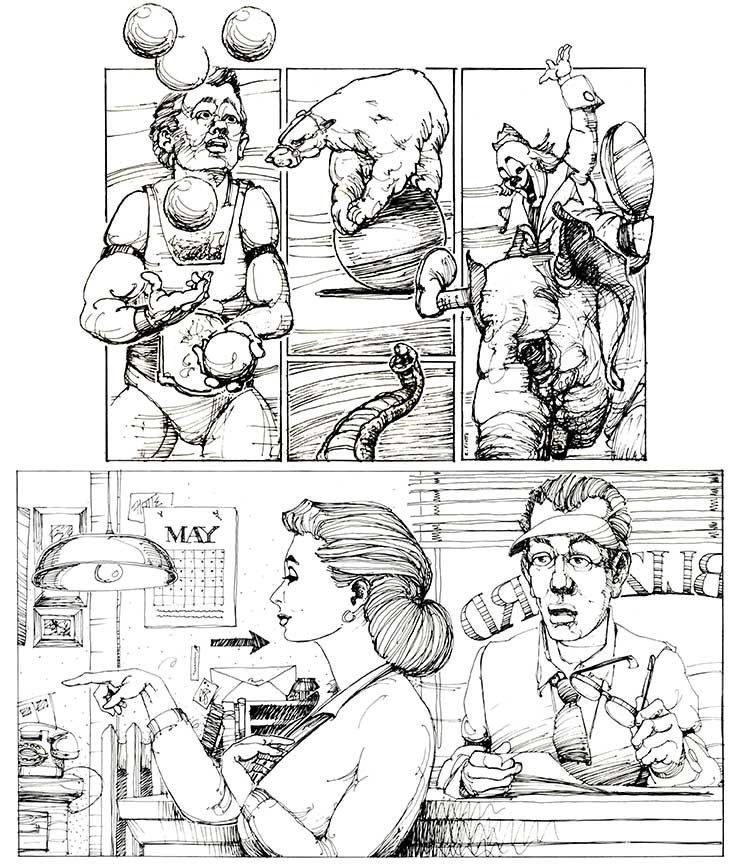
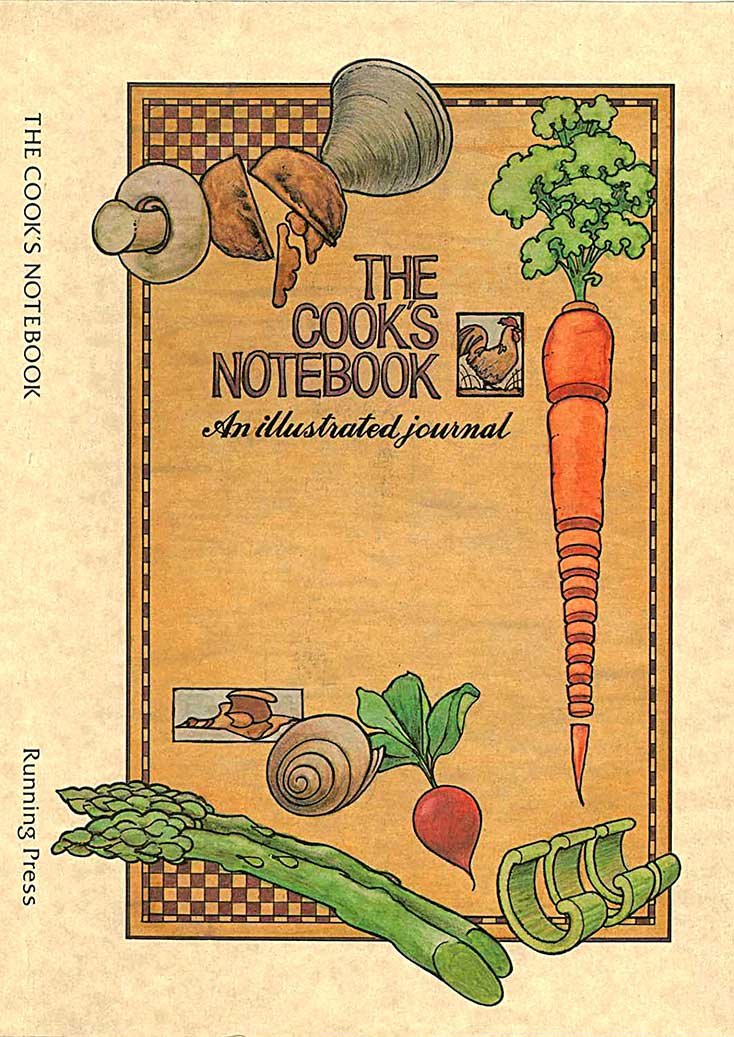
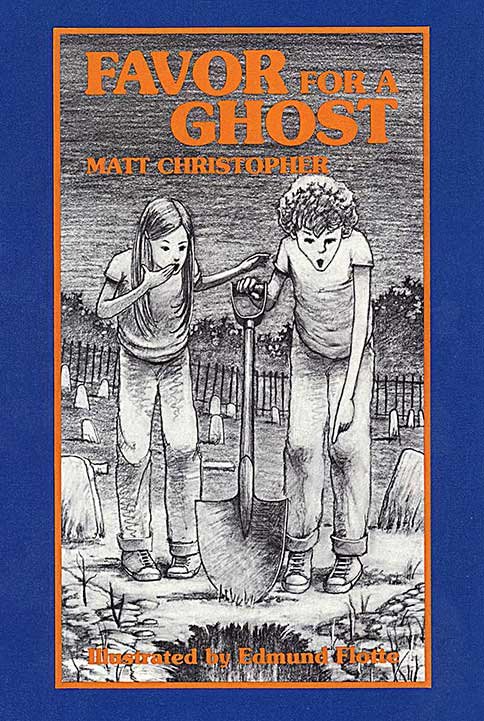
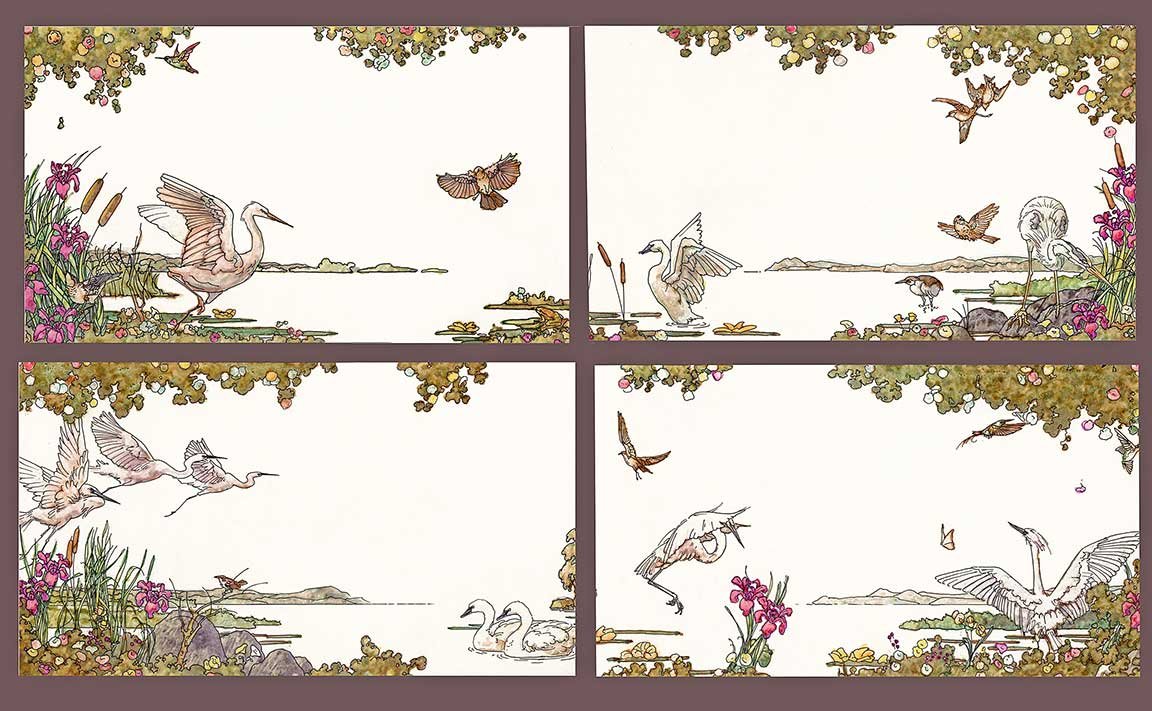
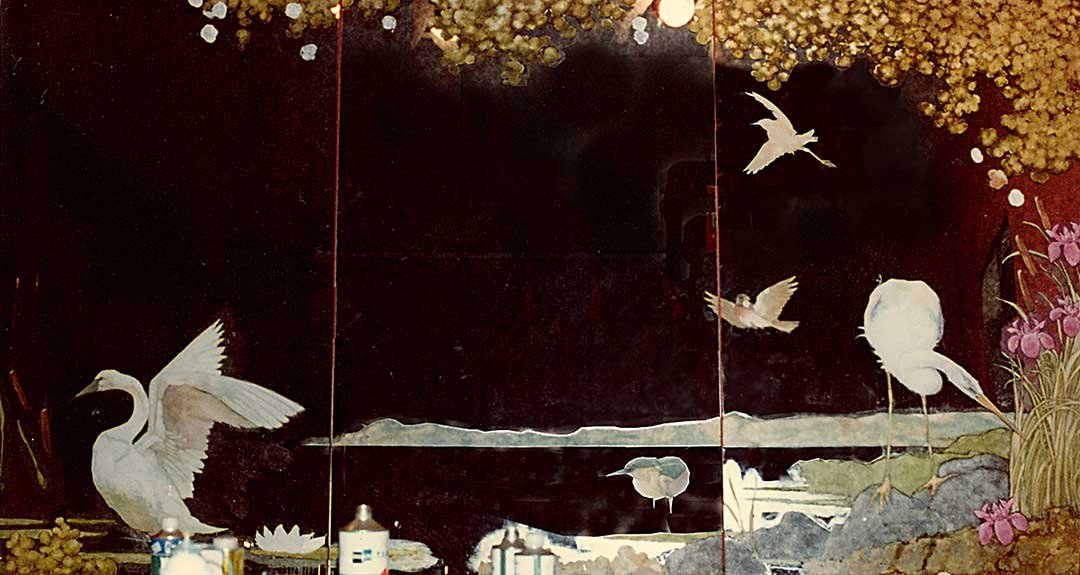
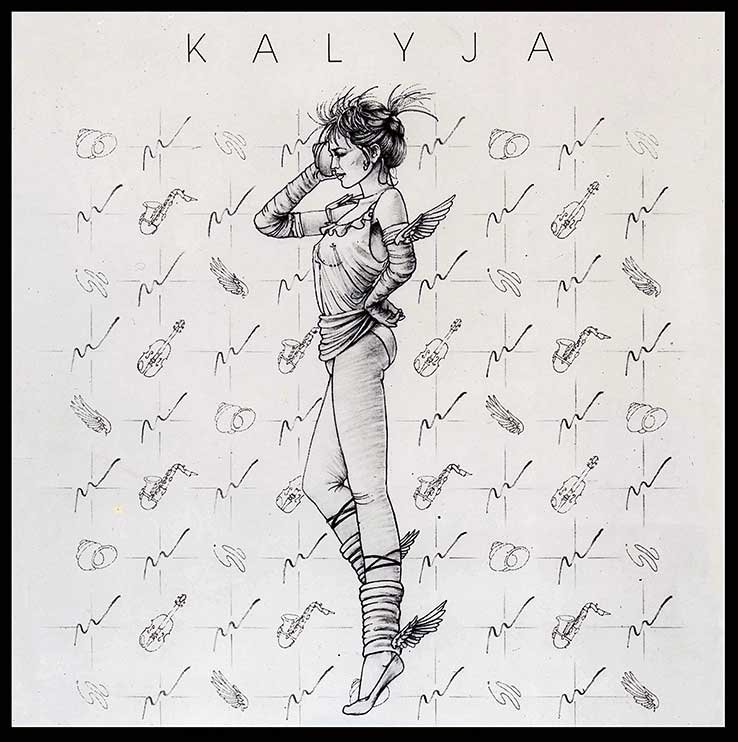
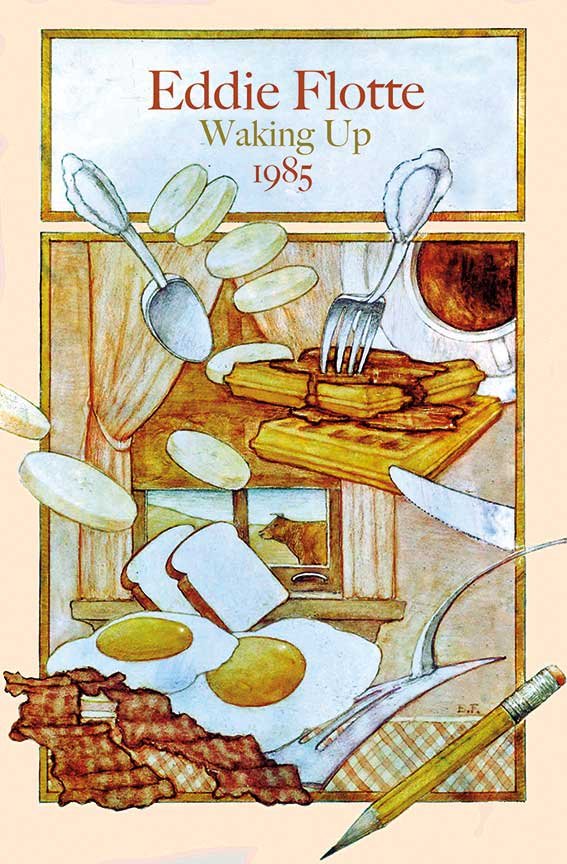
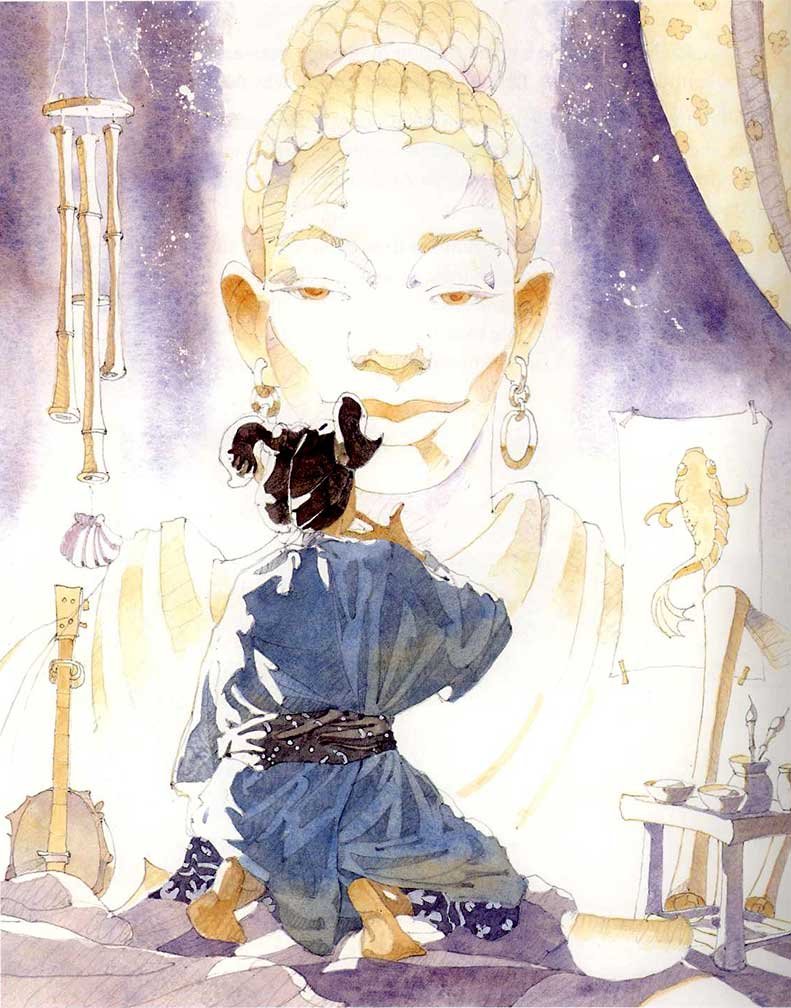
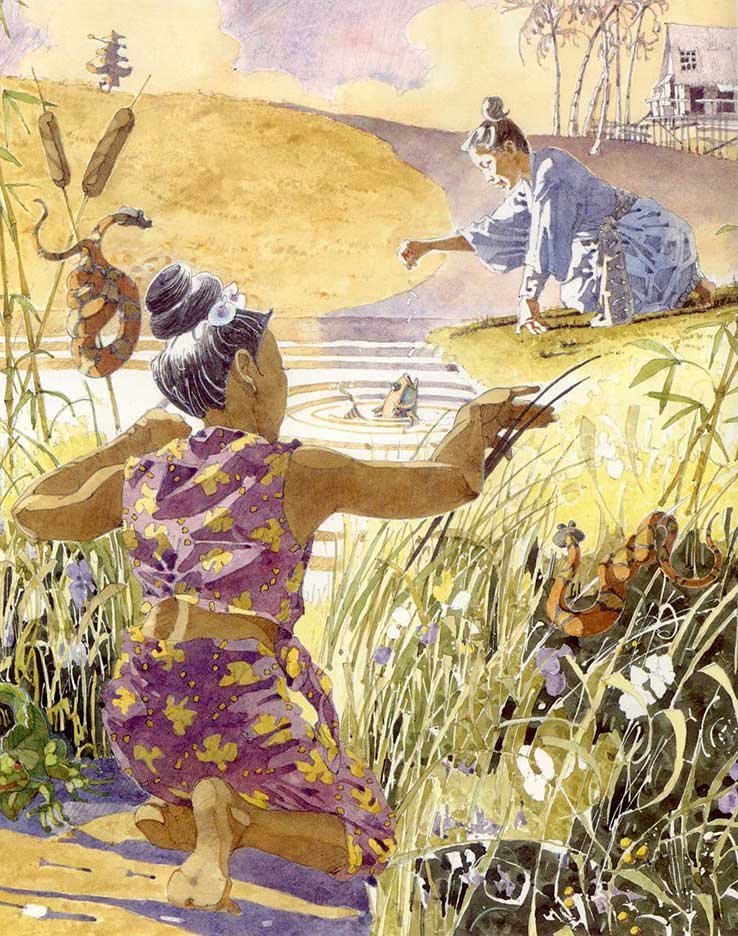
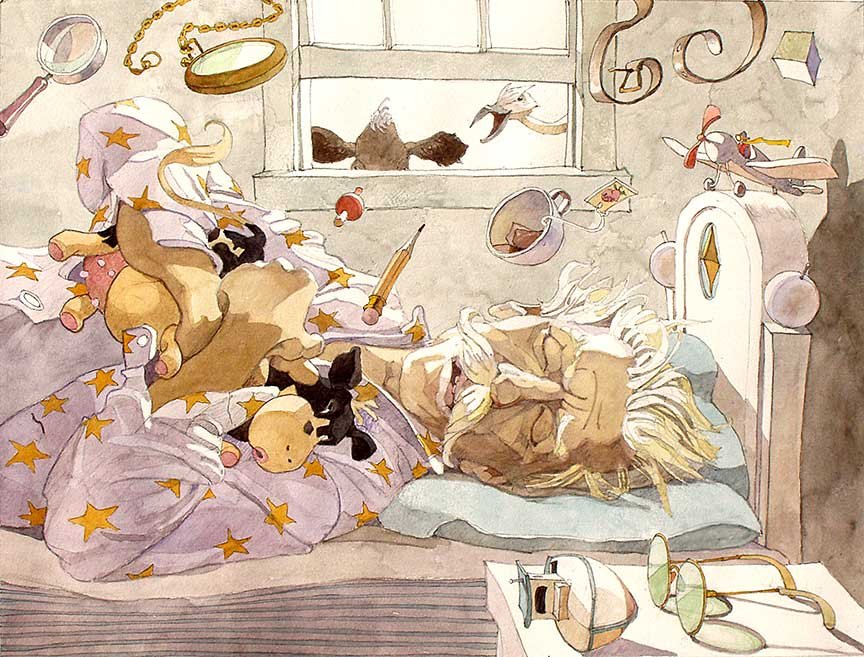
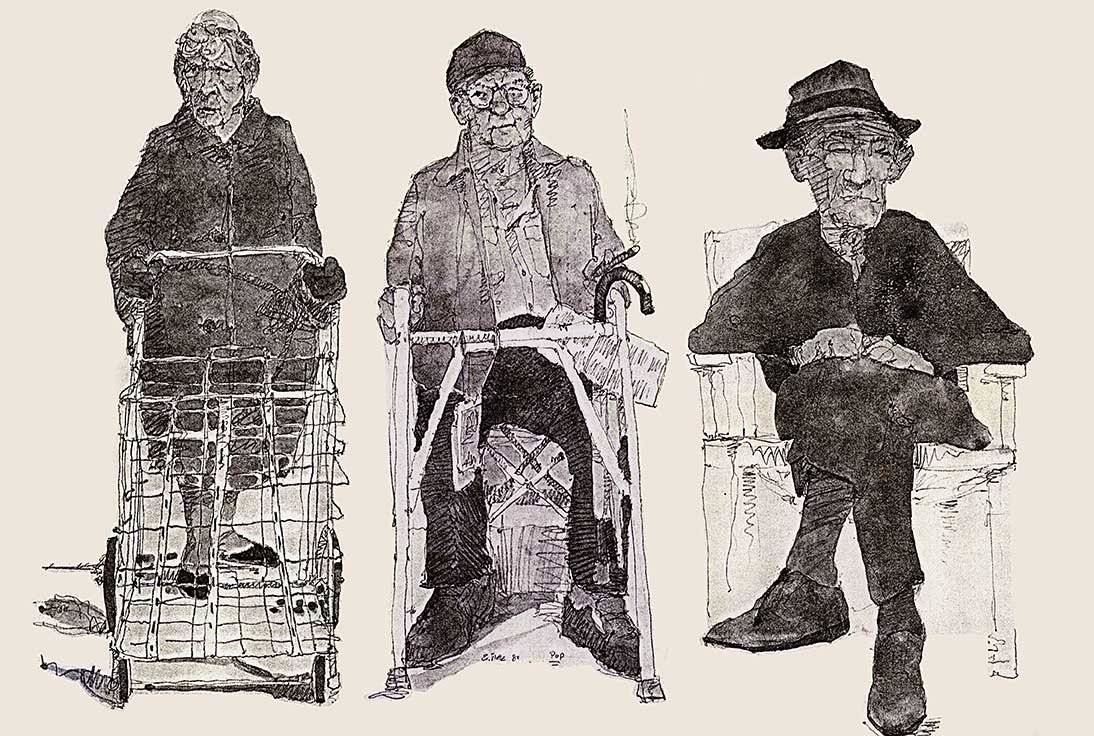
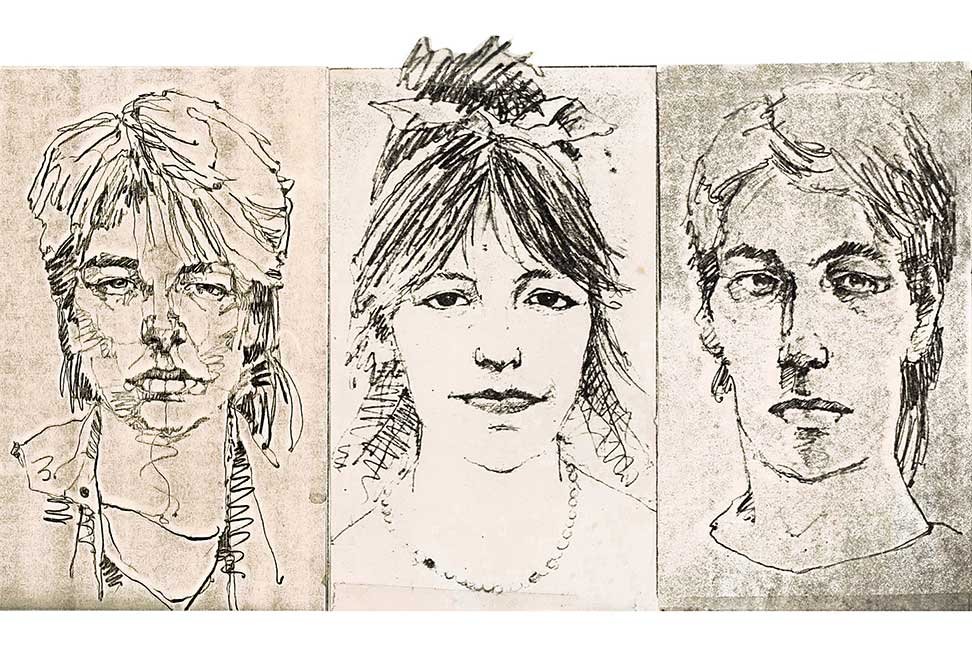


Paia, Maui. 1985
I discovered Paia at 11 PM, March 4th, 1985; It was pouring rain. I had just arrived and was lucky to be picked up at Kahului Airport by a friend, John Travis. John took me to his home on Hogback Road in Haiku. As we passed through Paia, its crooked wooden facades, weathered tin roofs and pulsing spirit called to me through the downpour. John kept me dry in Haiku until the rain finally stopped weeks later. The sky broke one day as we passed through town on our way to Lahaina. I jumped out and began to paint: Horiuchi Market and the closed down Chevron Station which sat adjacent.
By the days end I had traded both paintings to the Horiuchis for a week’s worth of pre-packed tuna fish sandwiches and had been invited to camp in an abandoned burned-out building at the top of town with some European wind surfers. I fell off to sleep there on the floor smiling and protected by a burning mosquito coil.
Paia seemed frozen in a time gone by. Maui’s sugar and pineapple industries still bustled, and the flavors of that lifestyle called out to be immortalized. I saw myself as perfectly placed at the perfect time. Paia remained my prime focus for the next 11 years.
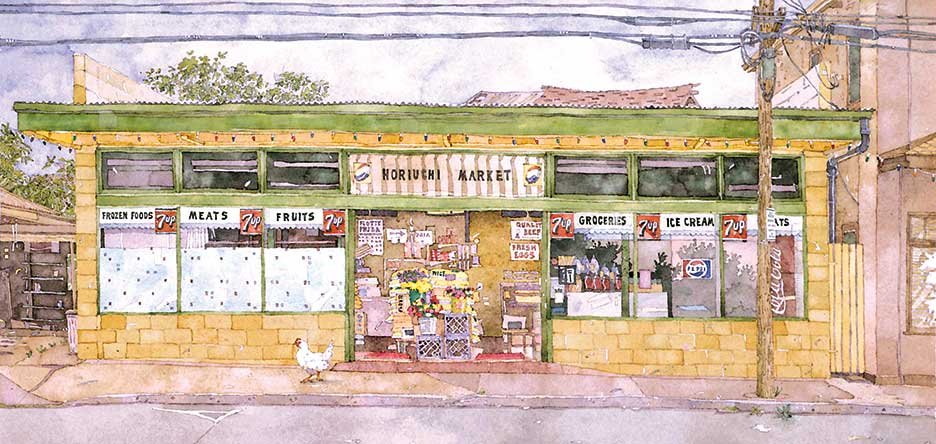
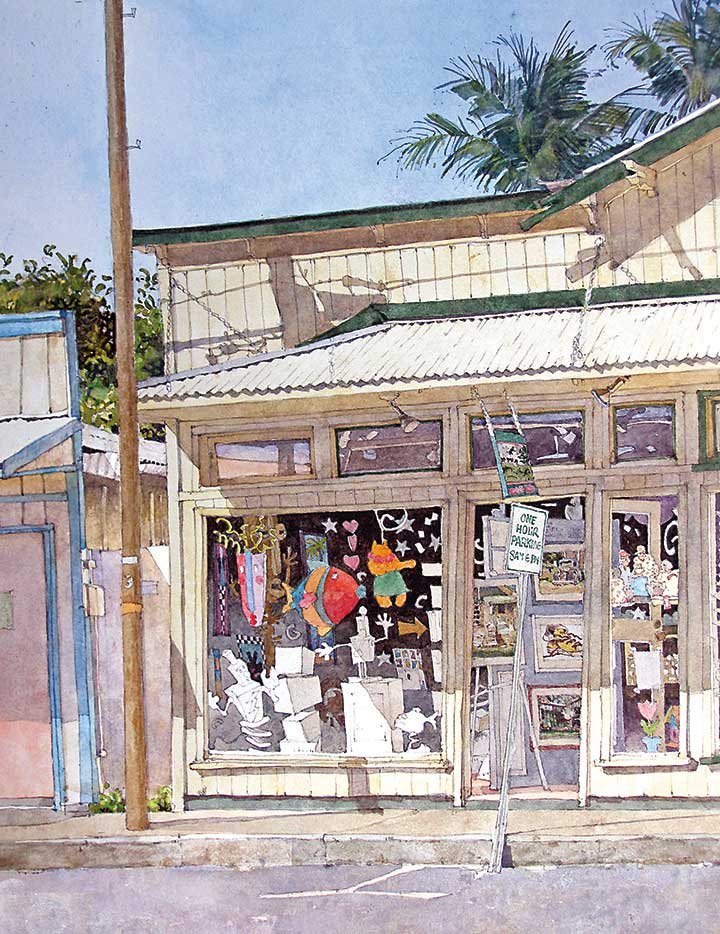
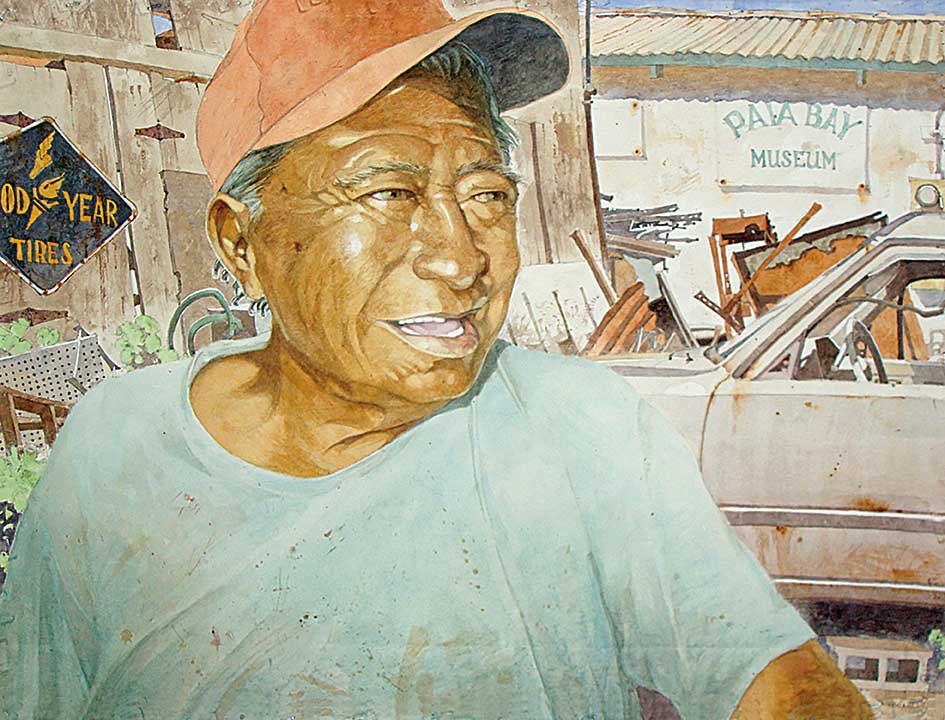
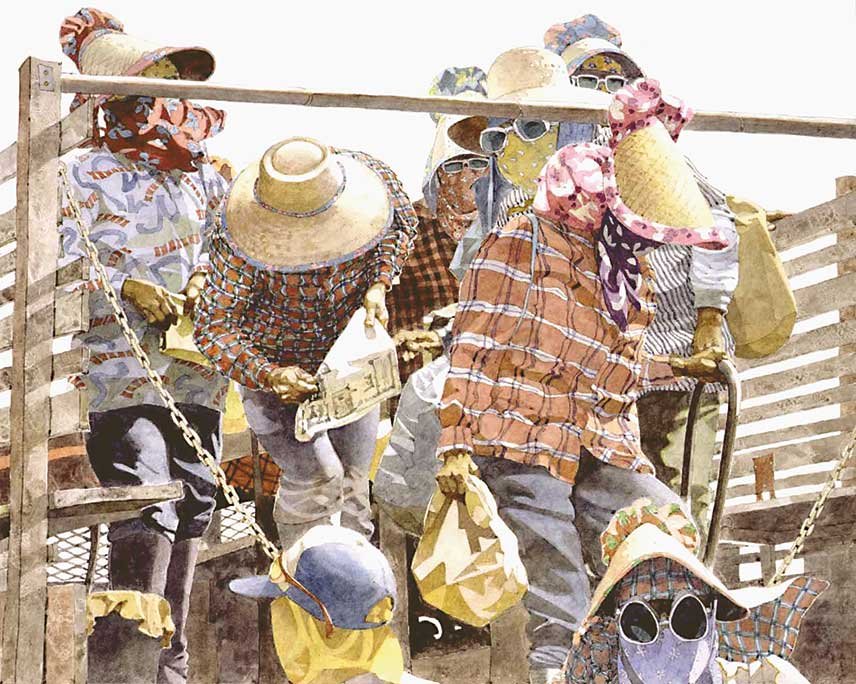
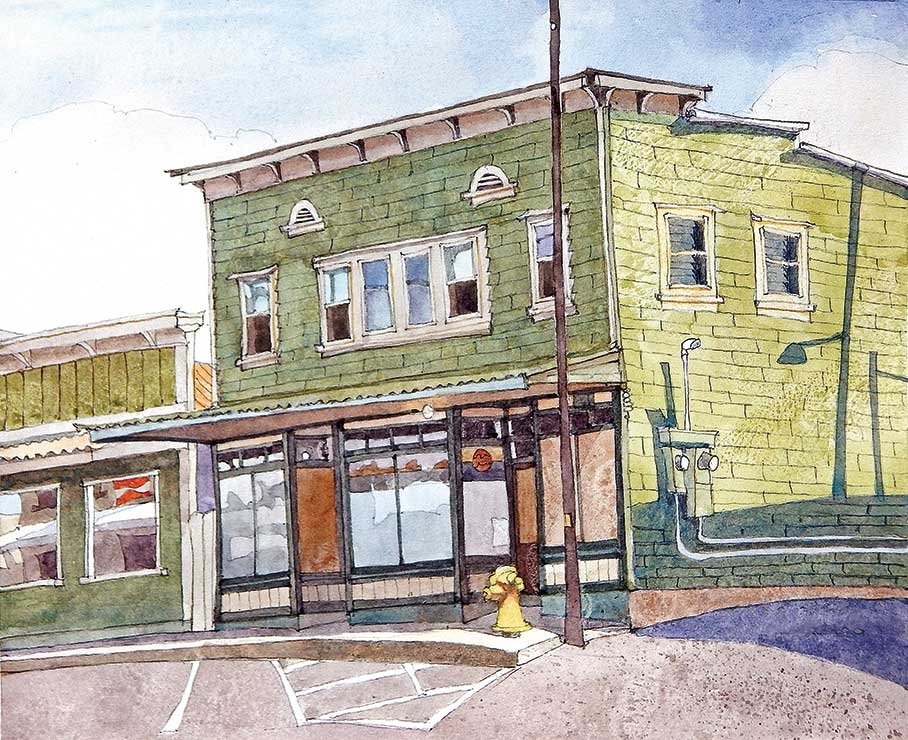
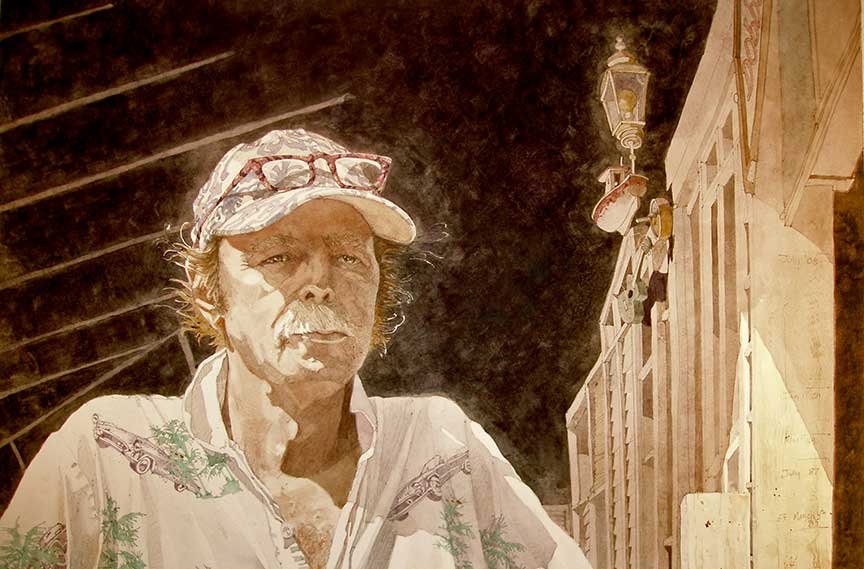
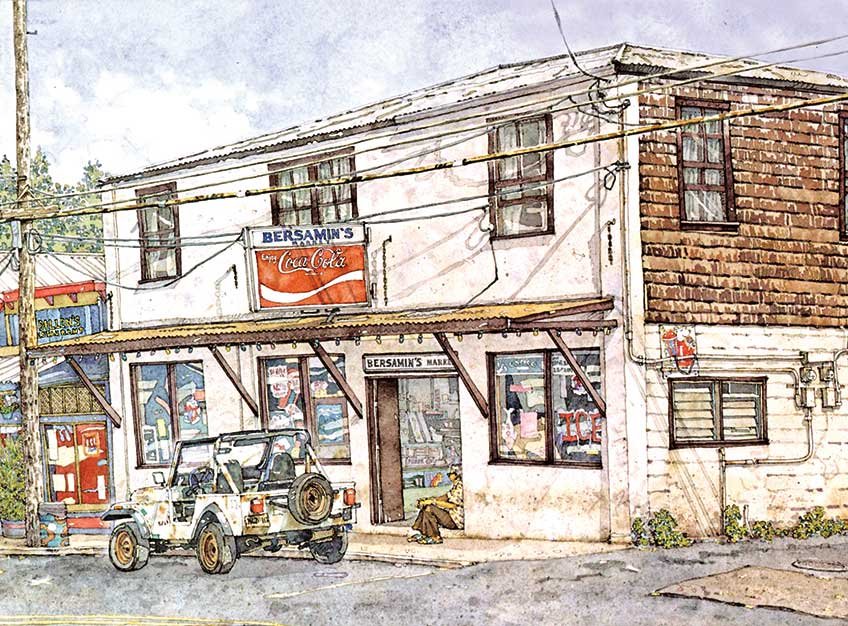
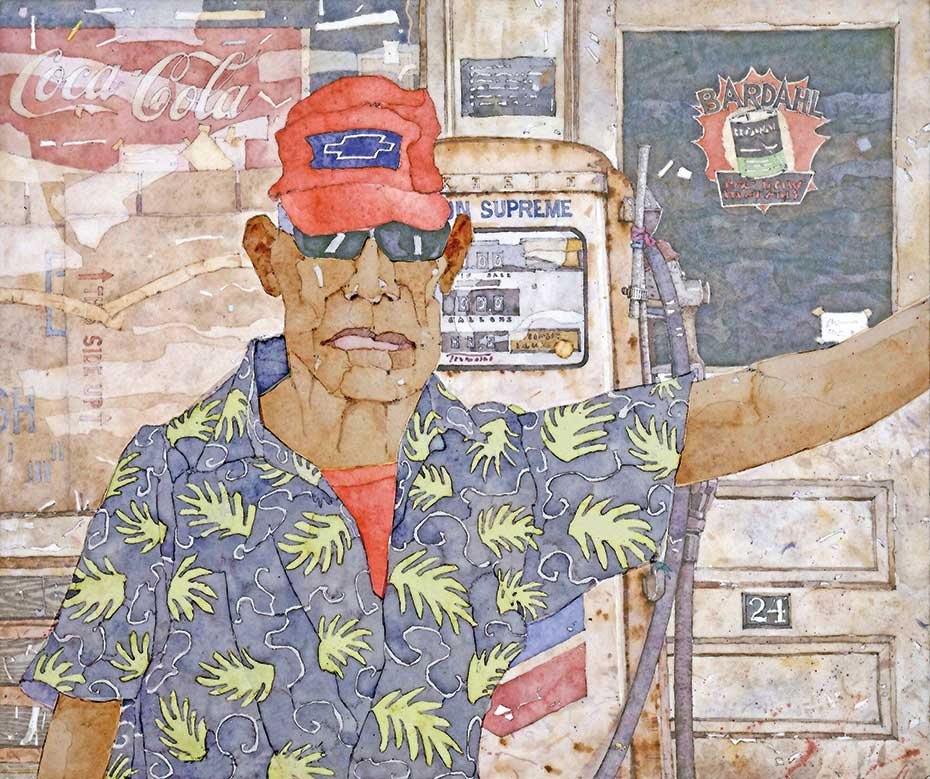
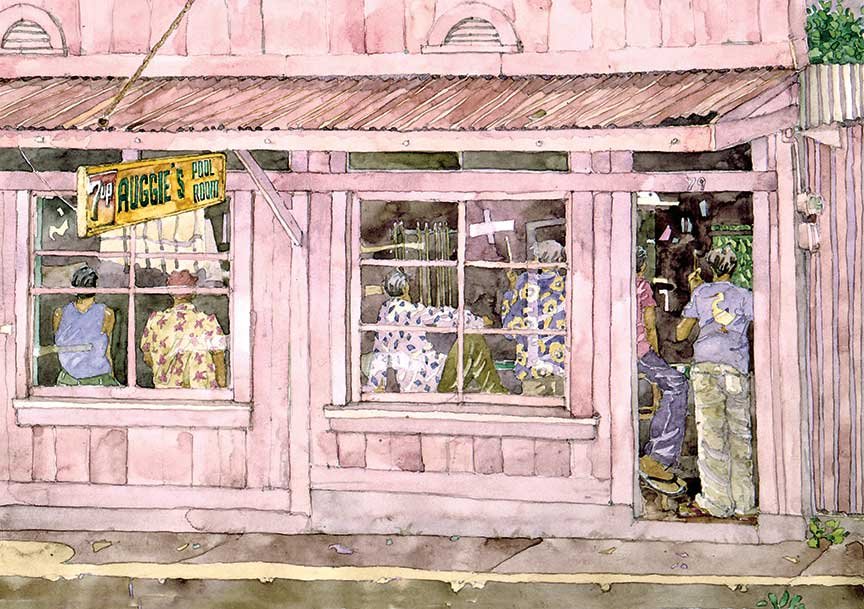
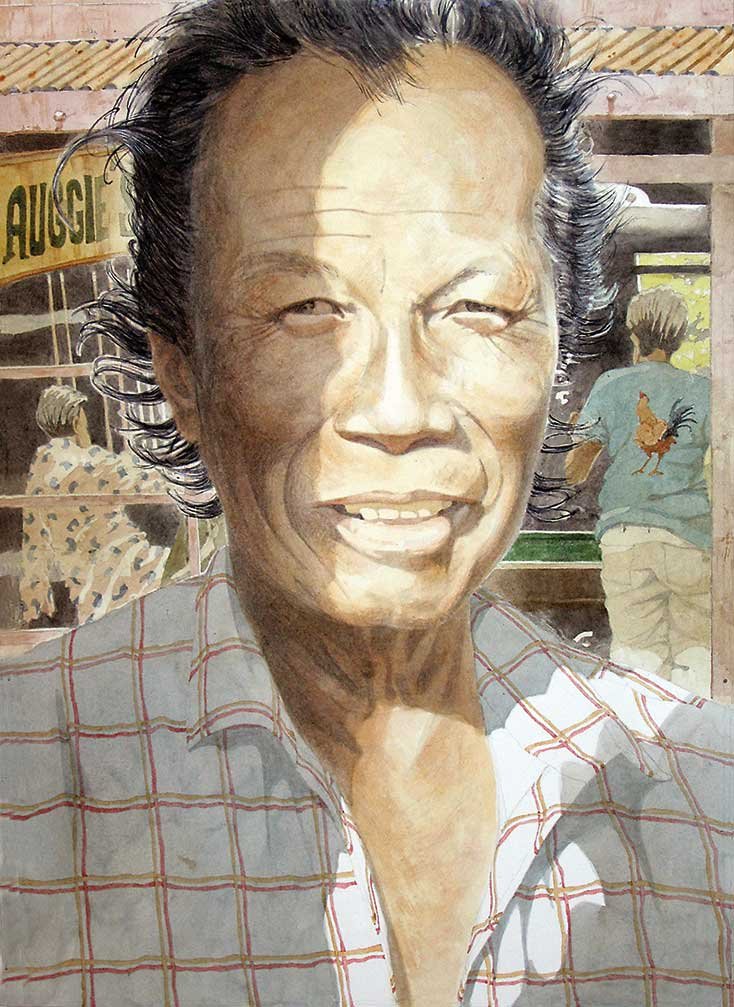
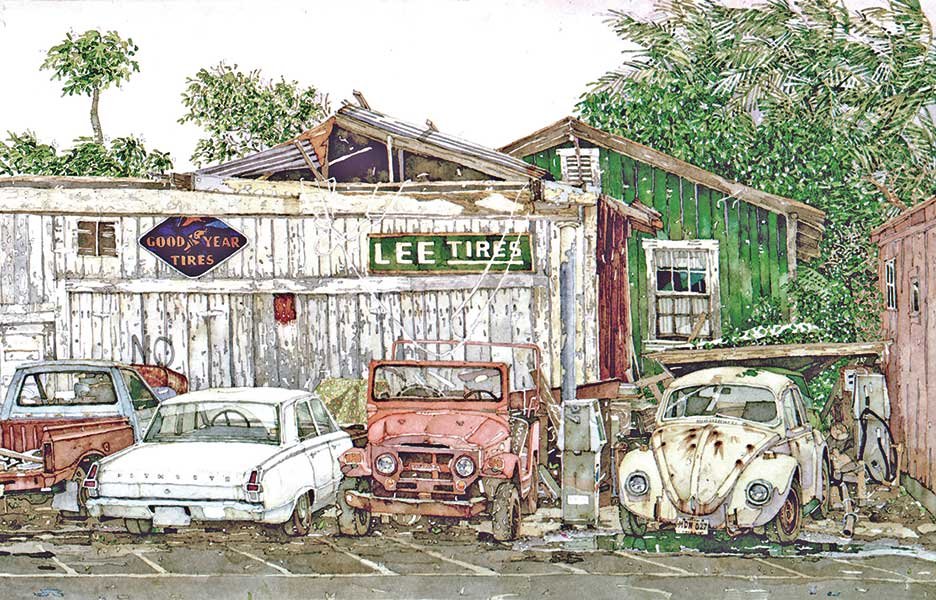
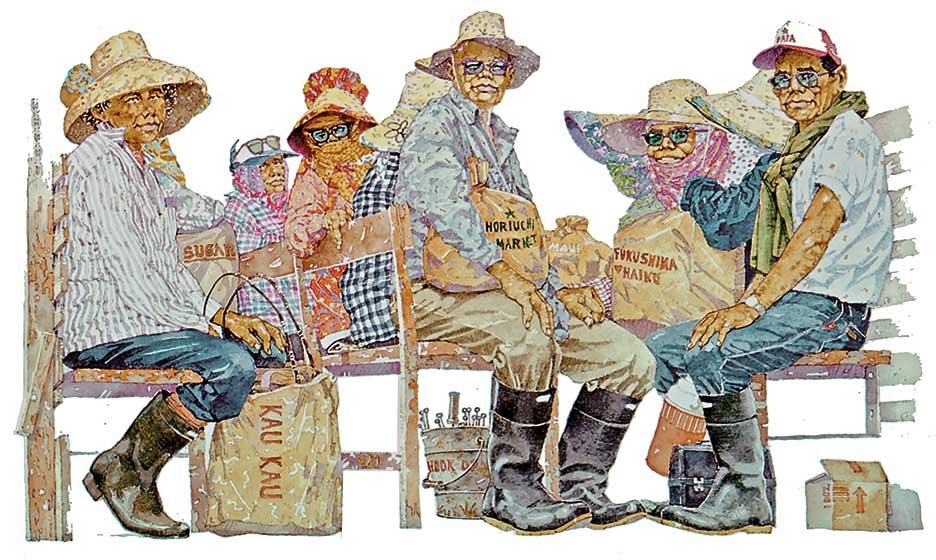
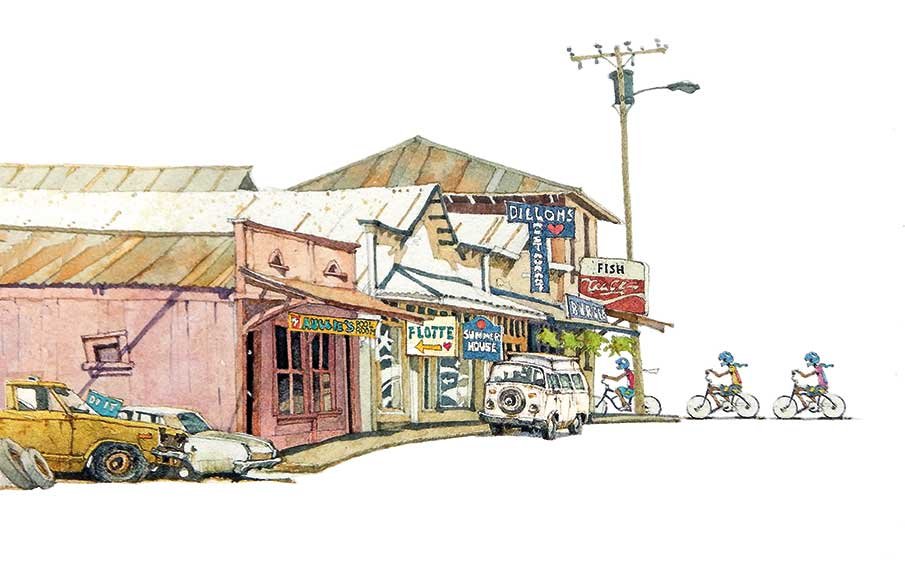
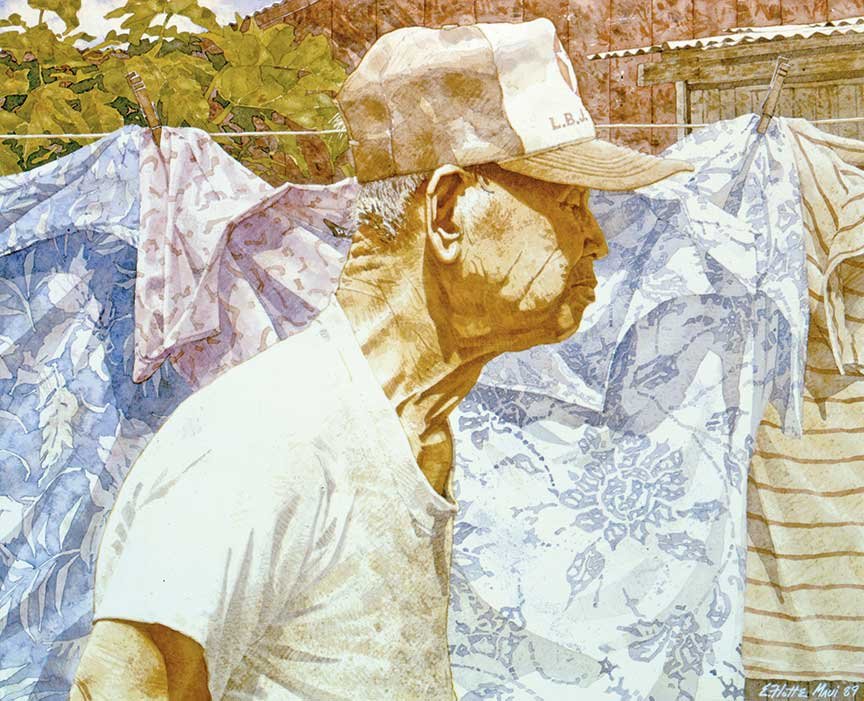
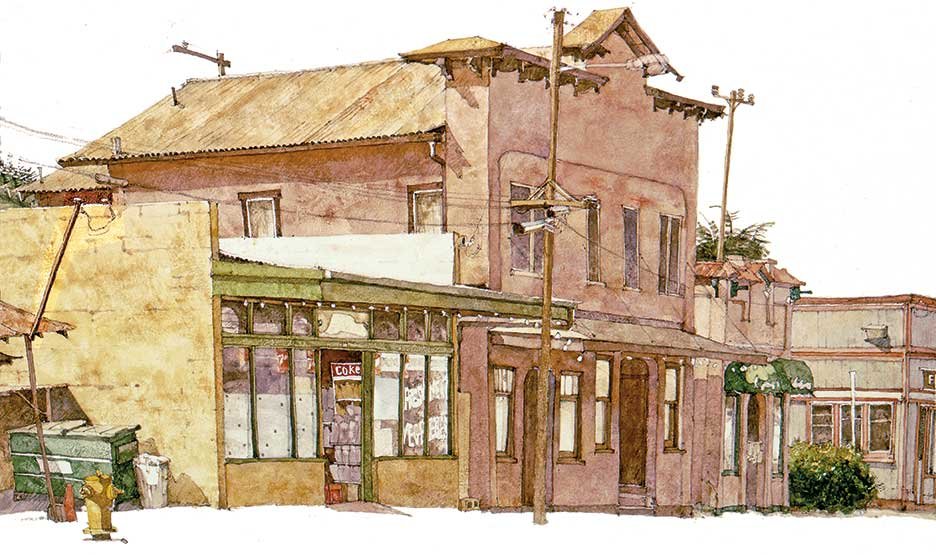


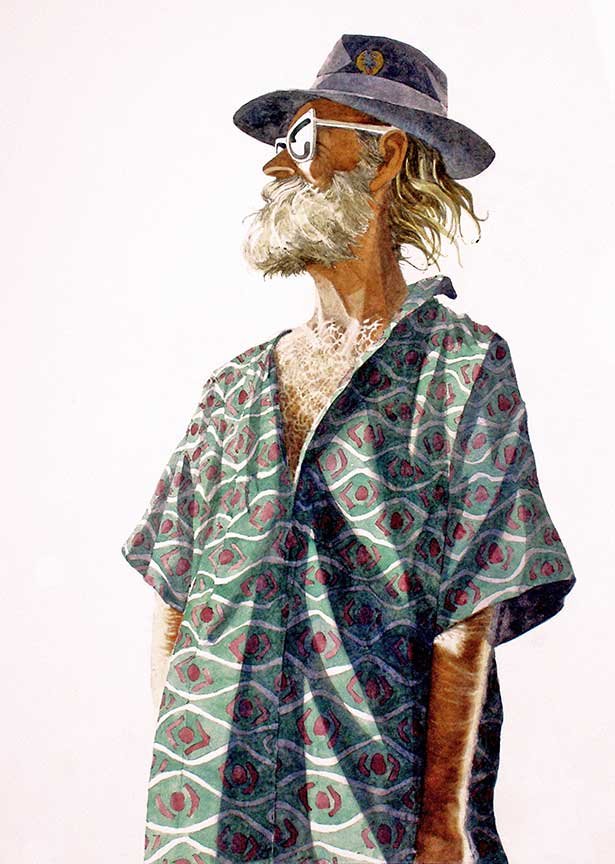
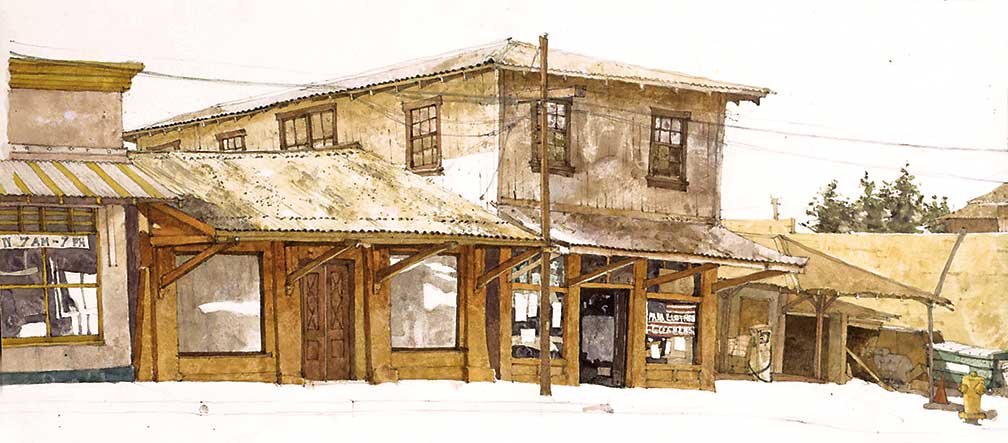
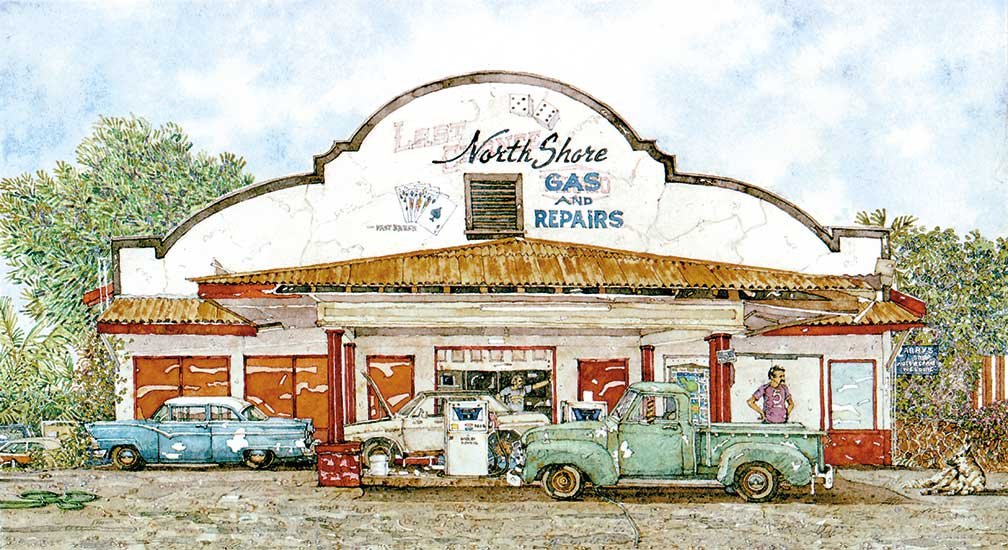
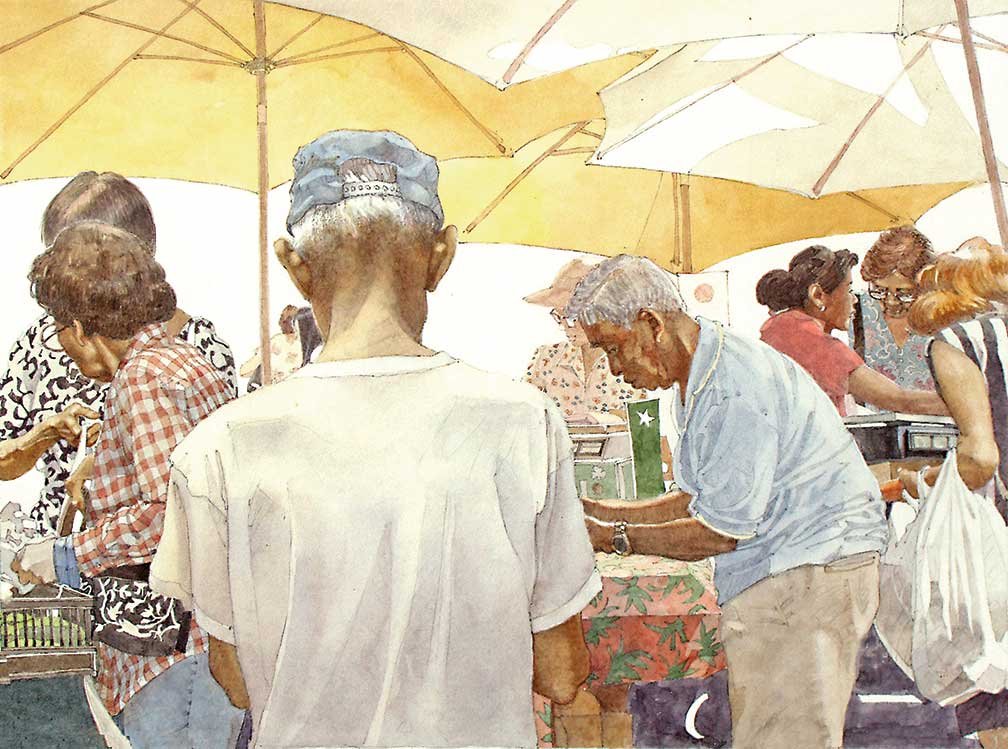
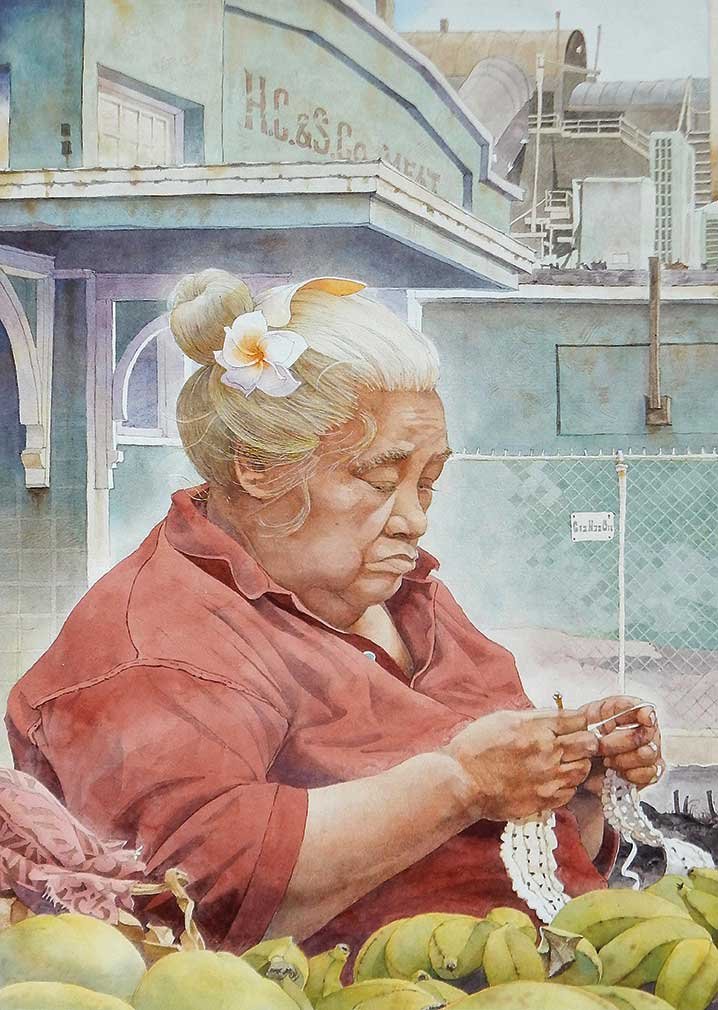

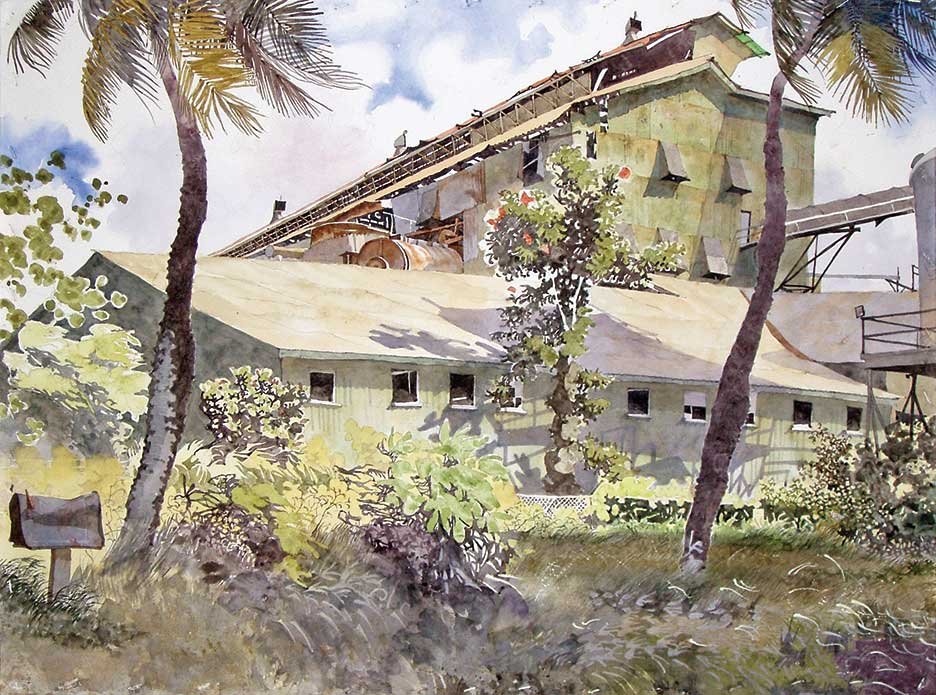
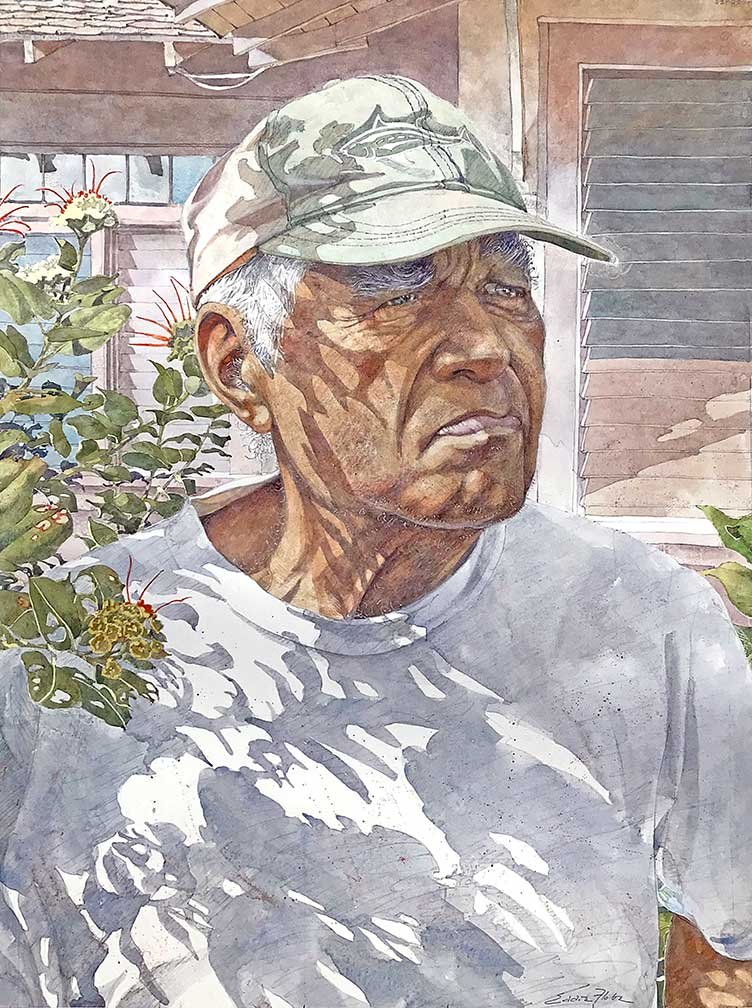

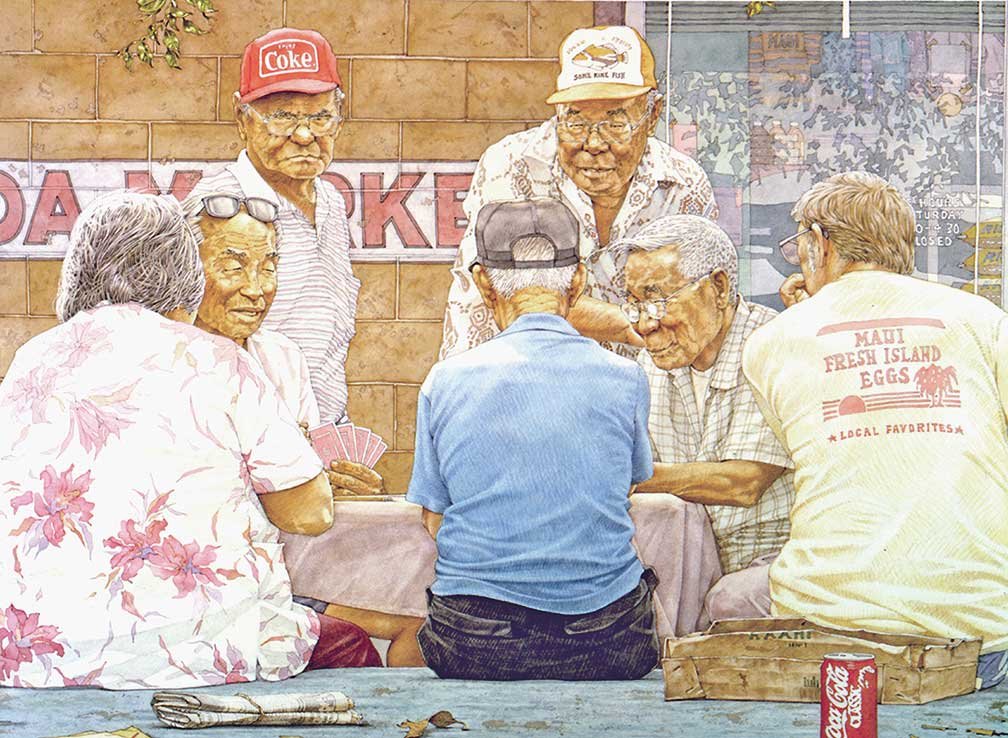
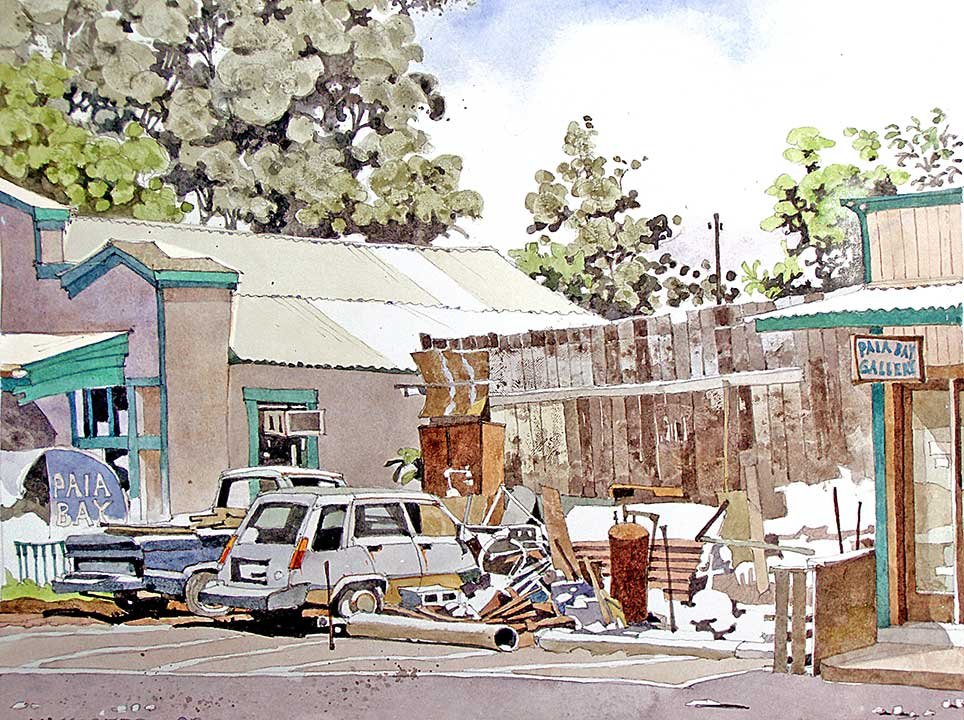

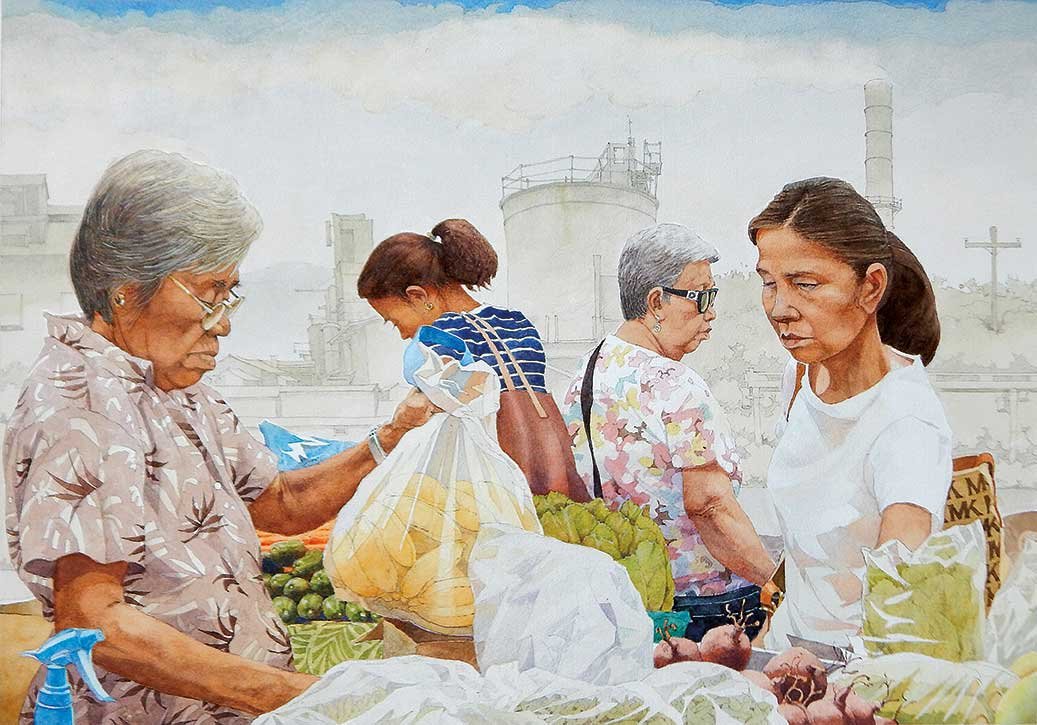
Upcountry
After meeting Sandy in her Lahaina Gallery, she brought me home to live with her and her mother, Shirley, in their plantation style bungalow in Makawao.
I began painting Upcountry in spurts right away, but after our gallery fire in 1997, and after moving everything up with us, Makawao and the surrounding places of interest from Haiku to Keokea became my focus.
Kitada’s Kau Kau Korner, The Haleakala Dairy and a string of beauty between our house and town kept me returning inspired to work countless times. Each walk through Makawao revealed a new composition waiting to be put on paper.
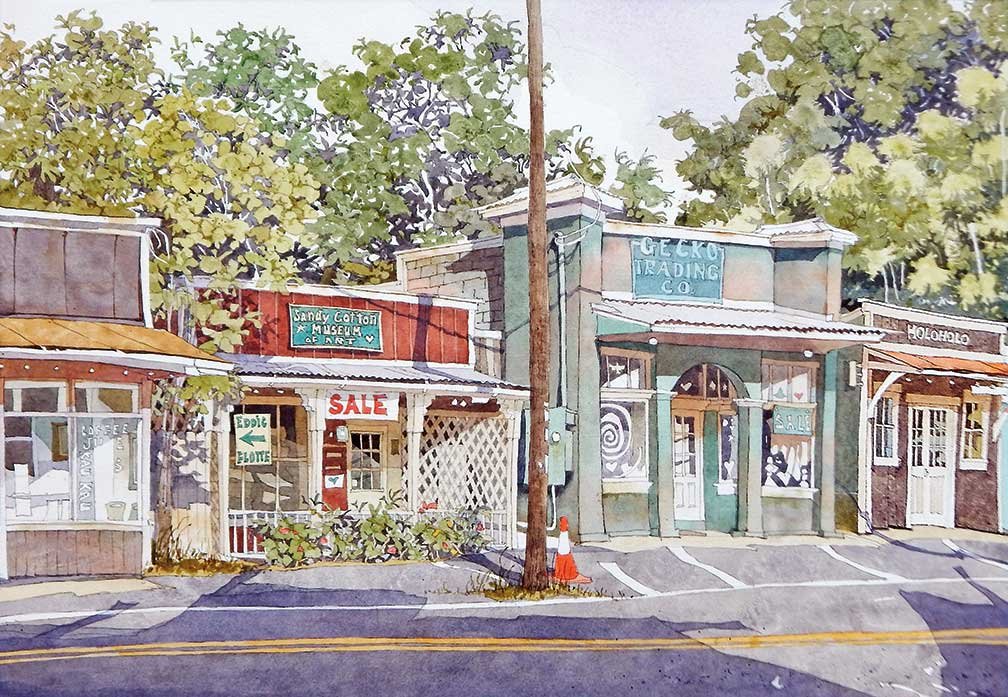
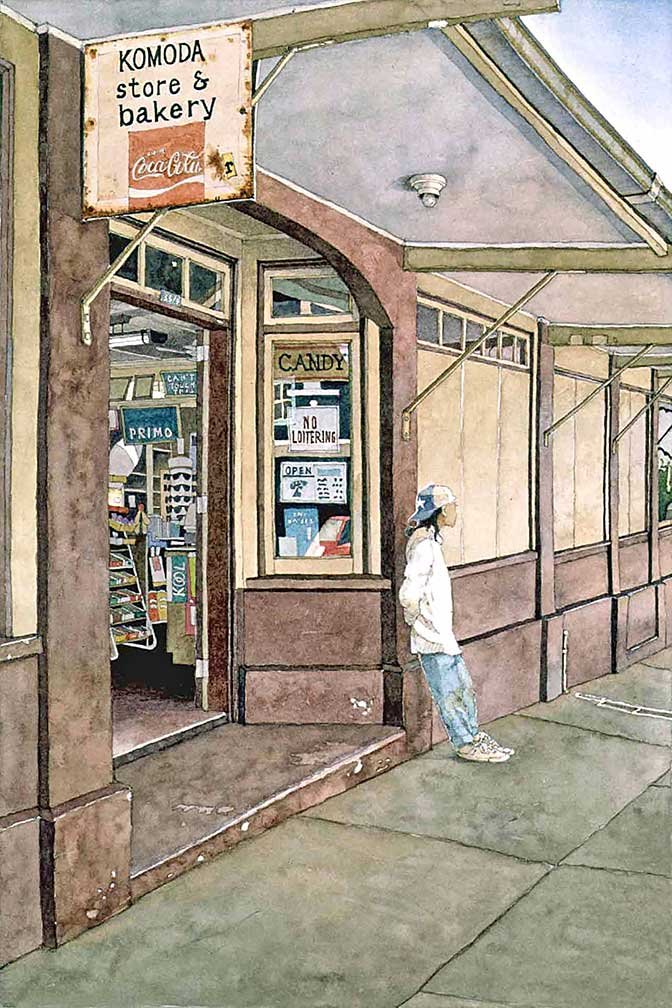
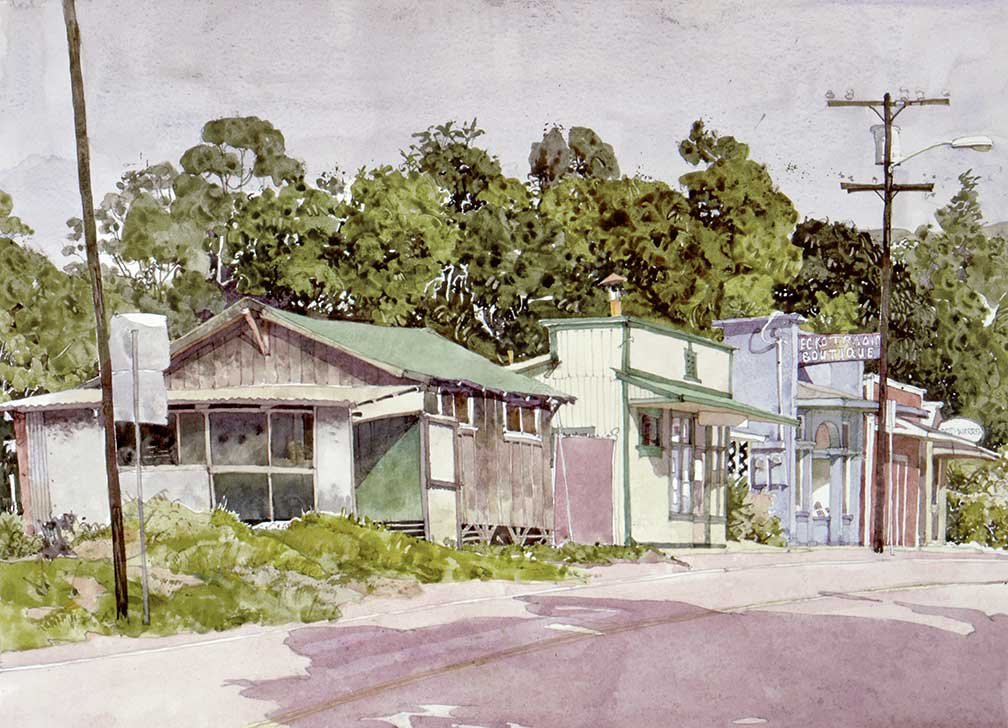
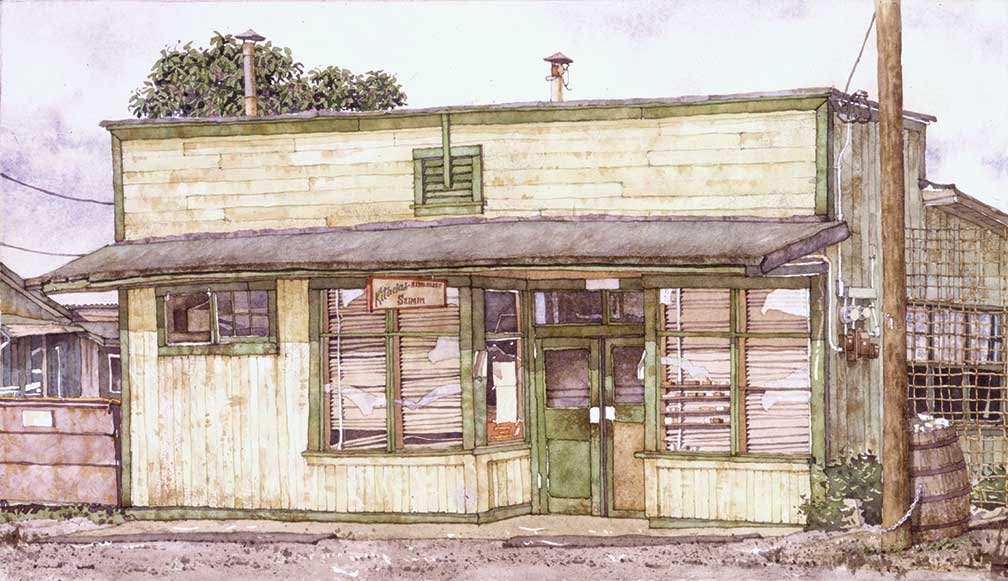

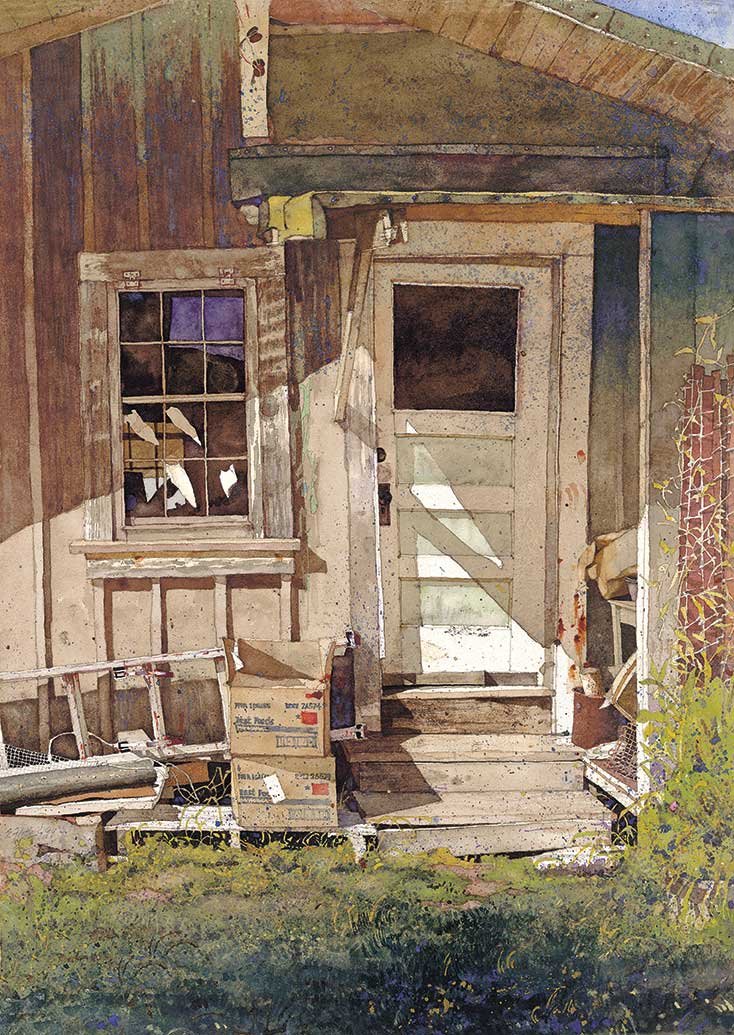
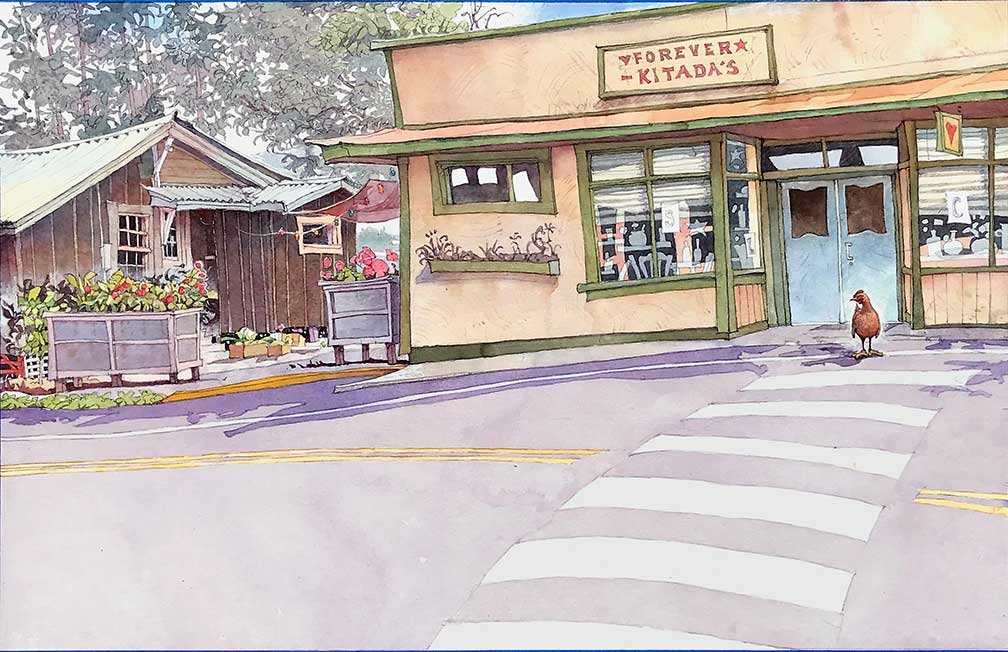
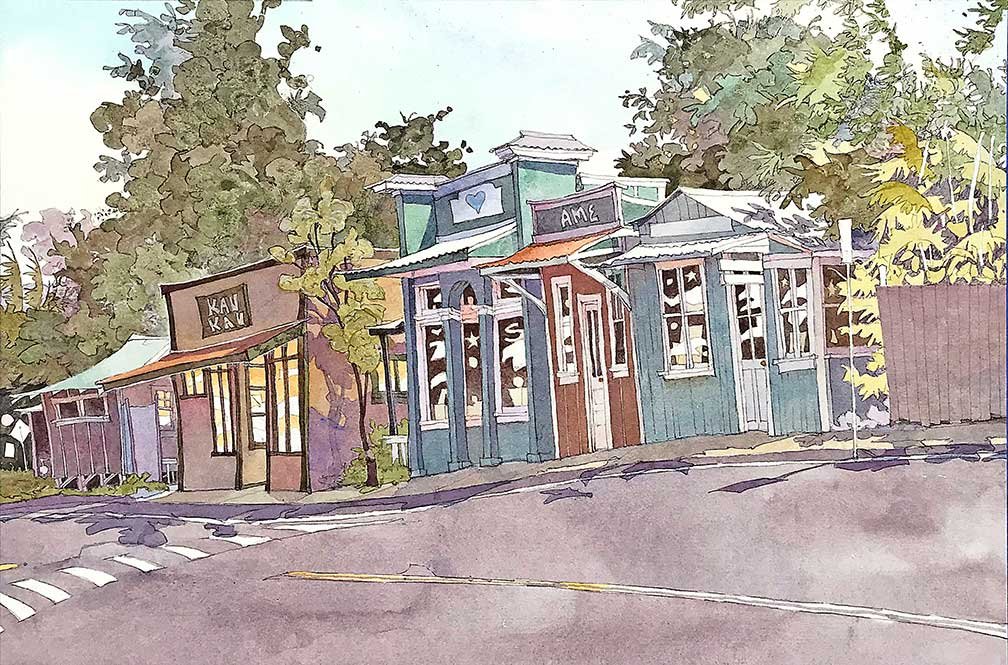

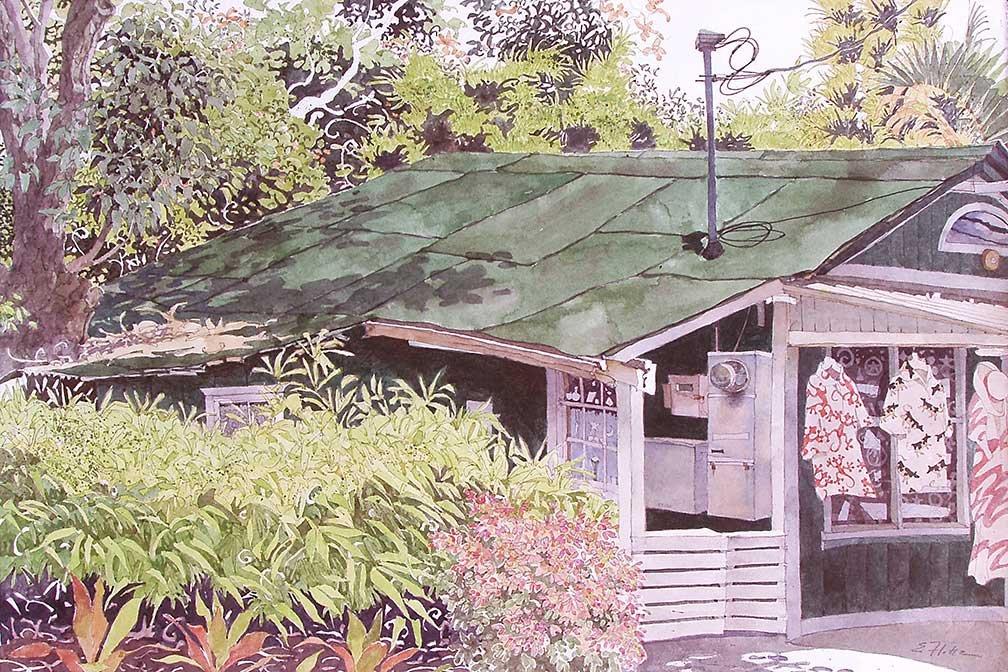
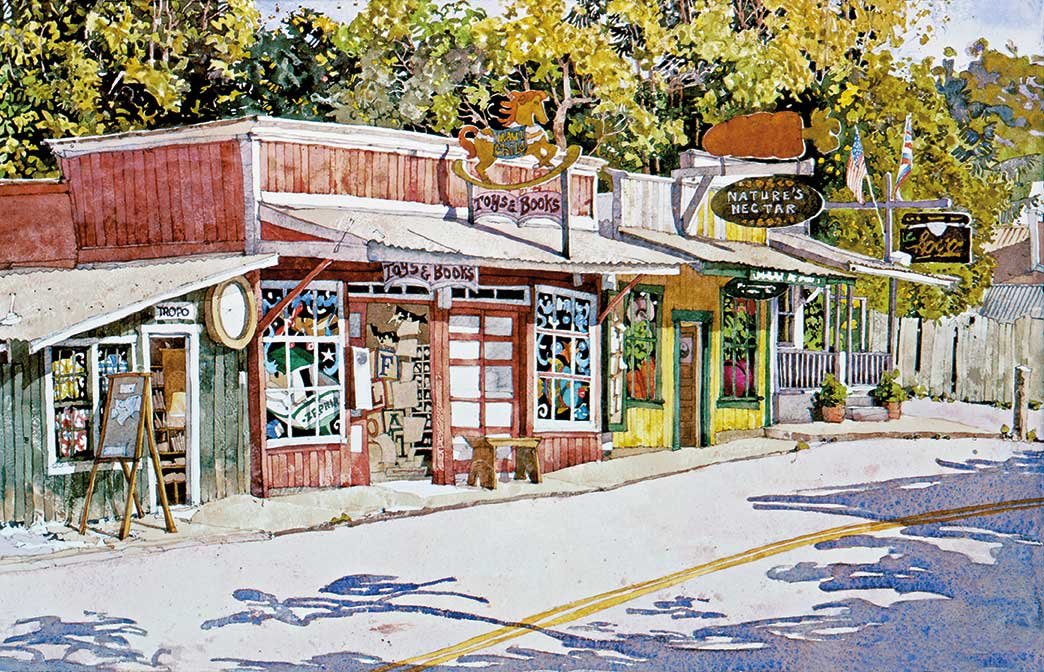
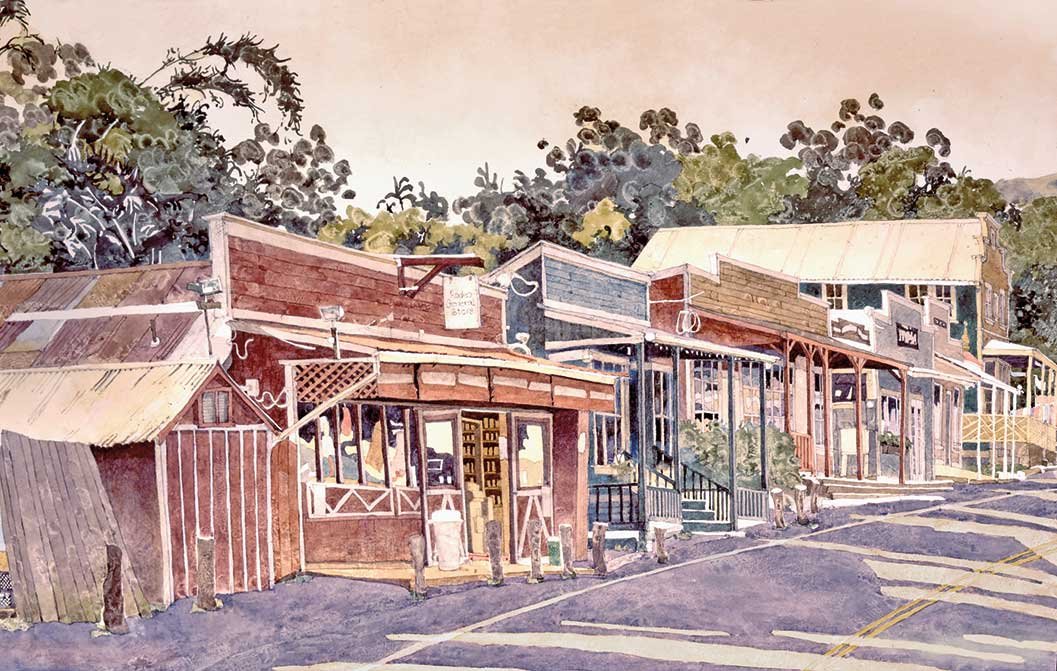

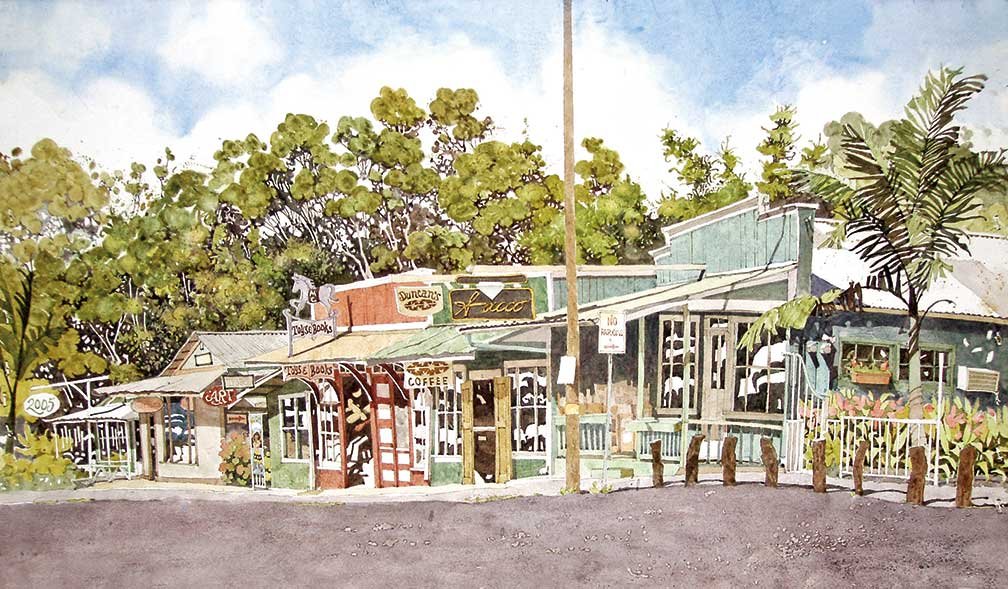
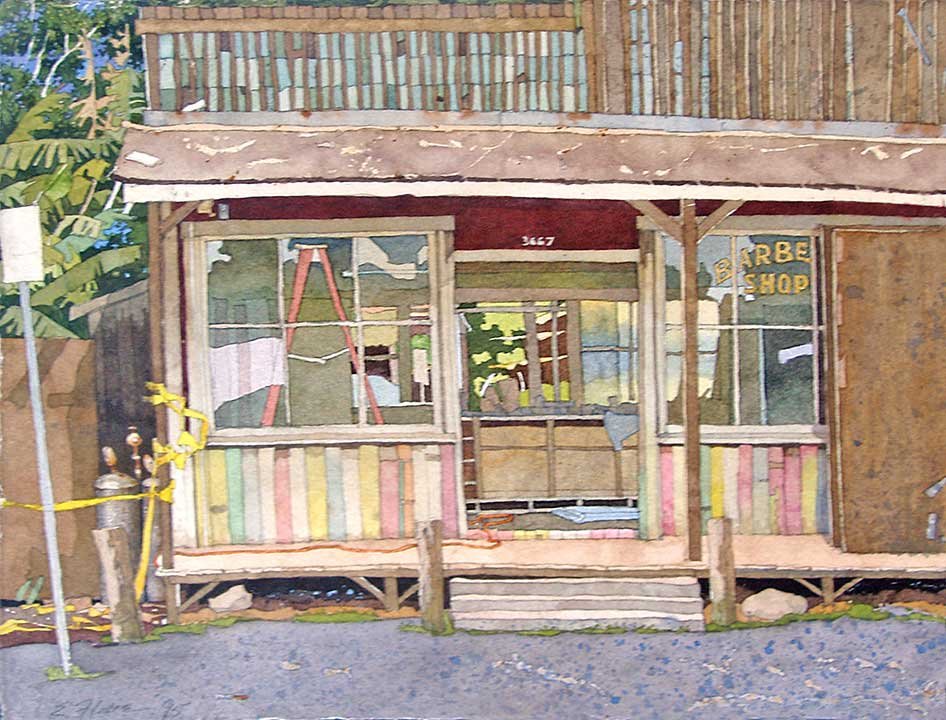
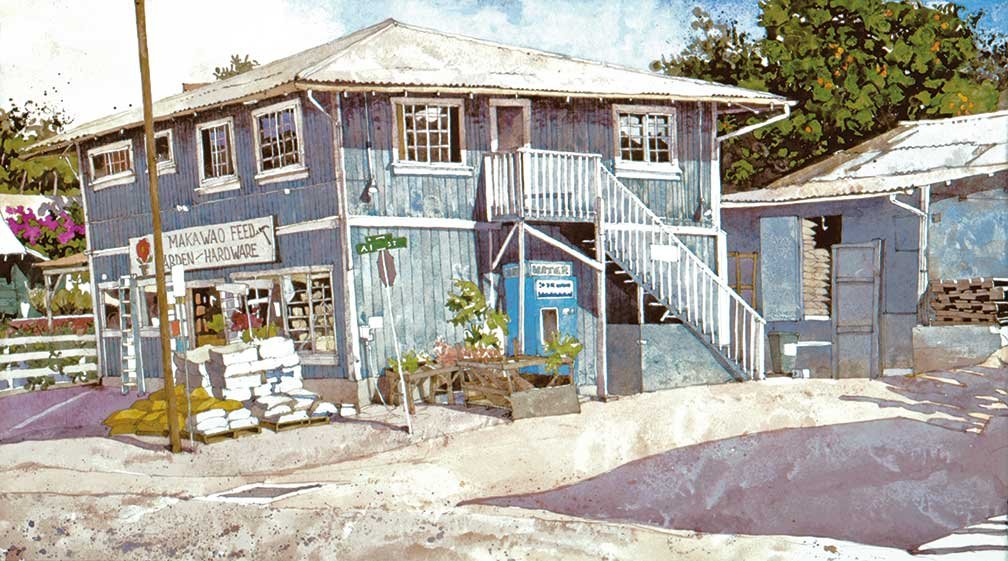

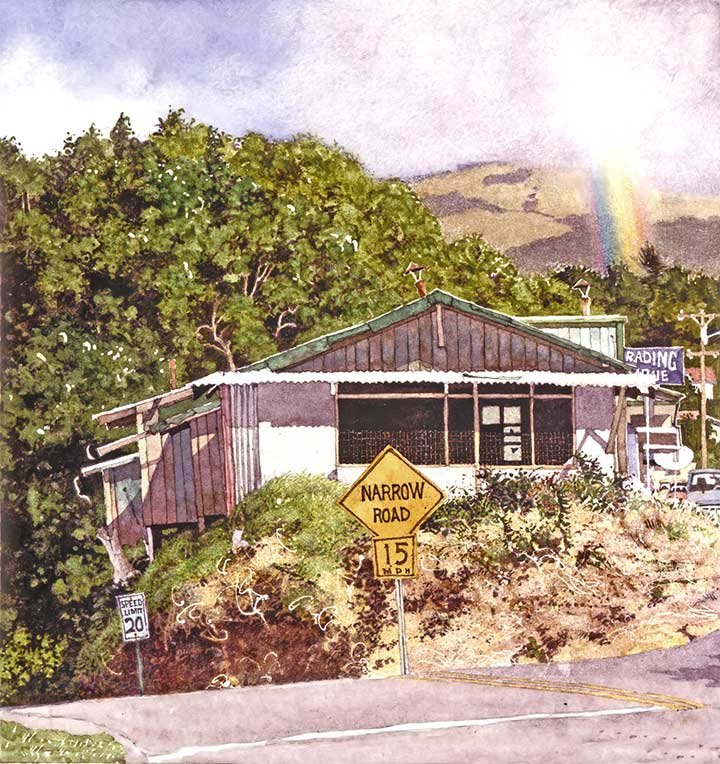
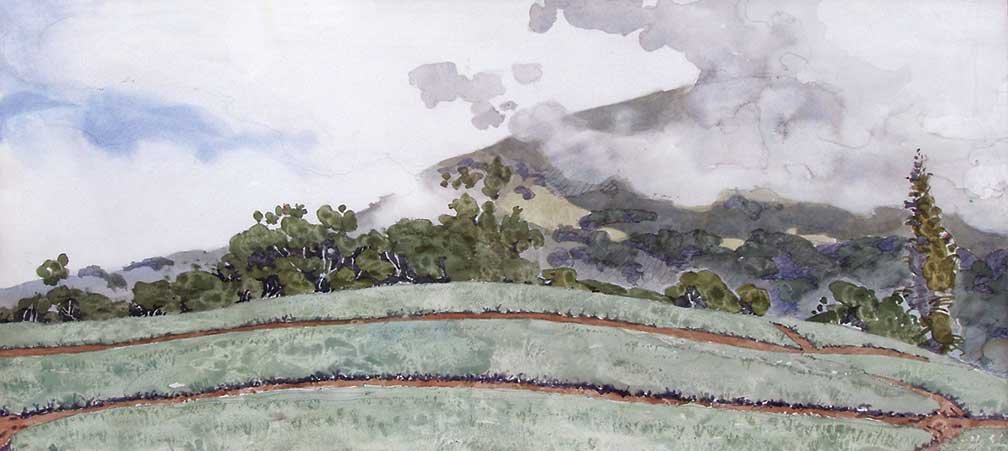
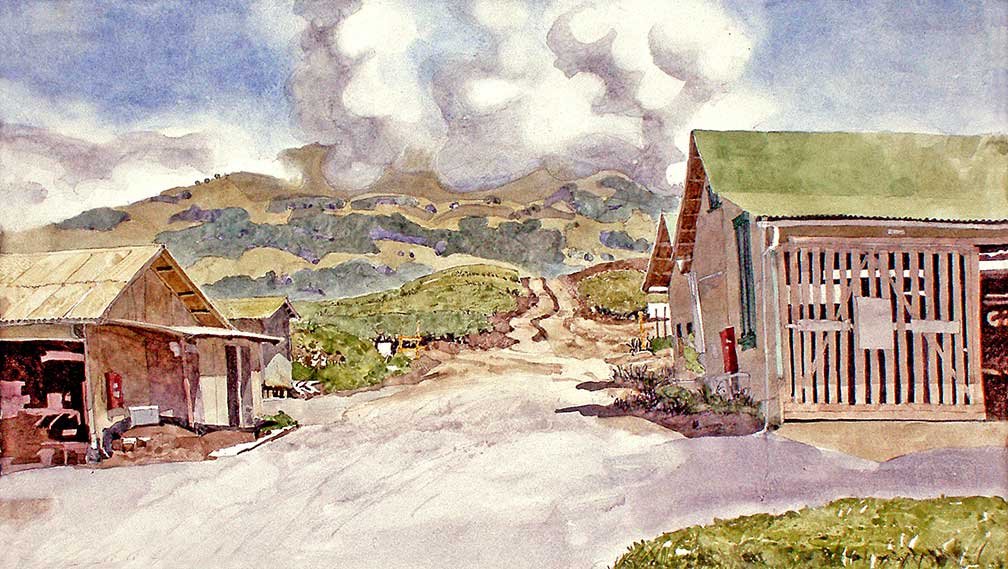
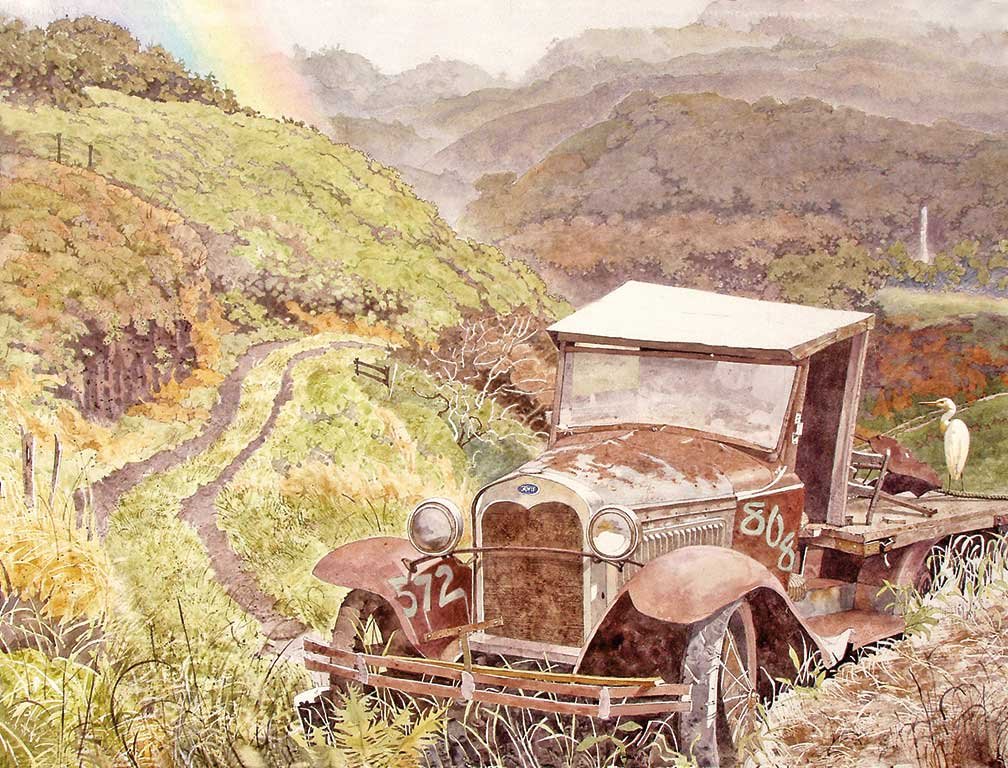
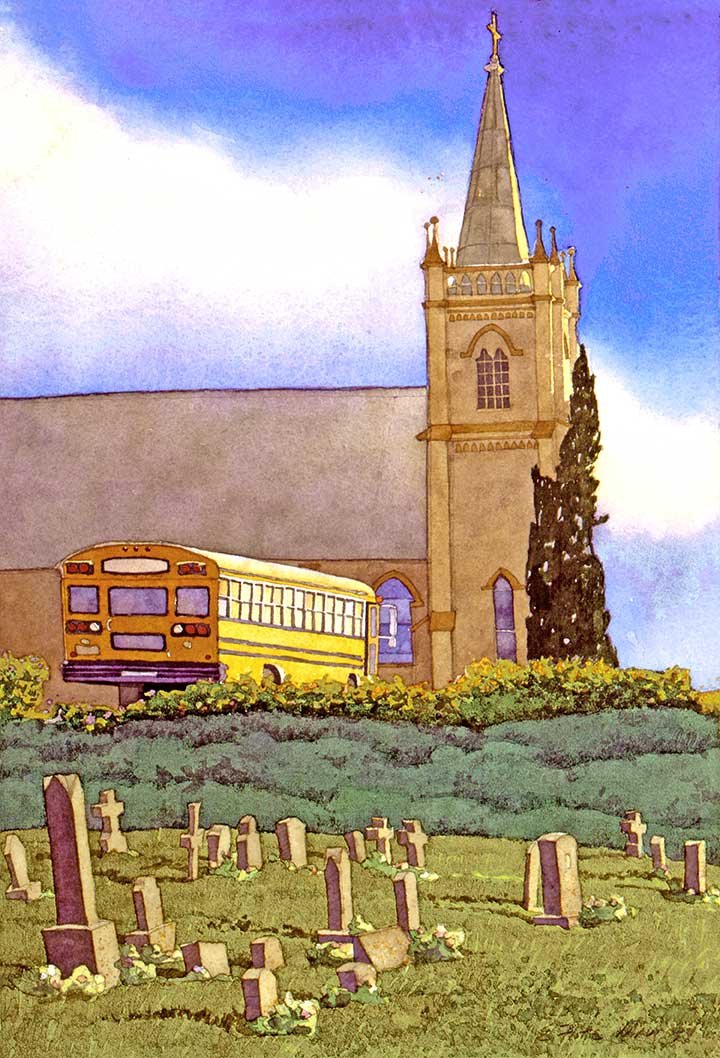
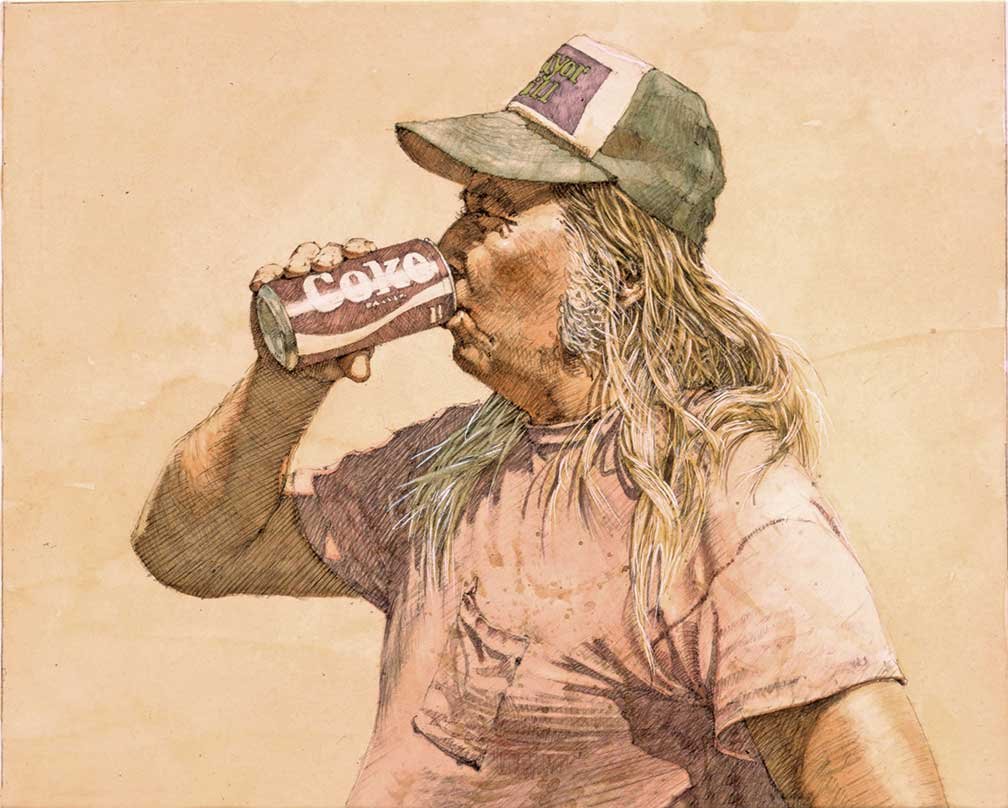

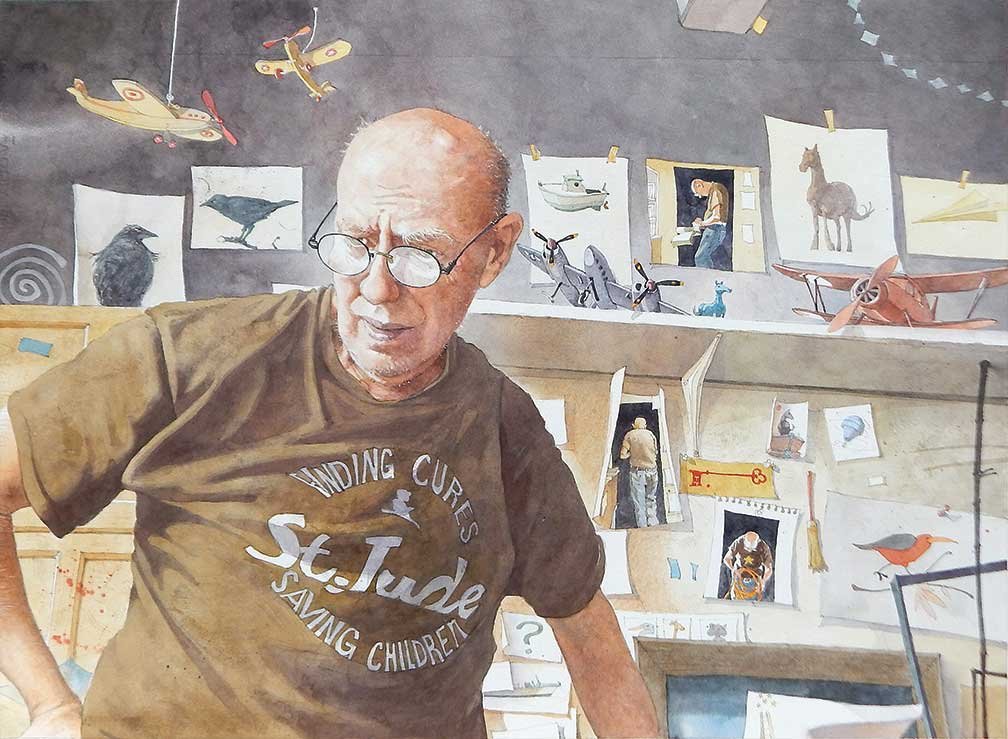
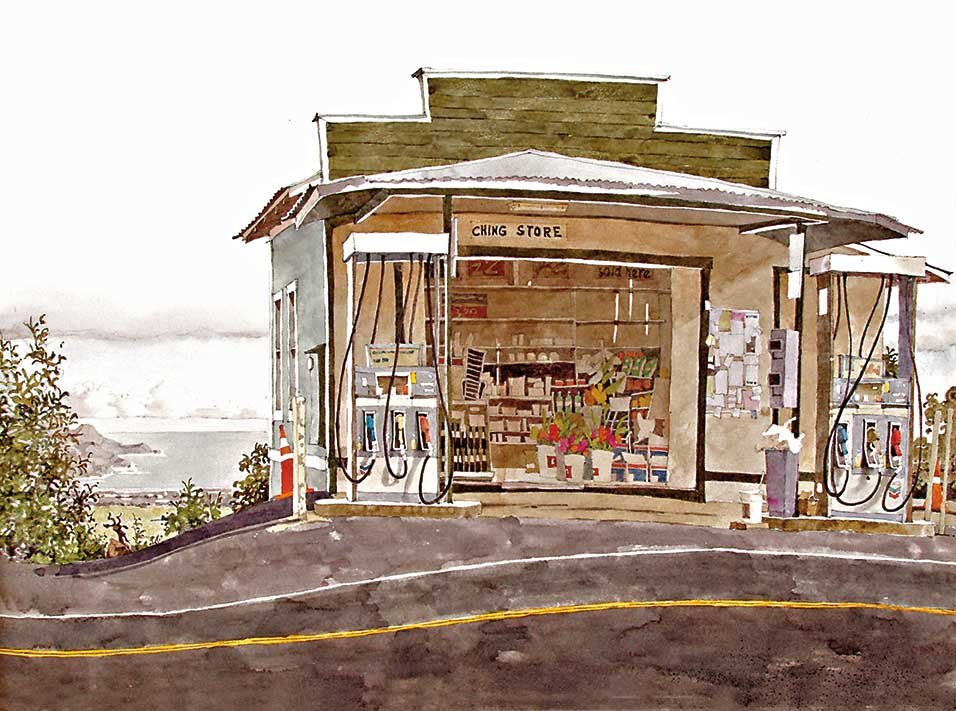
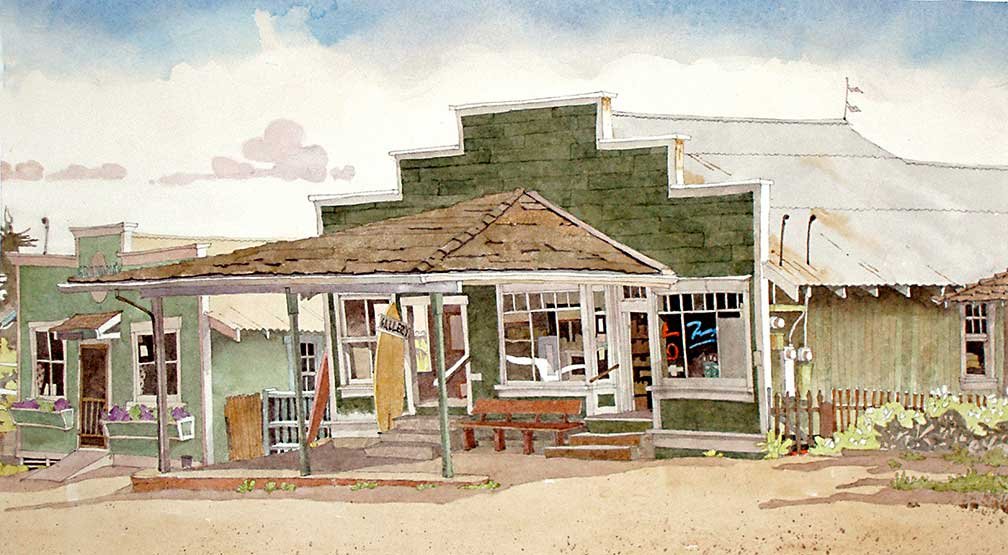
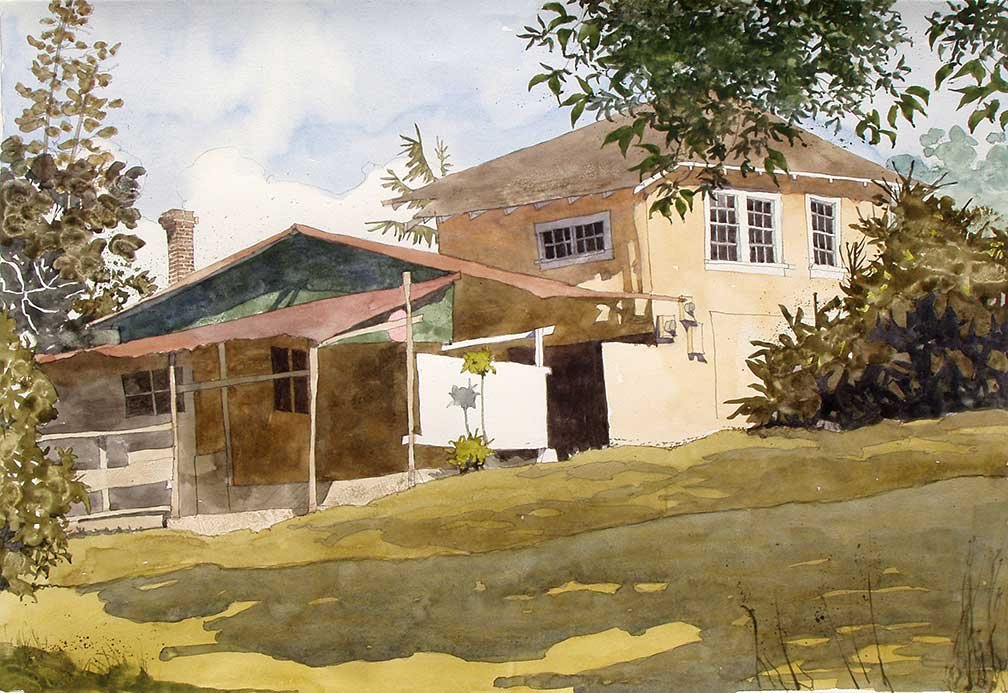
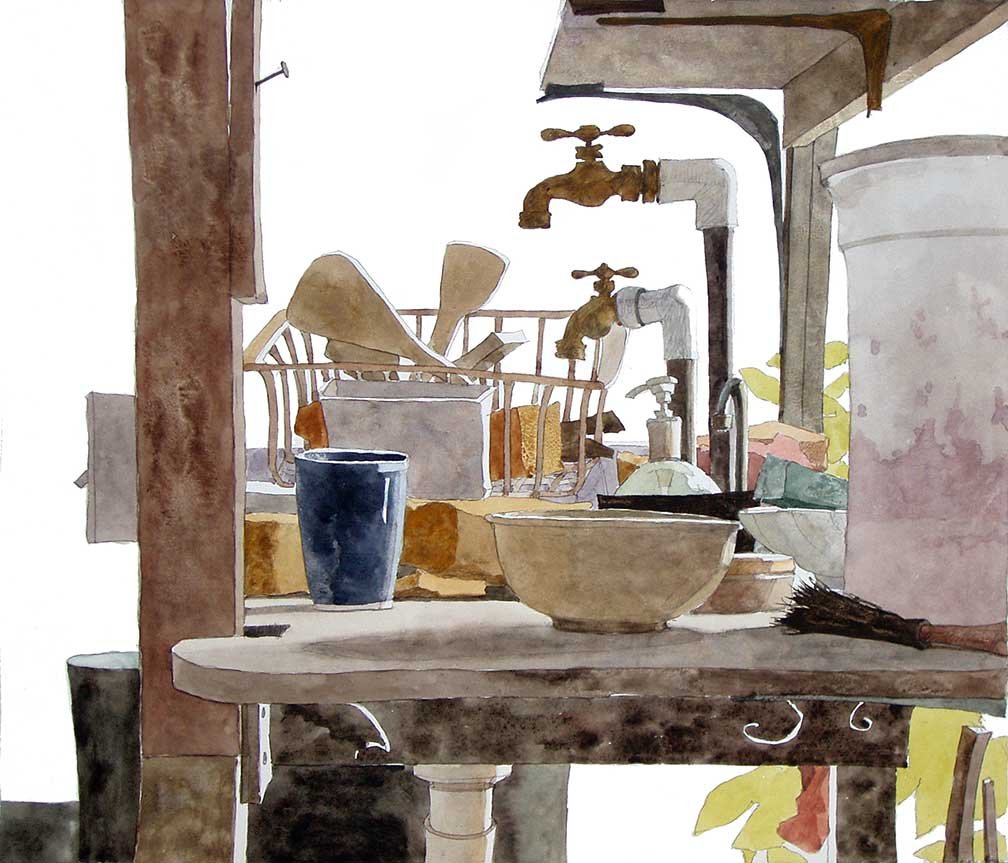
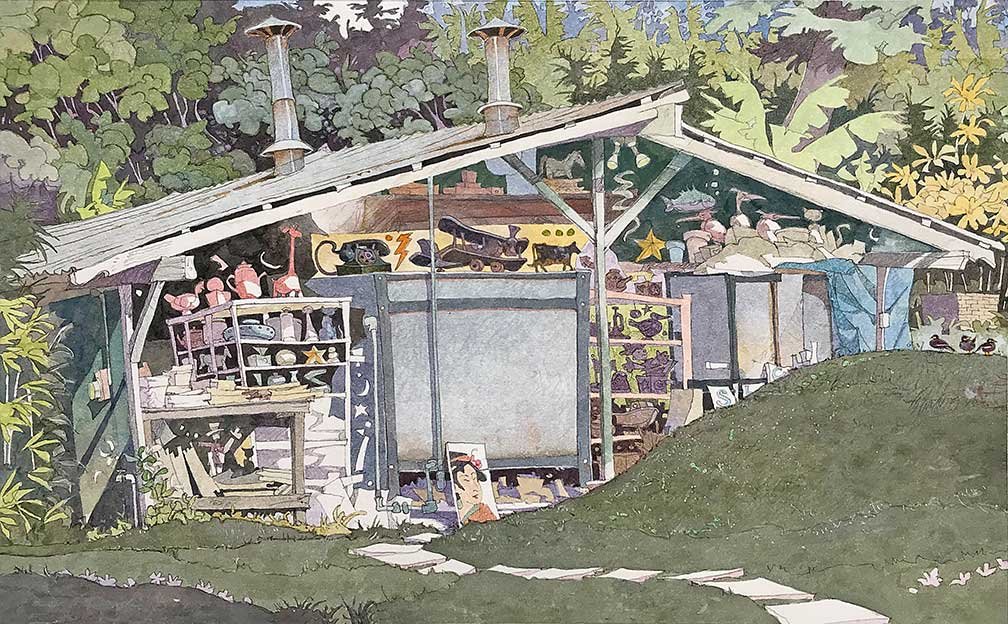
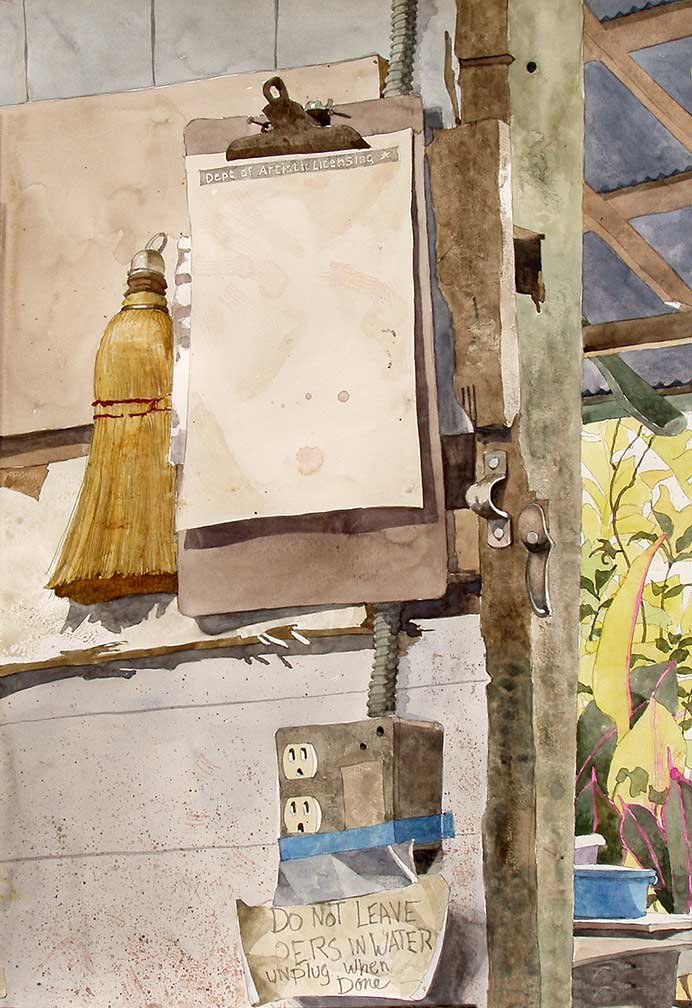
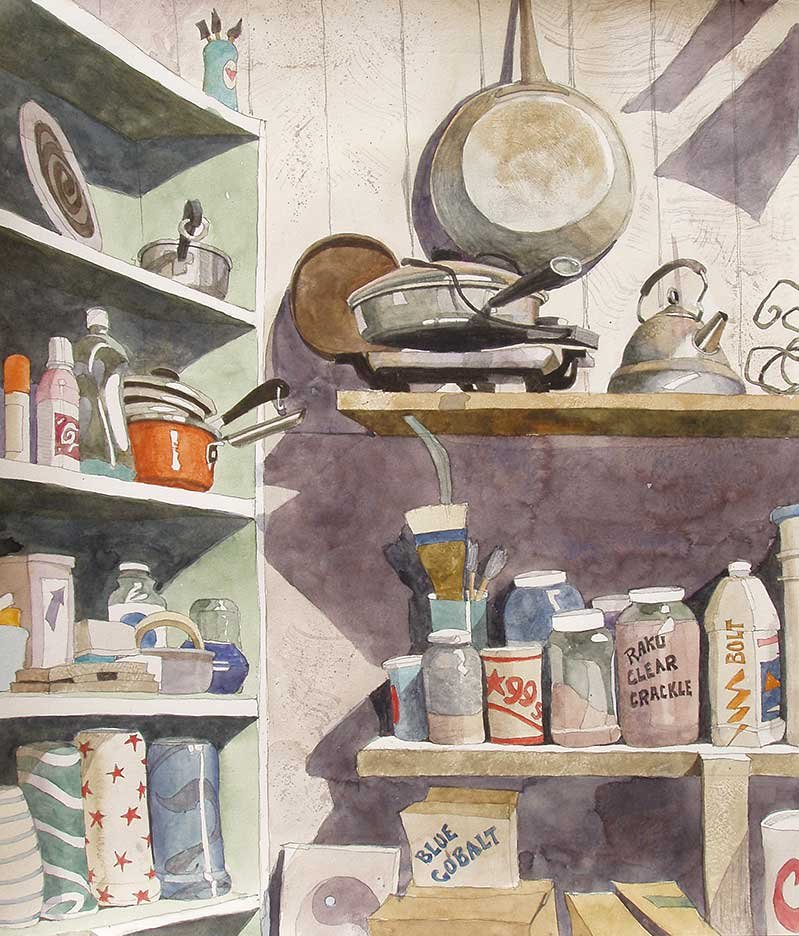
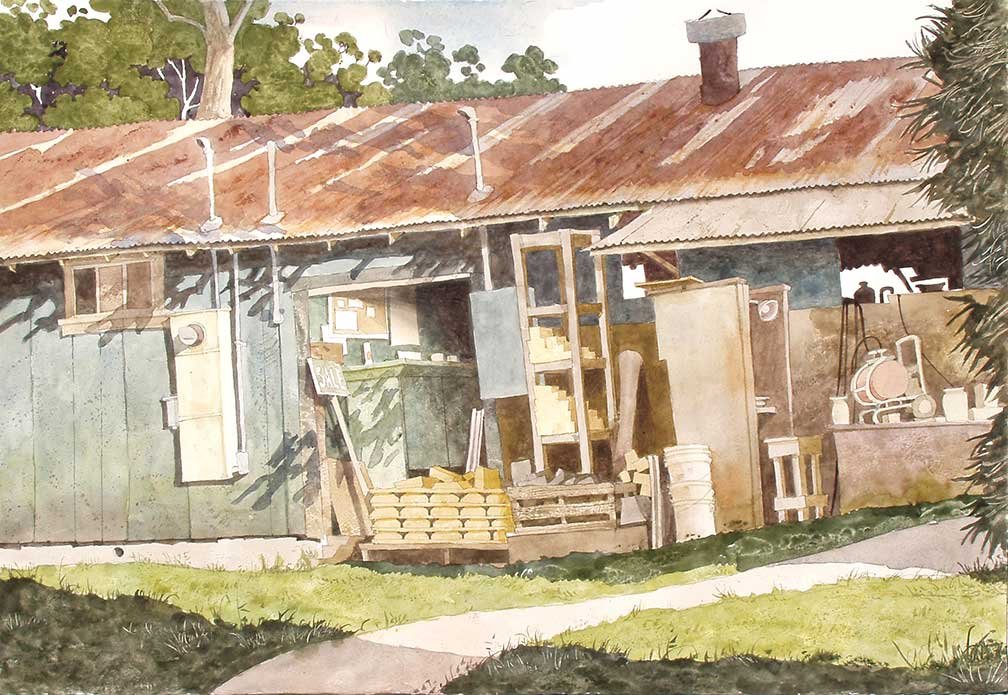
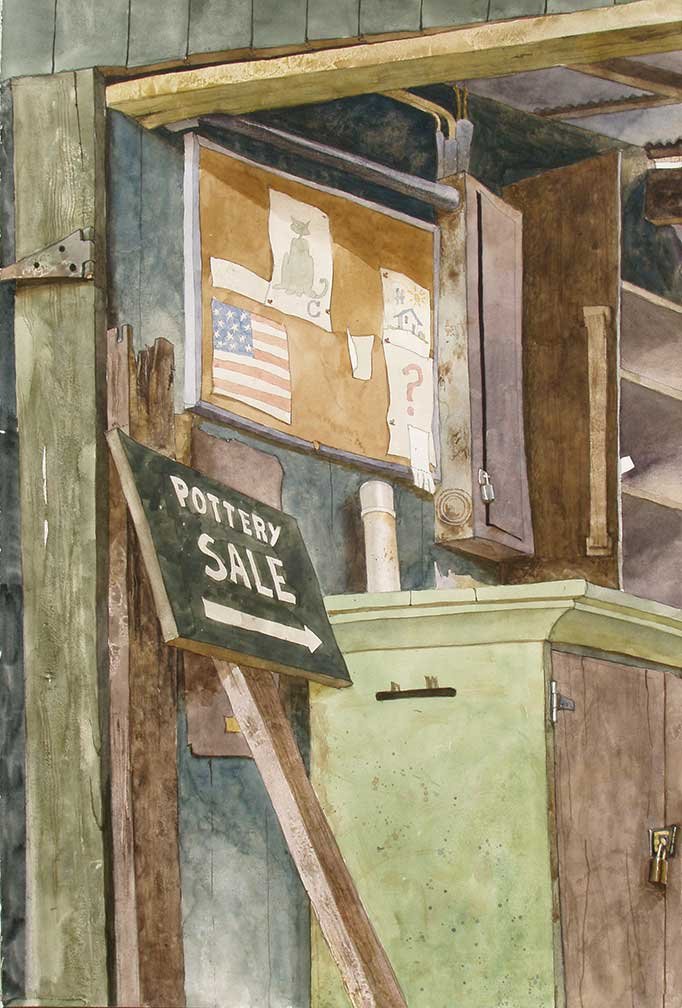
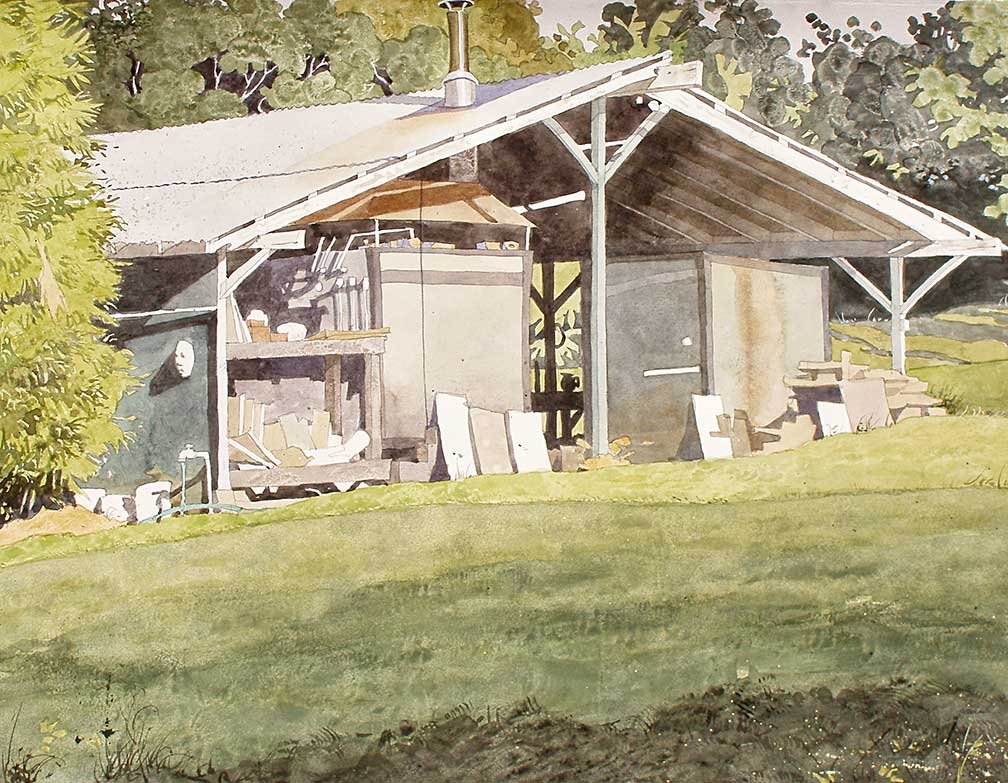
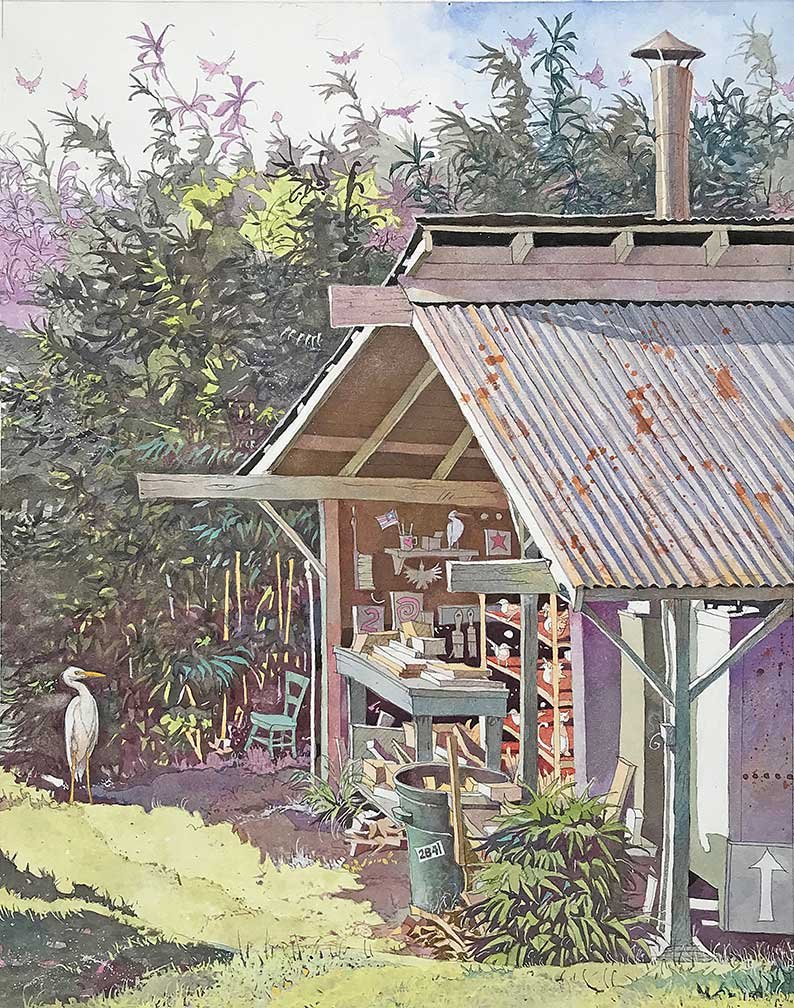

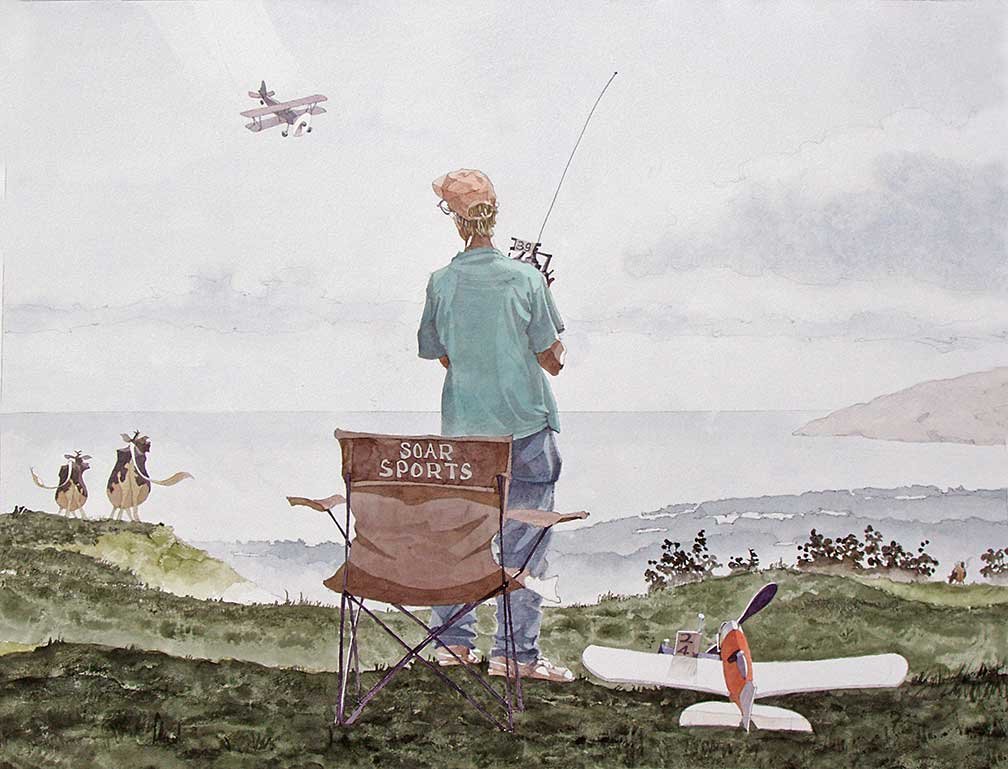
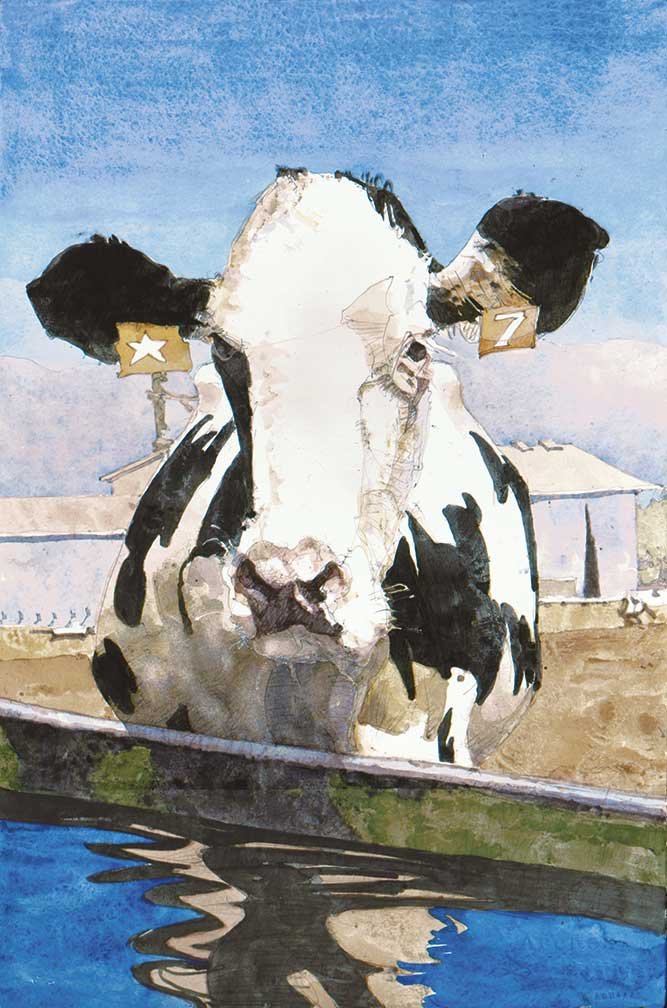
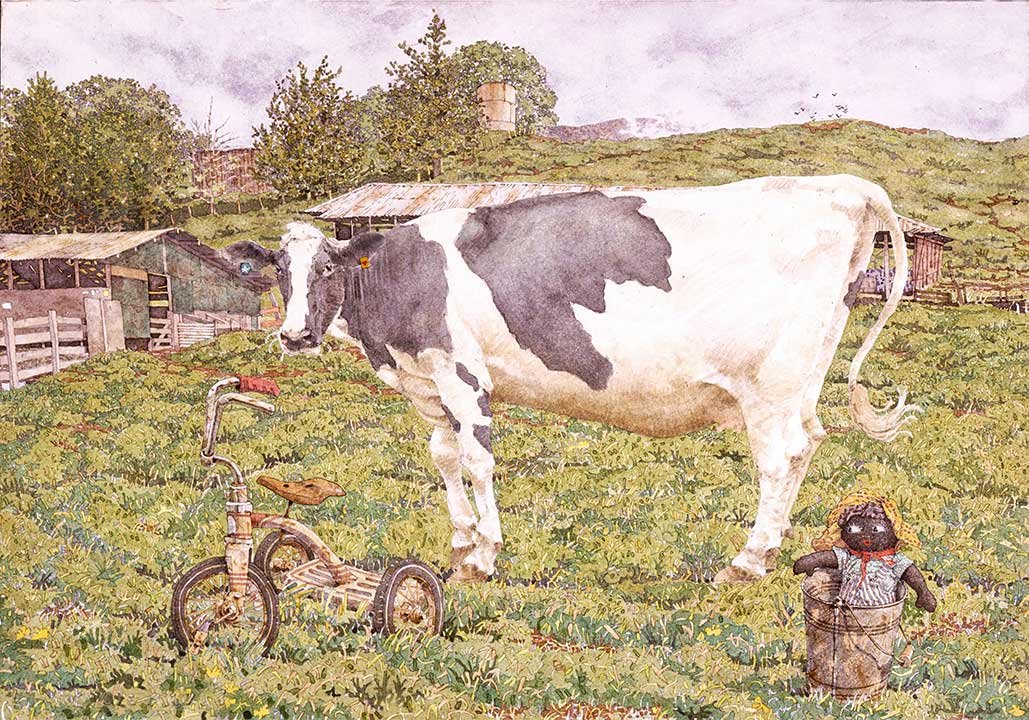
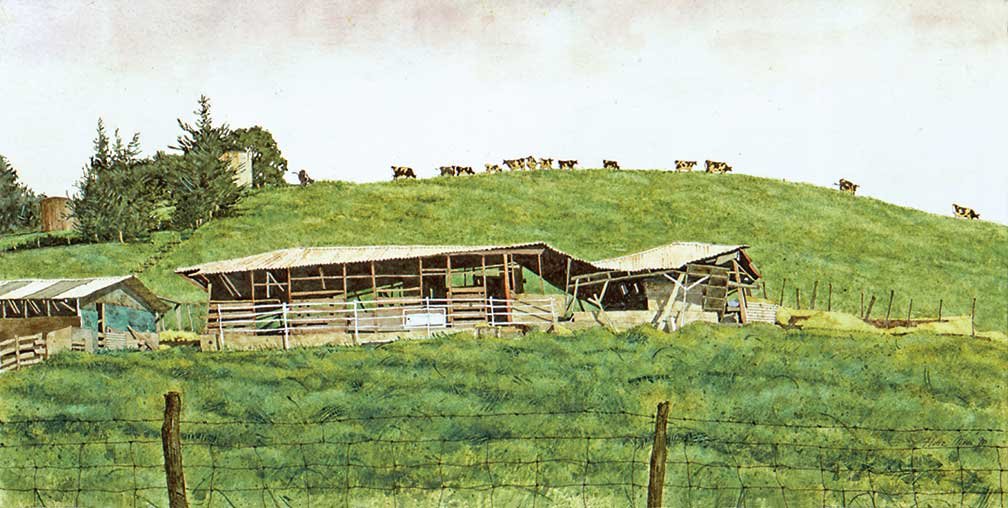
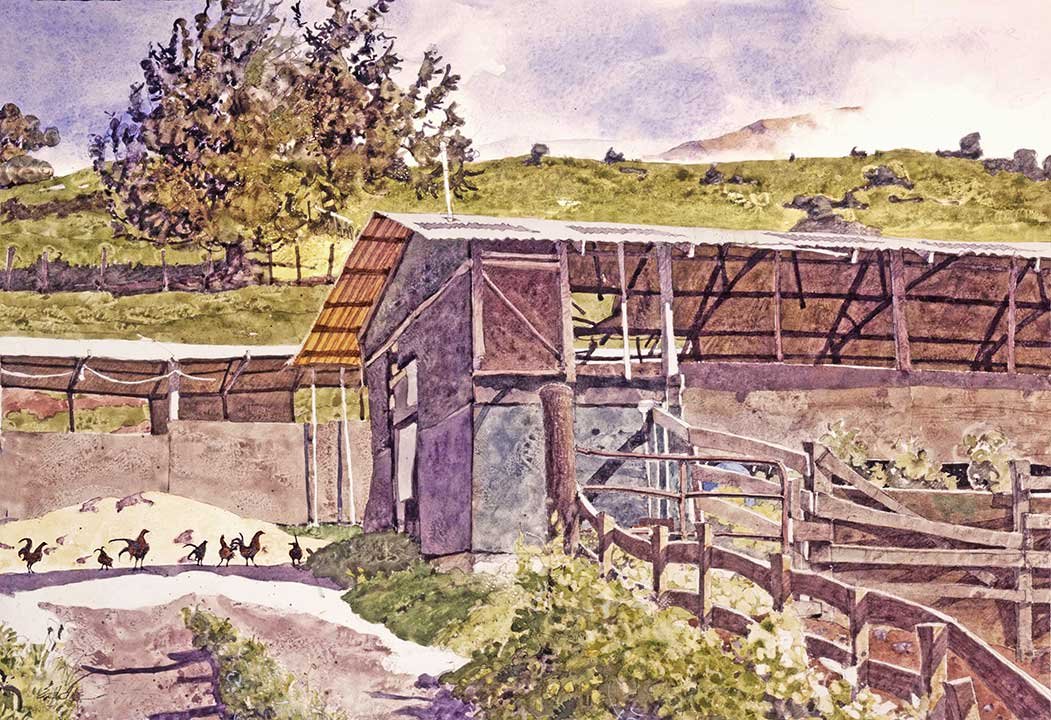
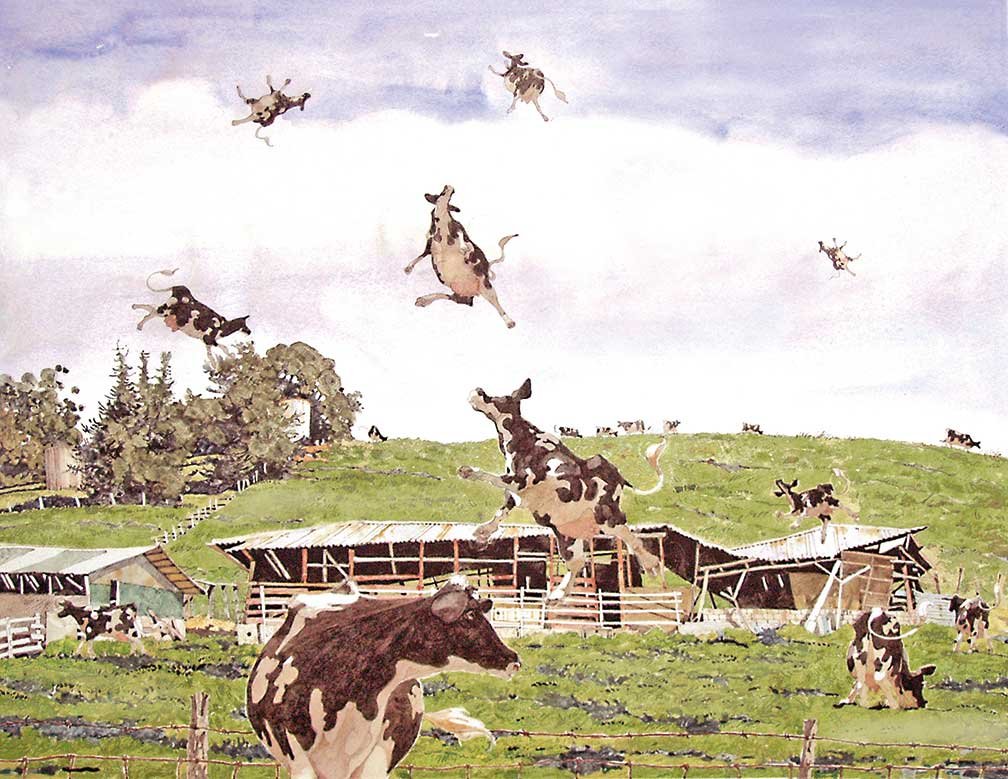

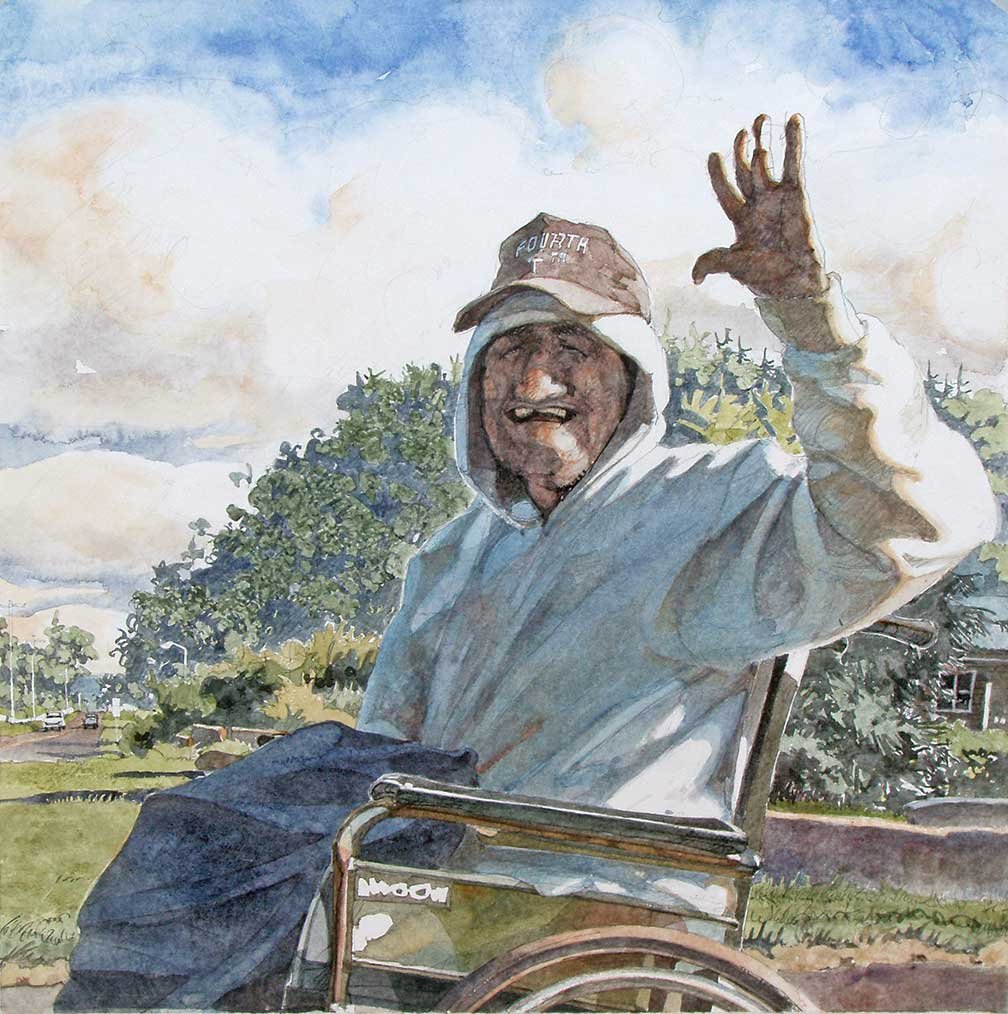

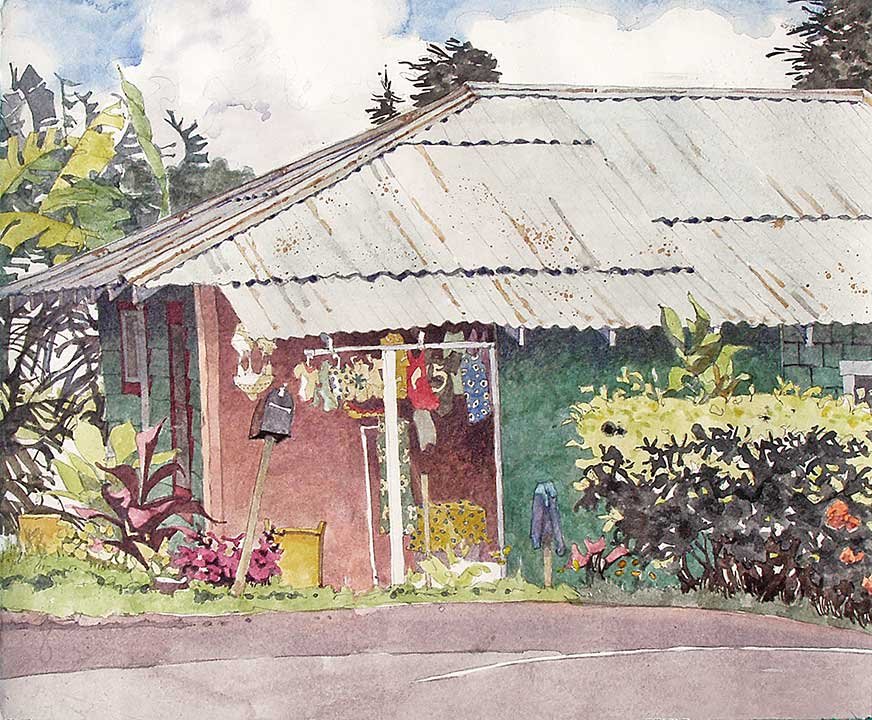
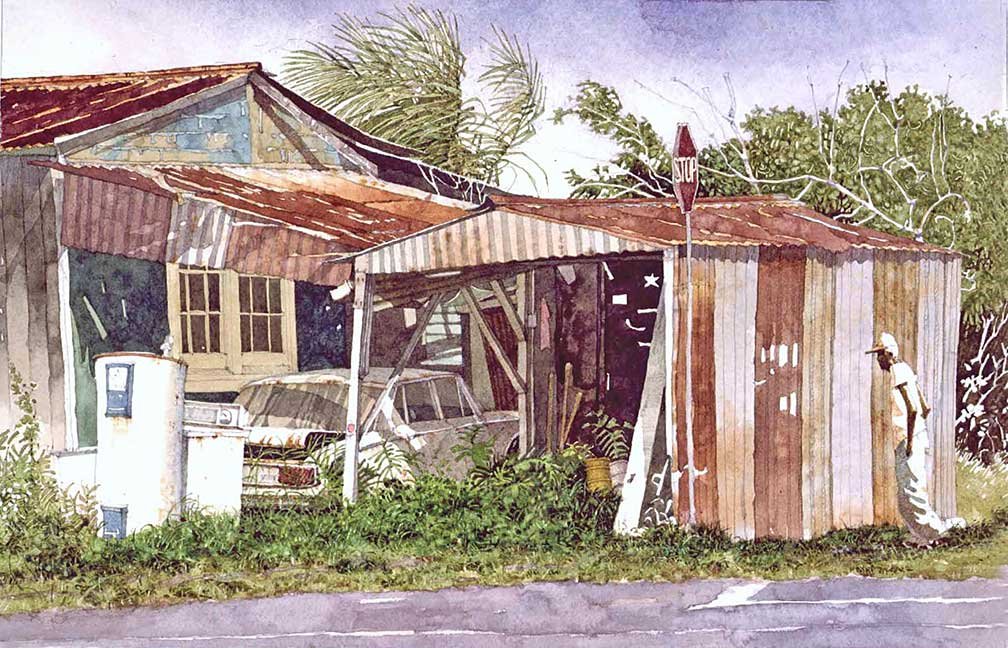
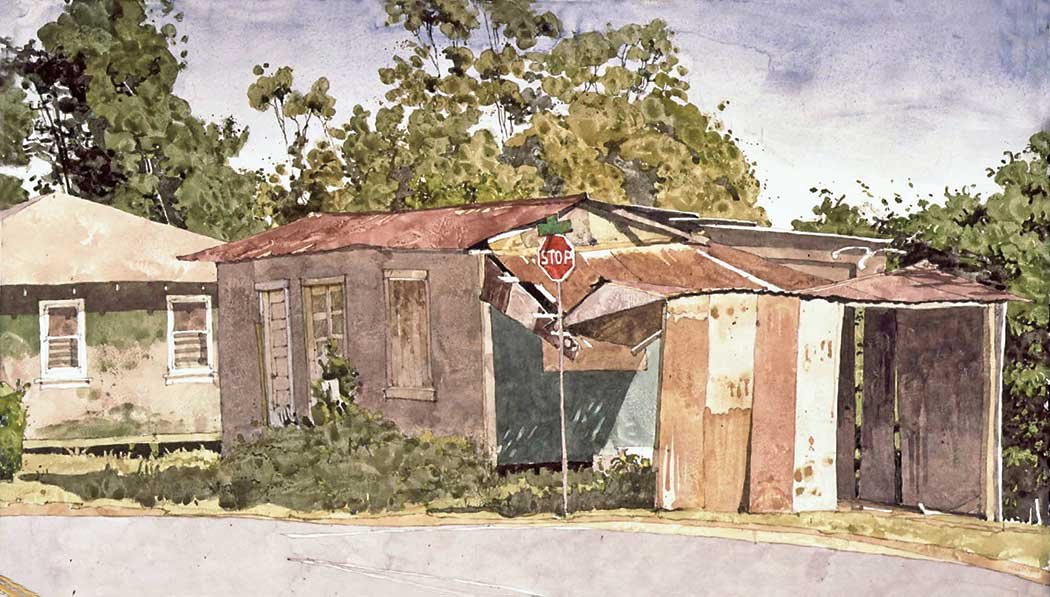
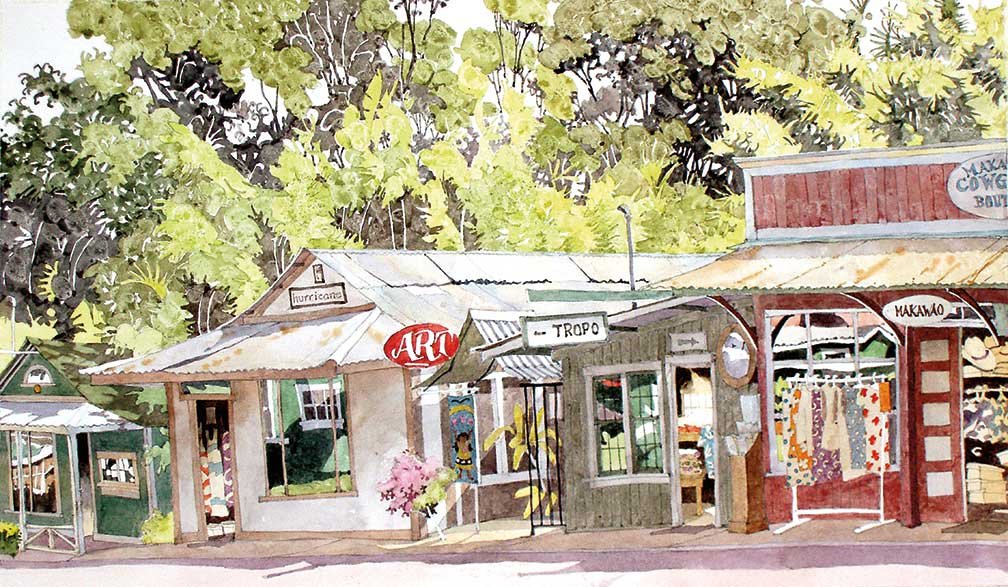

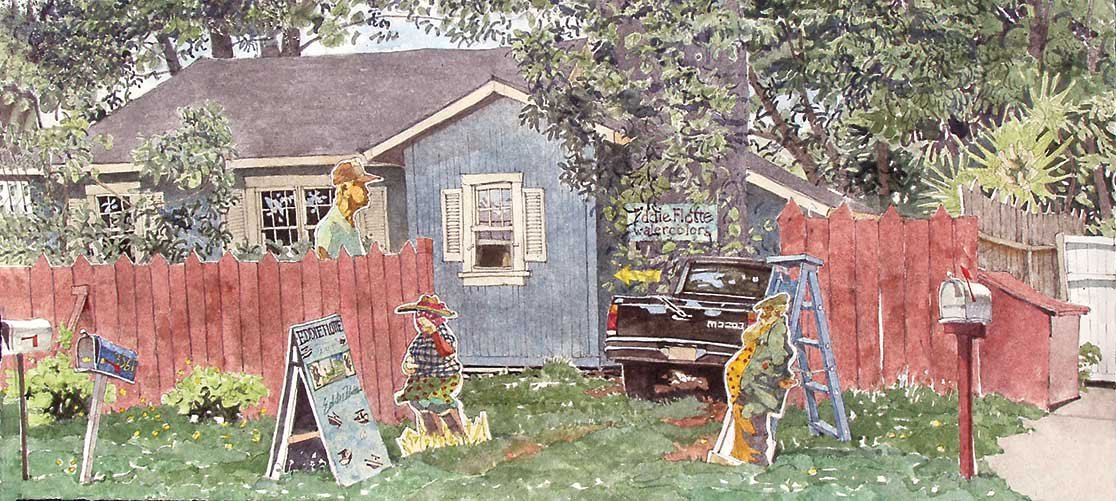


Kuerner’s Farm
The sculptor, Reems Mitchell, heard I liked Andrew Wyeth; he gave me a book of paintings called Wyeth at Kuerner’s. That book changed me. In 1989 Sandy sent me to see for myself the Kuerner’s Farm in Chadds Ford, Pa. I stayed a week in a nearby motel, I painted around town, made friends and ate all my meals in the local diner: Hank’s Place. Soon a new friend took me to visit the Kuerner’s. There, I was invited to stay and paint.
On a Sunday morning in a crowded Hank’s Place, Wyeth walked in and sat beside me at the counter in the only empty seat. It was snowing and bitter cold. He wore a furry hooded parka, and his fingertips were covered in dark green paint. He looked at the work I carried and began to teach. When his fried egg sandwiches were cooked, he took them to-go. He spoke a few last gems and was gone.
I learned more in those fast five minutes than I can possibly explain. My work changed dramatically.
Over time and countless returns to Kuerner’s, I became close friends with Mr. Kuerner and his son, both named Karl. Young Karl is a renowned and dedicated painter as well as a teacher and farmer. I am welcome to come and go as I please and paint freely. When Mr. Kuerner passed away at 95, young Karl invited me to speak at his service and he used several portraits I had done of his father to illustrate the booklet pages which celebrated his life.
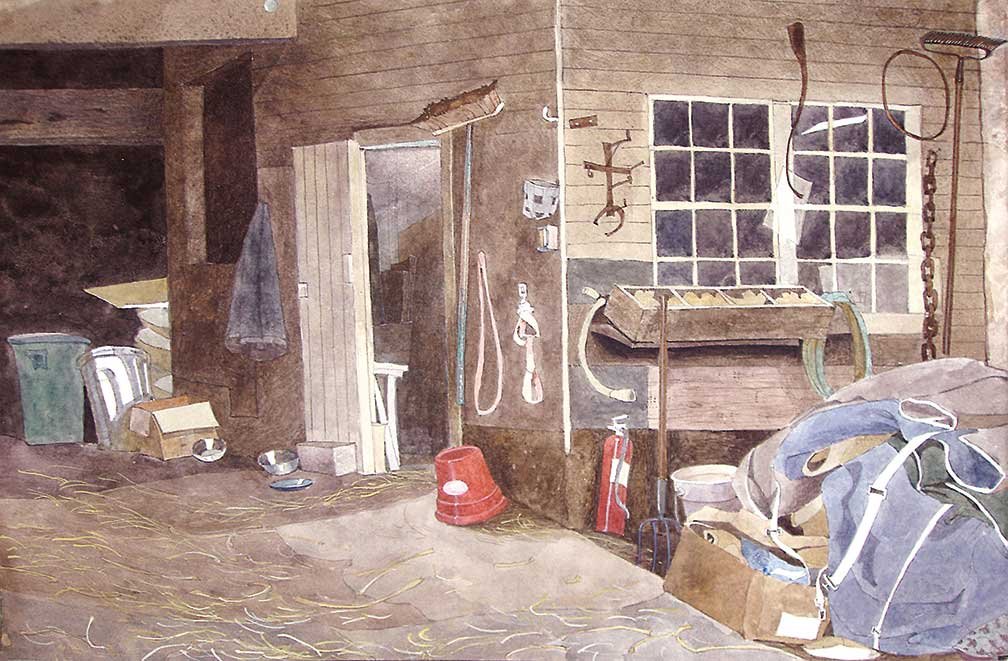
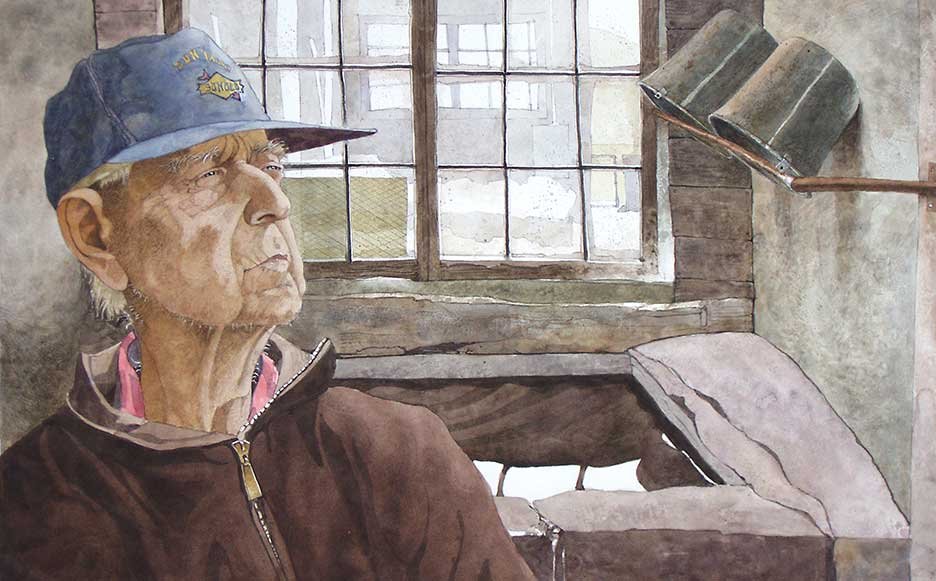
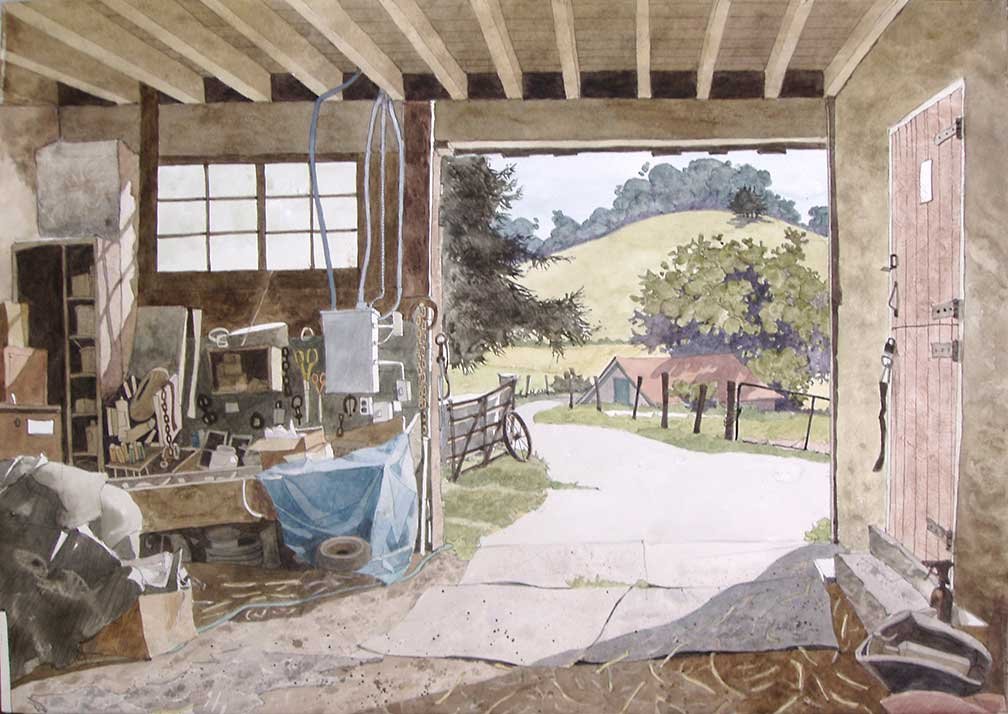

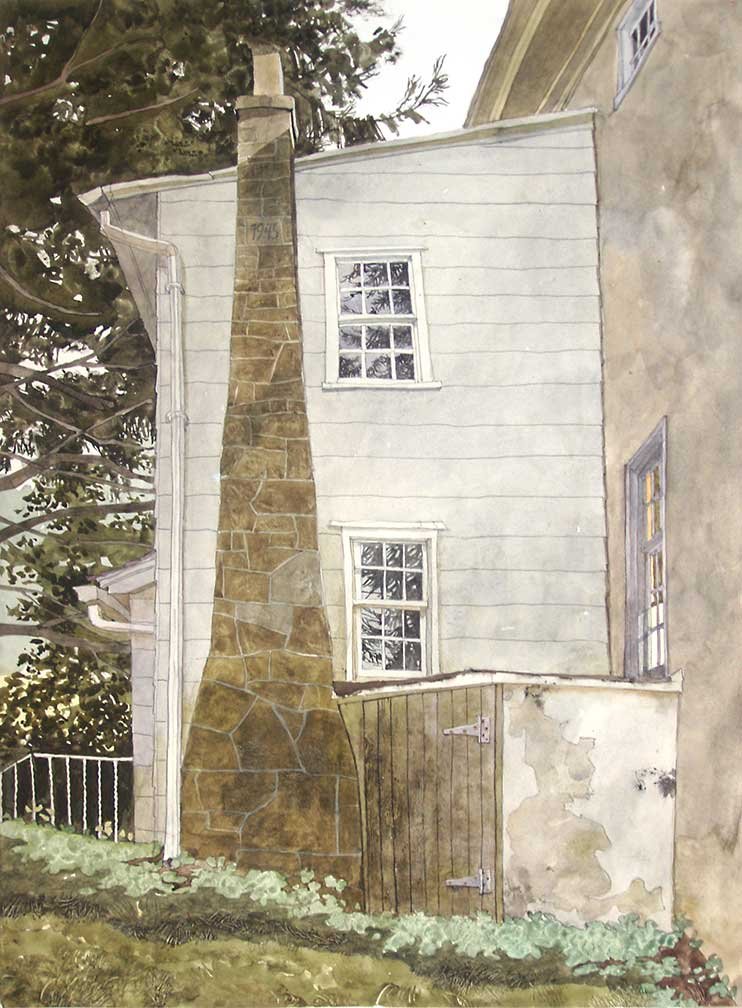
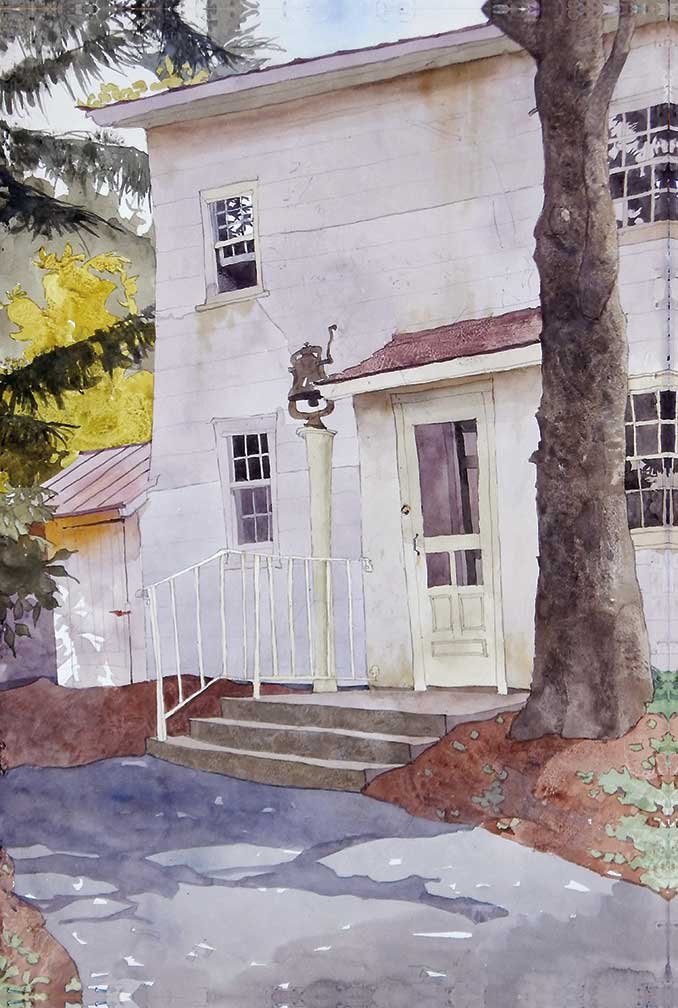
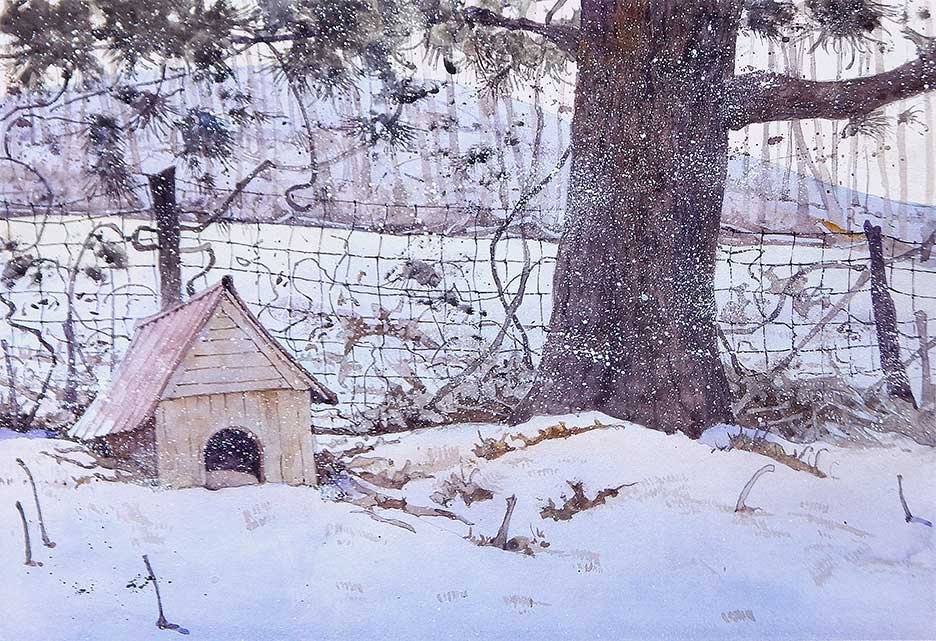
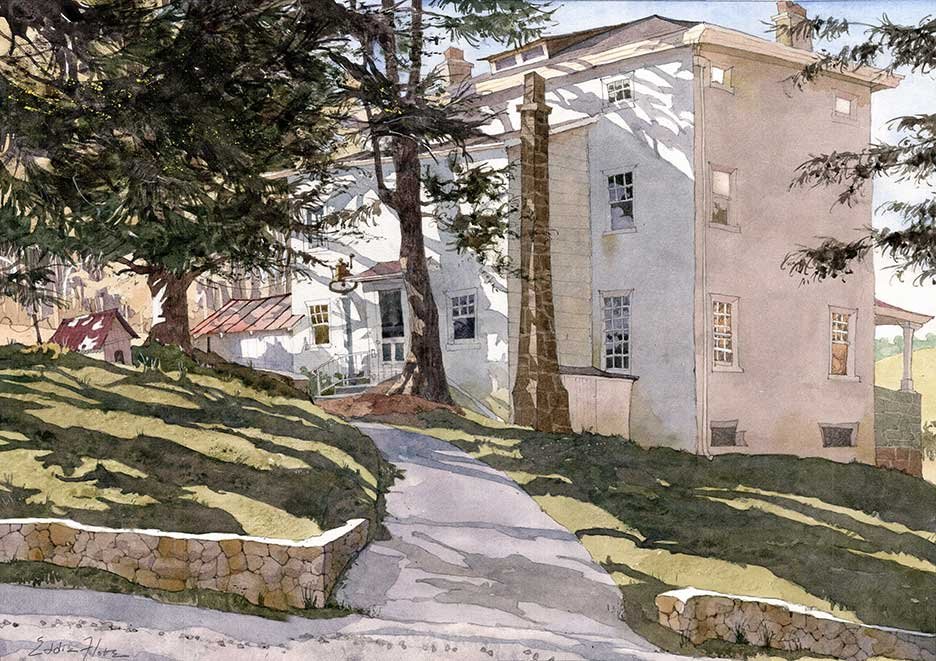
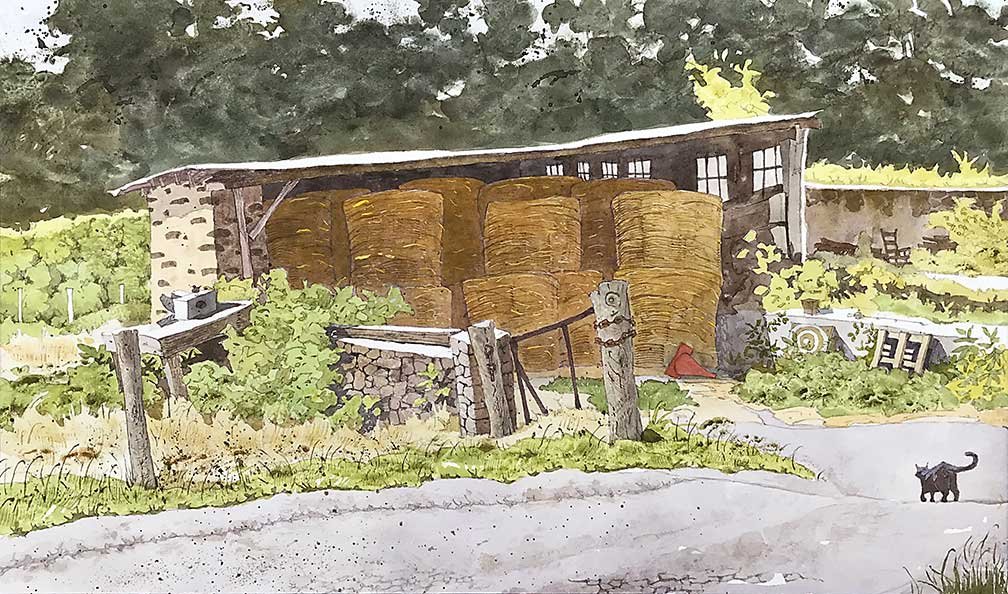
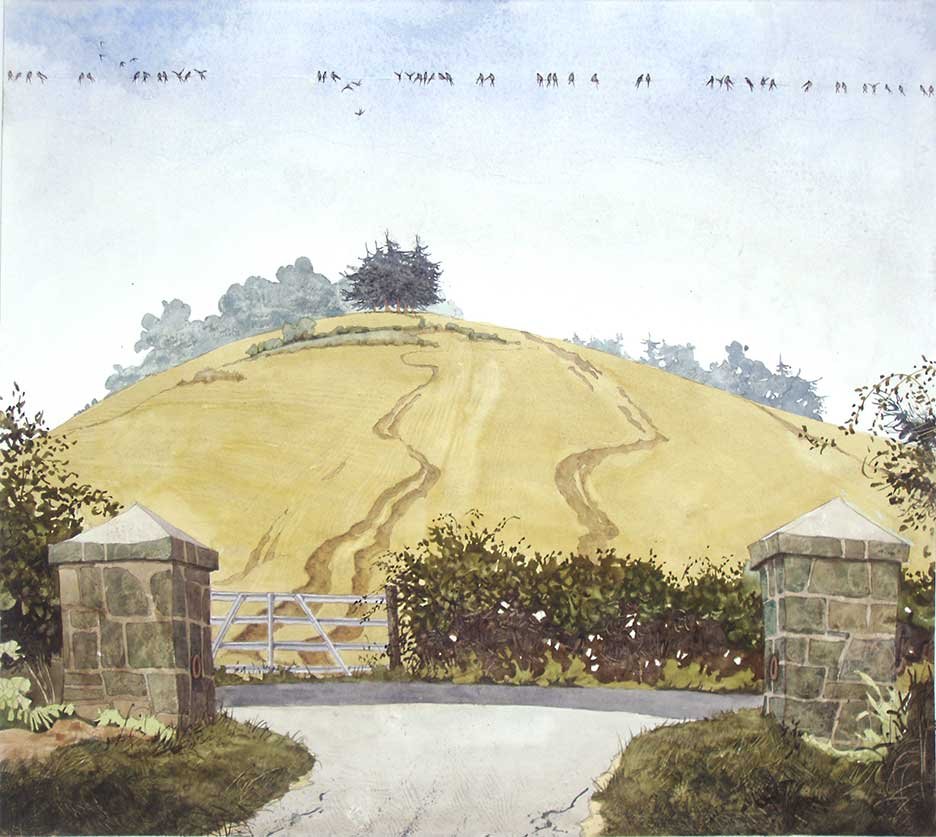
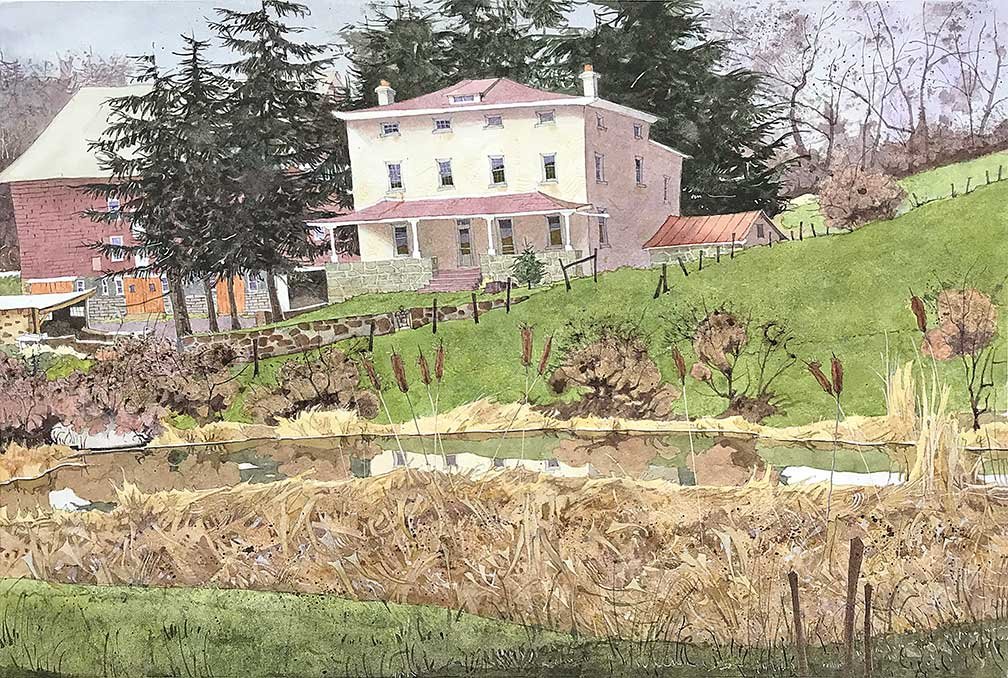
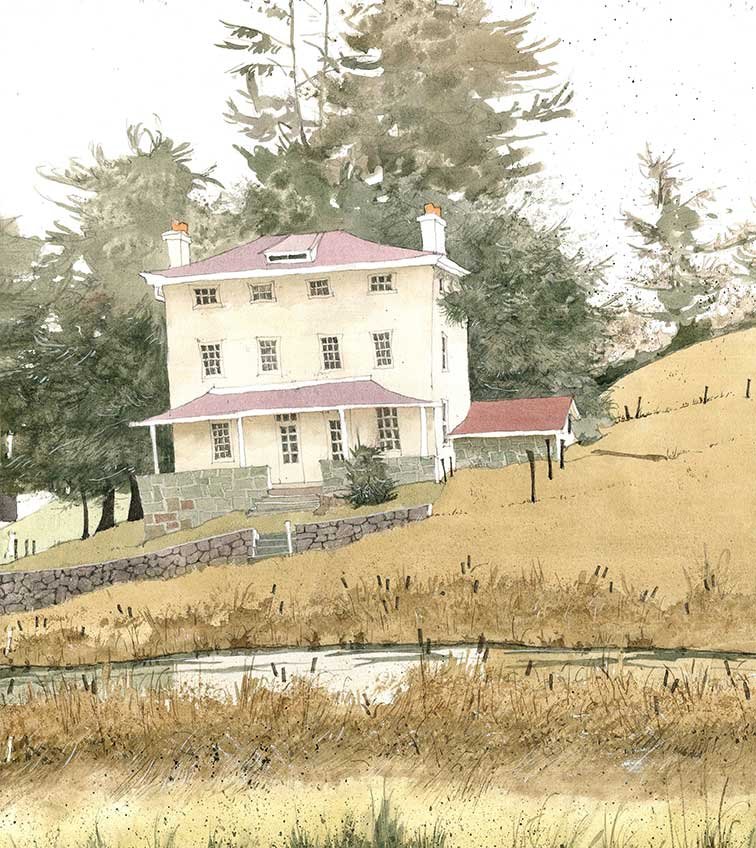
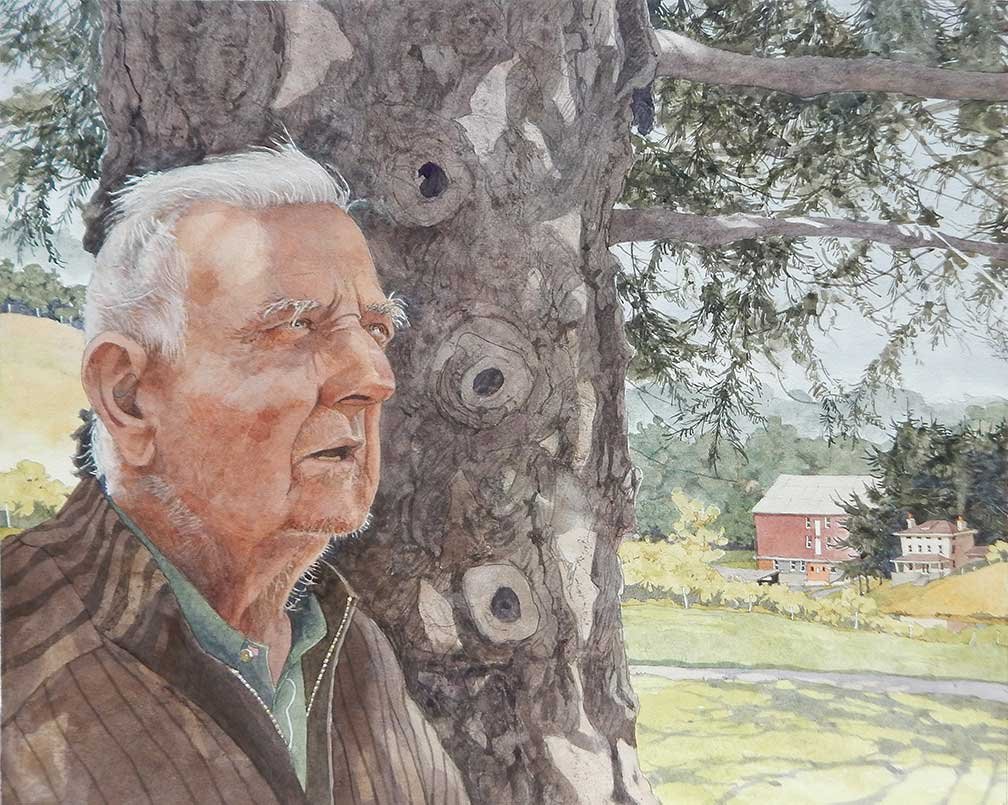
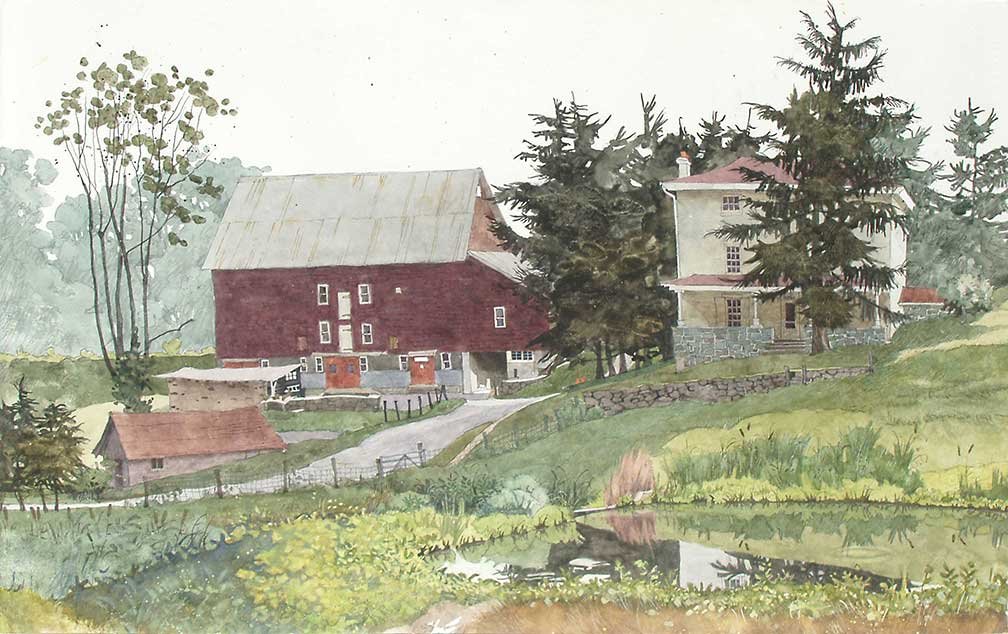
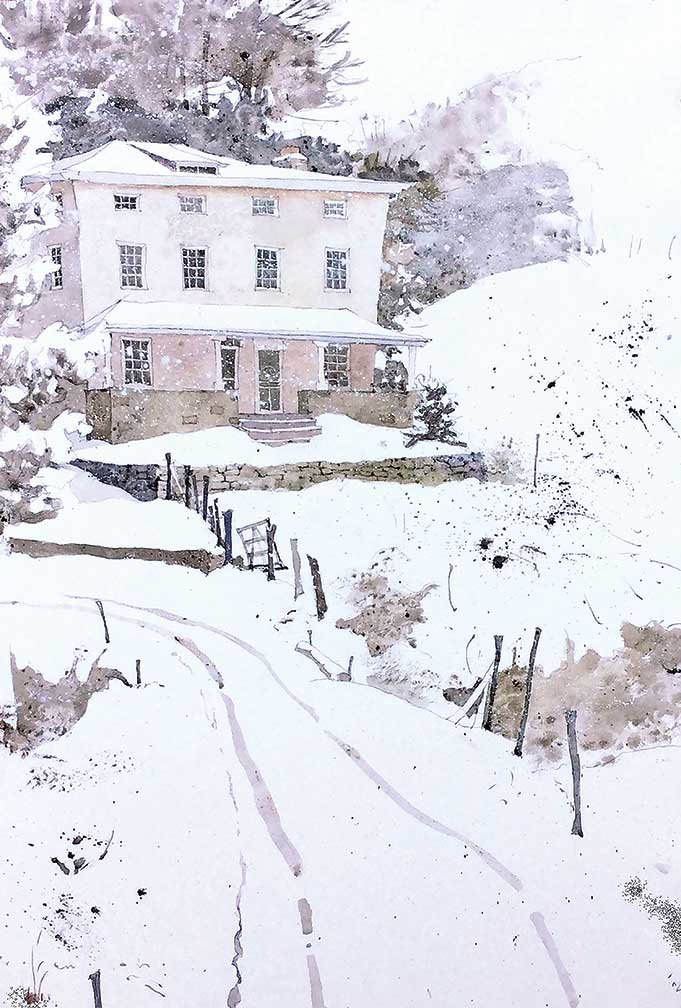
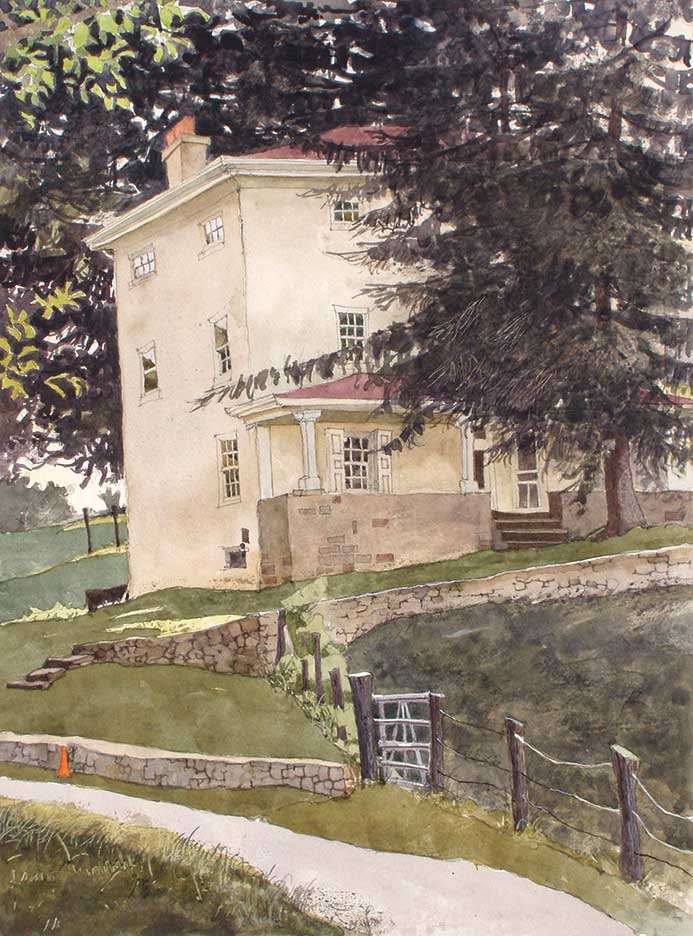
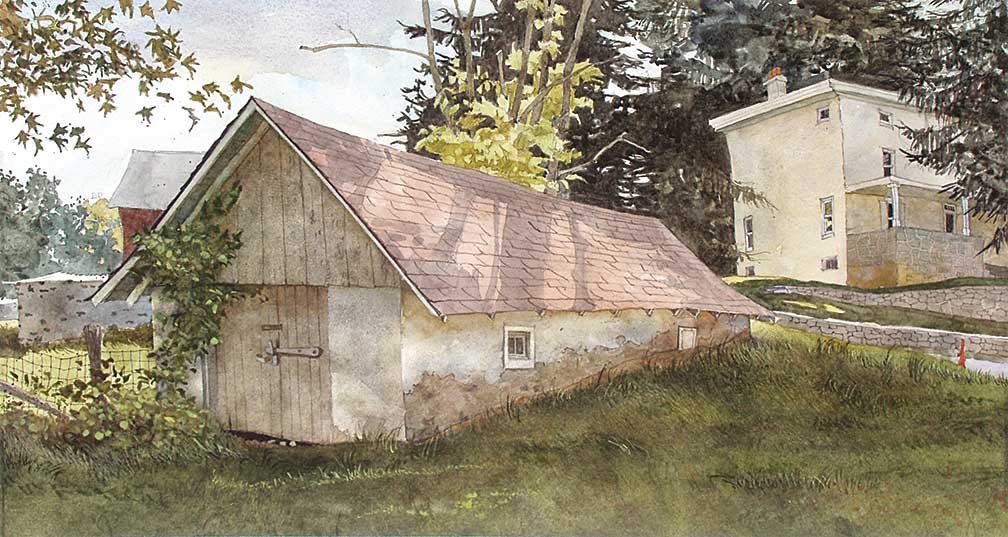
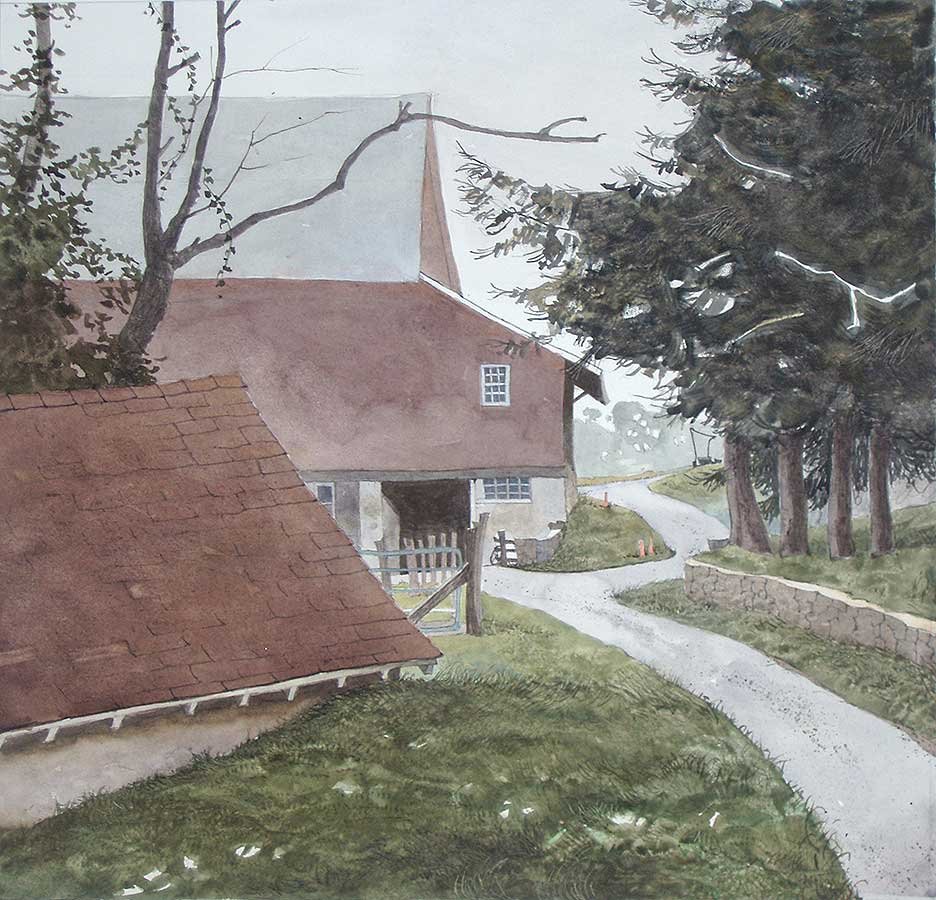
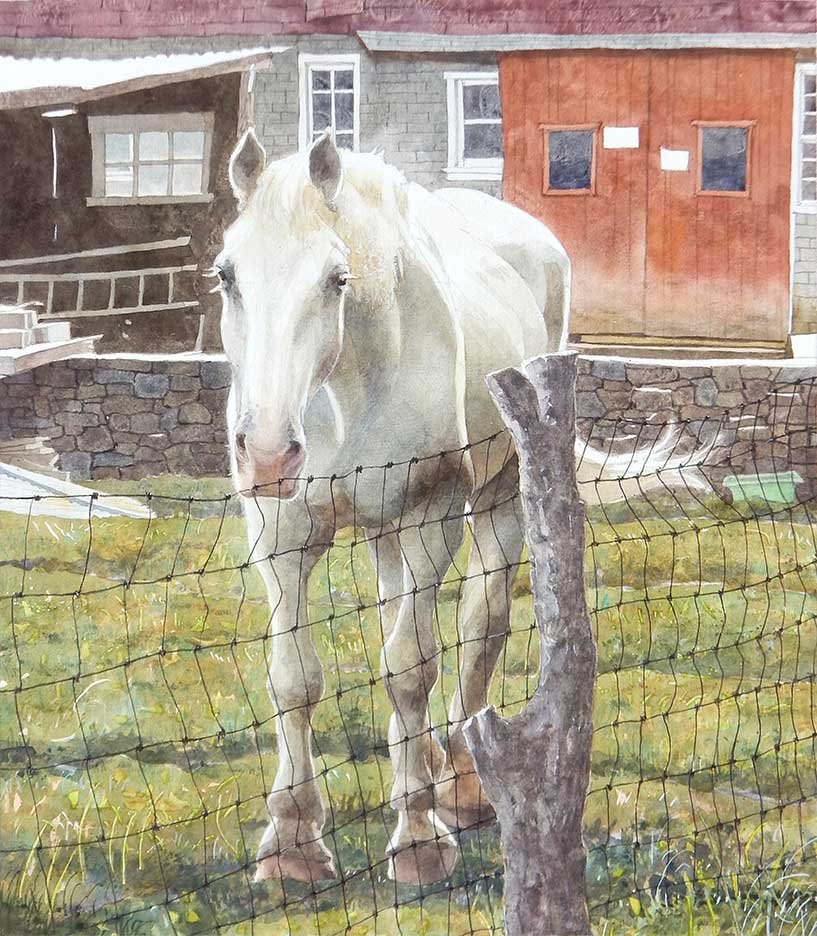
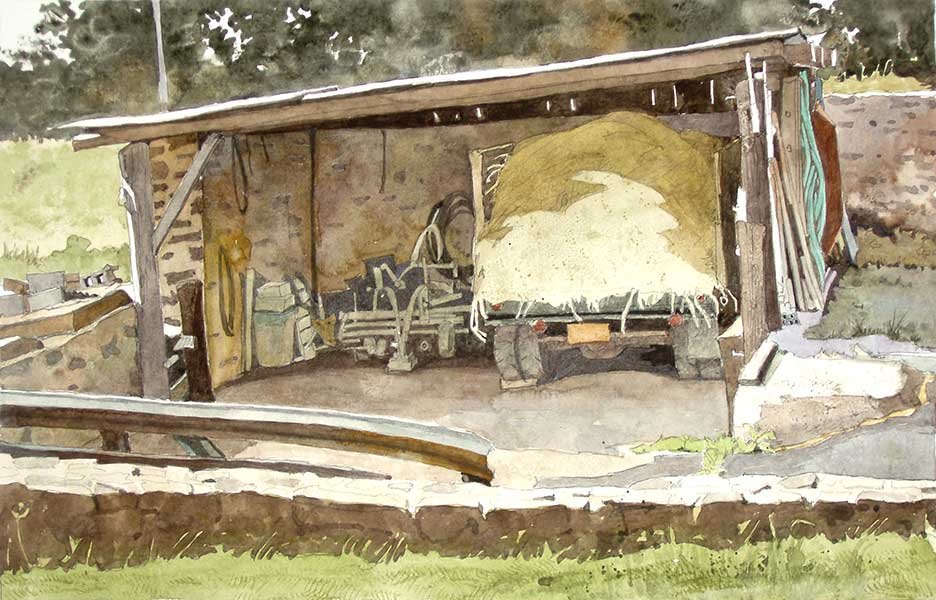
Phoebe Jaquett
Phoebe is my cousin, my father’s cousin, mine once removed. She lived next door to my grandparents in Center Square. We could see her from our side, standing on her porch or gazing out her windows. I never saw her leave or heard her speak except to return a greeting offered by my father. It was obvious she was different, and we knew because we had been told so. She seemed very lonely. It was clear my father’s attention was the high point of her days.
A few years after moving to Maui, while home on a visit, I found Phoebe. She lived alone in a tiny apartment provided by the state, kept company by canaries and parakeets, twelve in all, her only friends. She introduced each to me by name as she took them from their doorless cages telling stories about the relationship dynamics they all shared together.
Each time I visited, Phoebe would be talking when I arrived and still talking as I left an hour or so later. We always hugged and our hugs were meaningful and warm. She recalled her life in Center Square, things that went on in and around her apartment building, she talked about the boy who delivered groceries and a man she let get away many years earlier. Her fondest memories were of my father, how he danced with her at school dances as everyone watched. She treated me like we were the best of friends like we always had been. It felt as though we were.
Phoebe never minded if I sketched her or took her picture. On occasion I talked her into going for car rides, back to visit the world where she grew up and to the cemetery where her mother and father were buried. Phoebe died in a rest home in 2021, no longer able to live alone. I had visited her there a year earlier. I found her broken hearted over the loss of her birds.
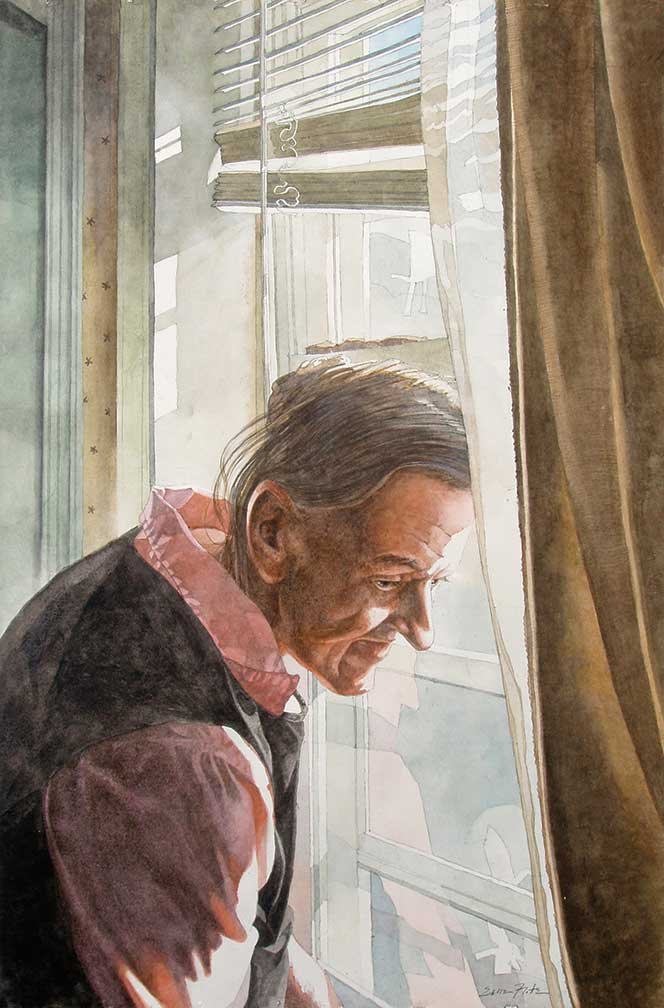
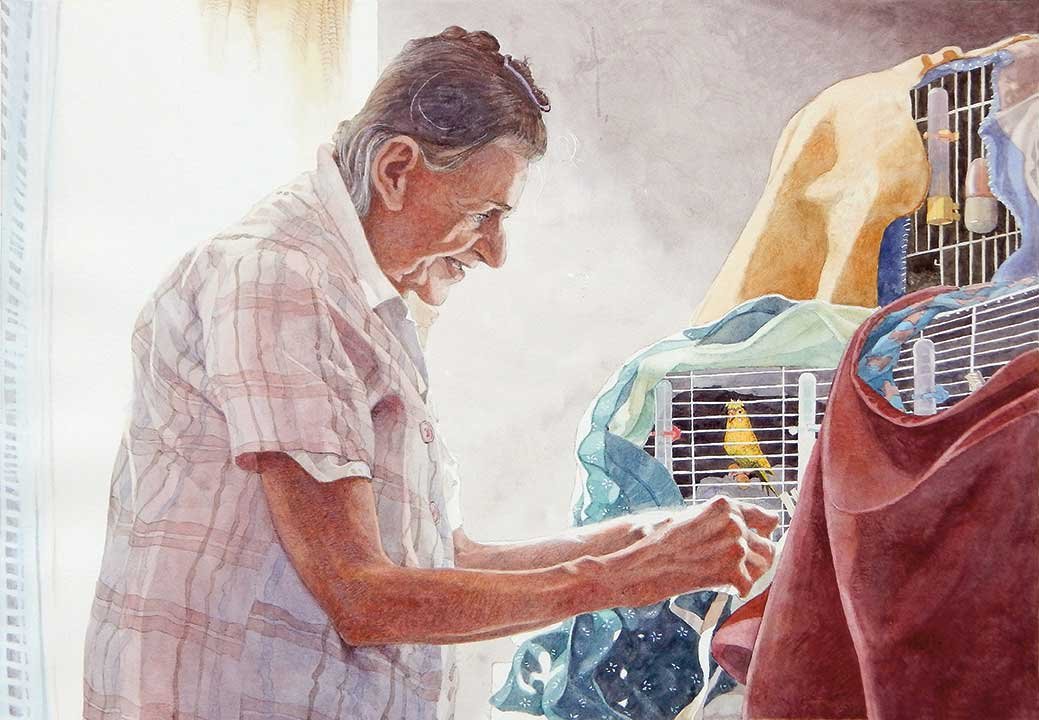
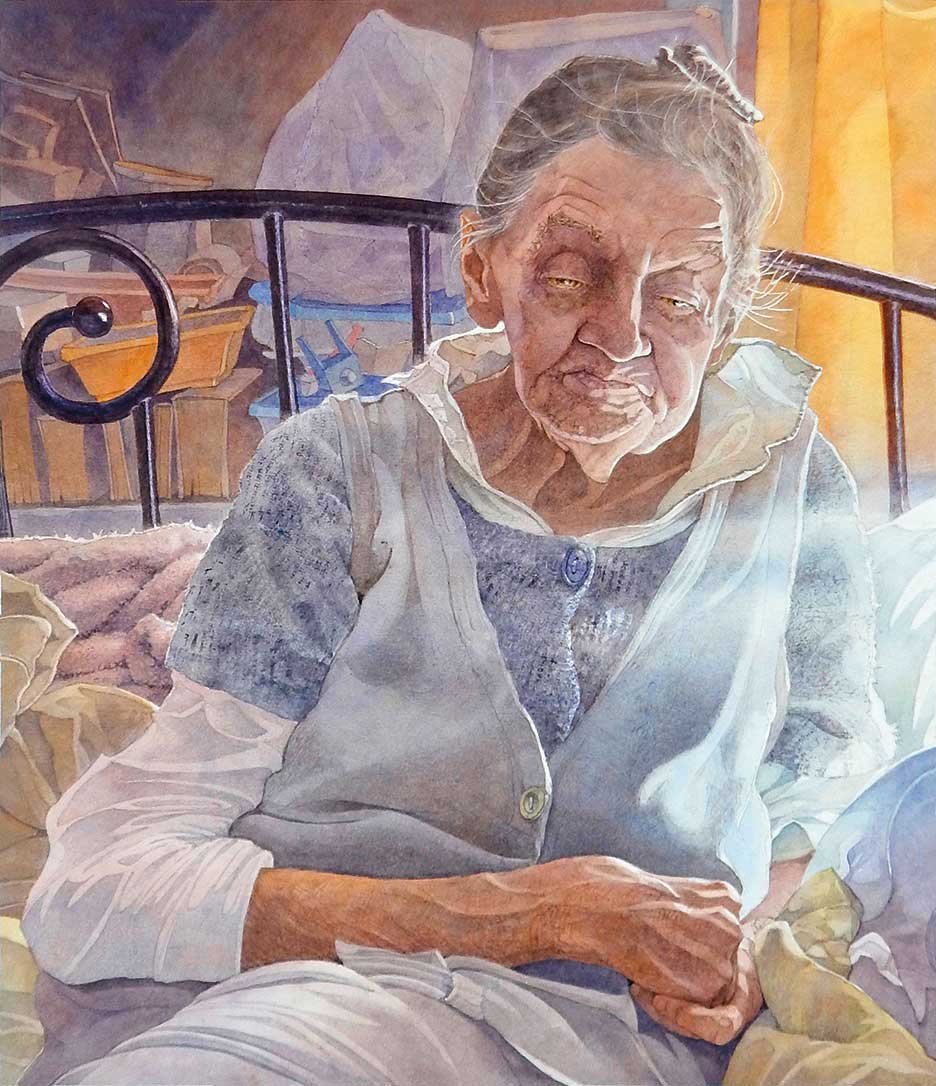
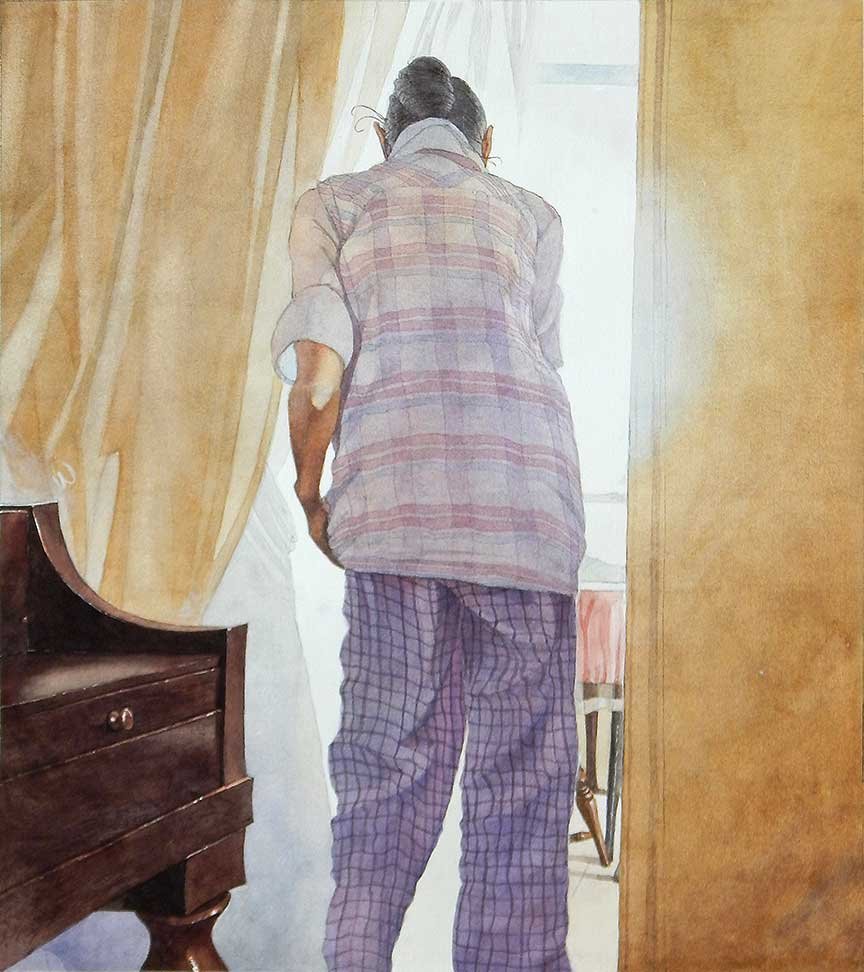
Grassy Sound, New Jersey
Growing up in Pennsylvania, I waited all year anticipating the week vacation our family would spend along the Jersey Shore. That shore is now hard to find. Developers knocked down the quaint bungalows and old artisan built, Victorian hotels, to prop up modern, Tyvec and plywood “Victrosities”.
I found Grassy Sound one morning before dawn. Ignoring the no-trespassing signs, I quietly set to work under a lamplight on the crooked boardwalk that connects a long string of shacks built on pilings above the wetlands on the waters edge. As I was finishing, a man surprised me, standing next to me as though he had stepped from the sky. His name was Eddie Kirlin. He welcomed me to explore and paint everything in sight. He offered me shelter whenever I came and helped me in more ways that I can count. Thanks to him I have become a regular there in the wetlands, good friends with many of the other residents. It is a ghostly place. I somehow see them as ghosts and spin ghost stories in my mind while the paintings take shape.
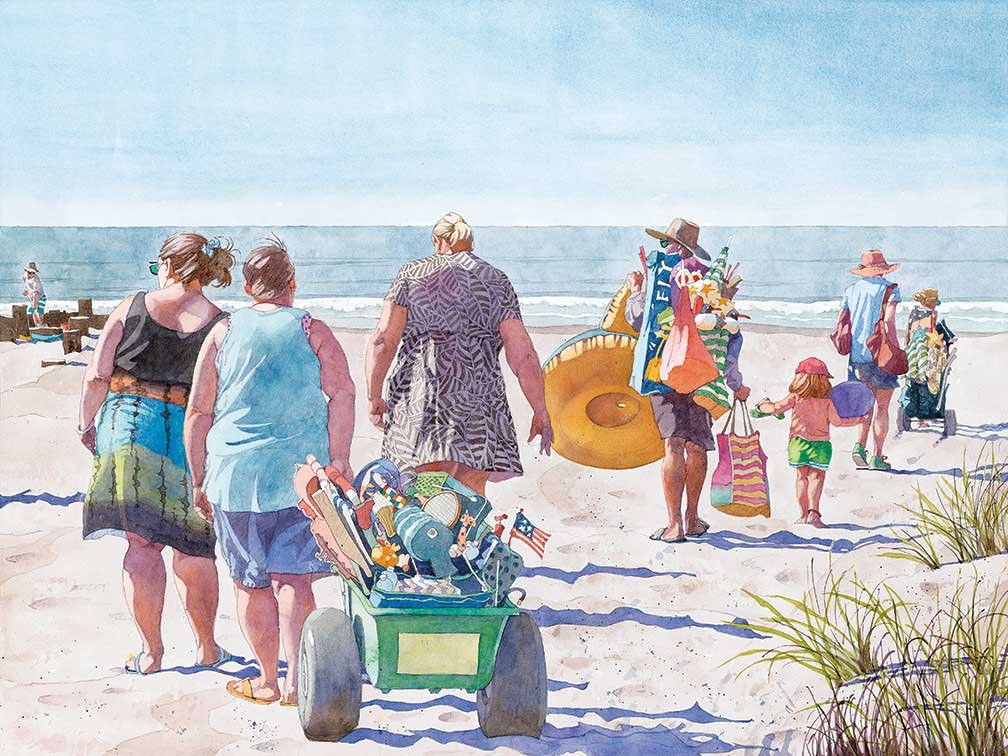
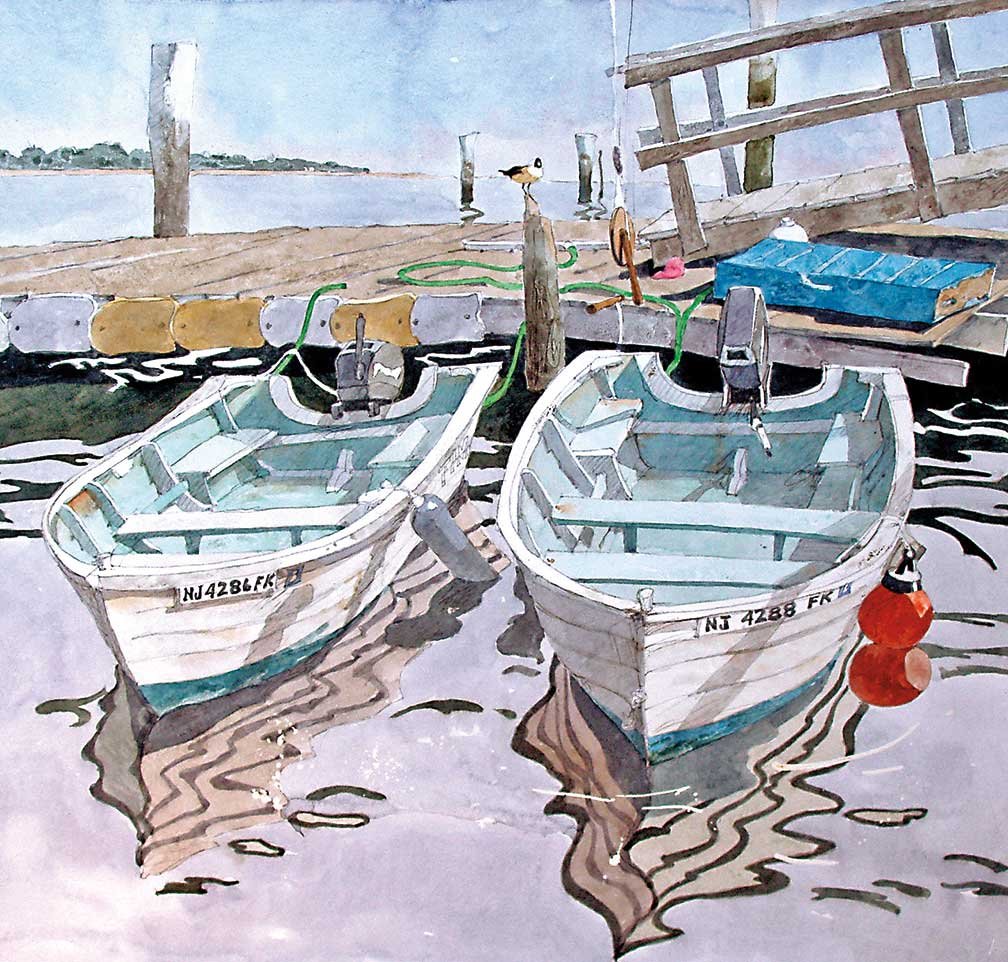
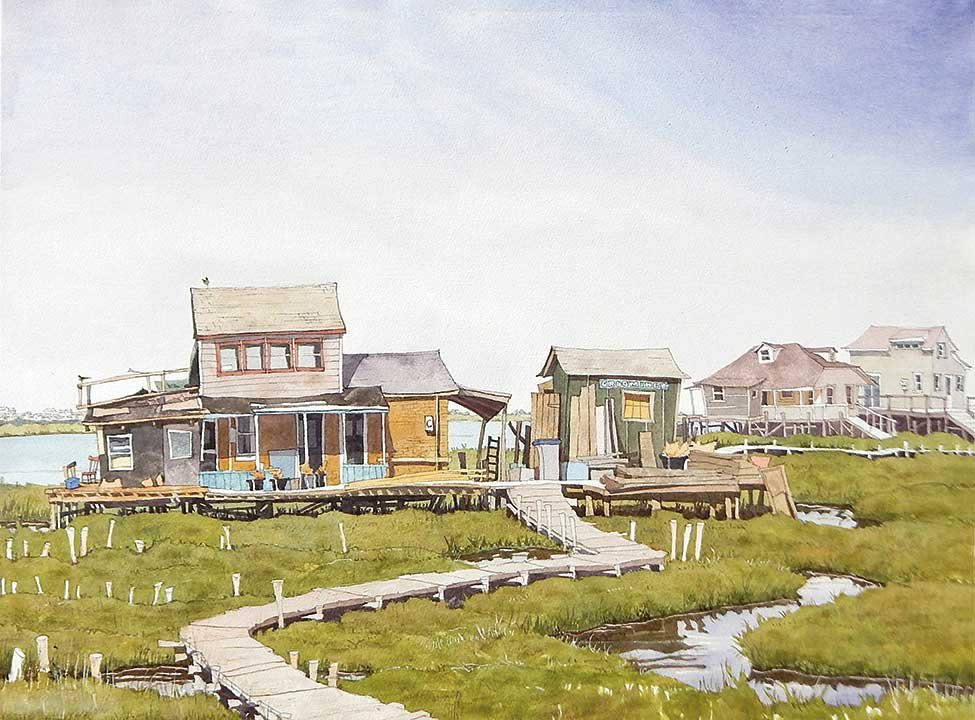
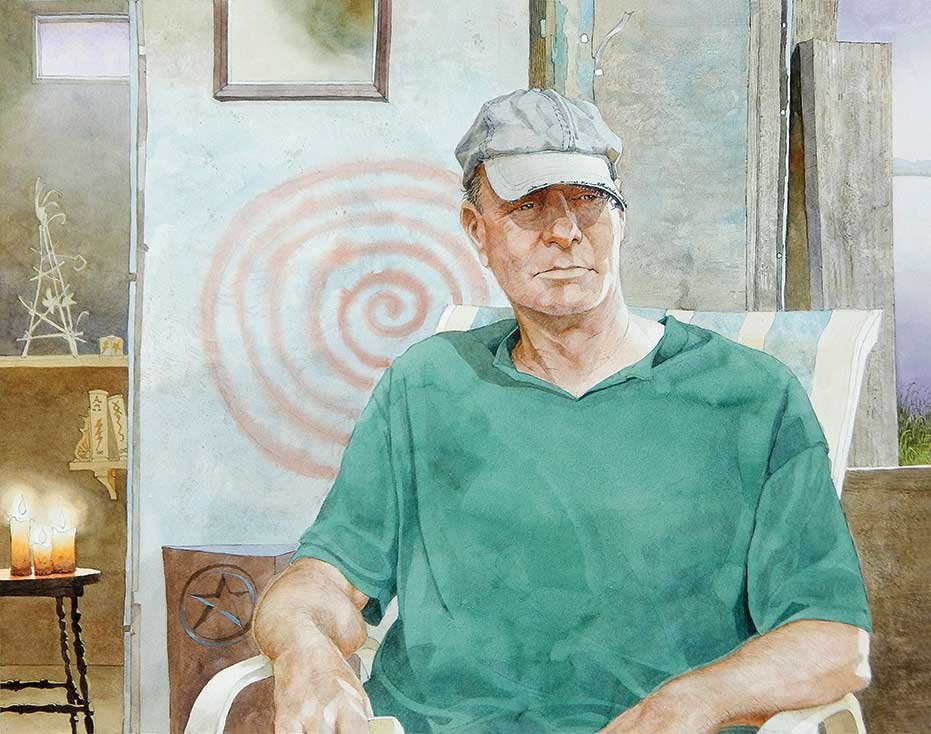


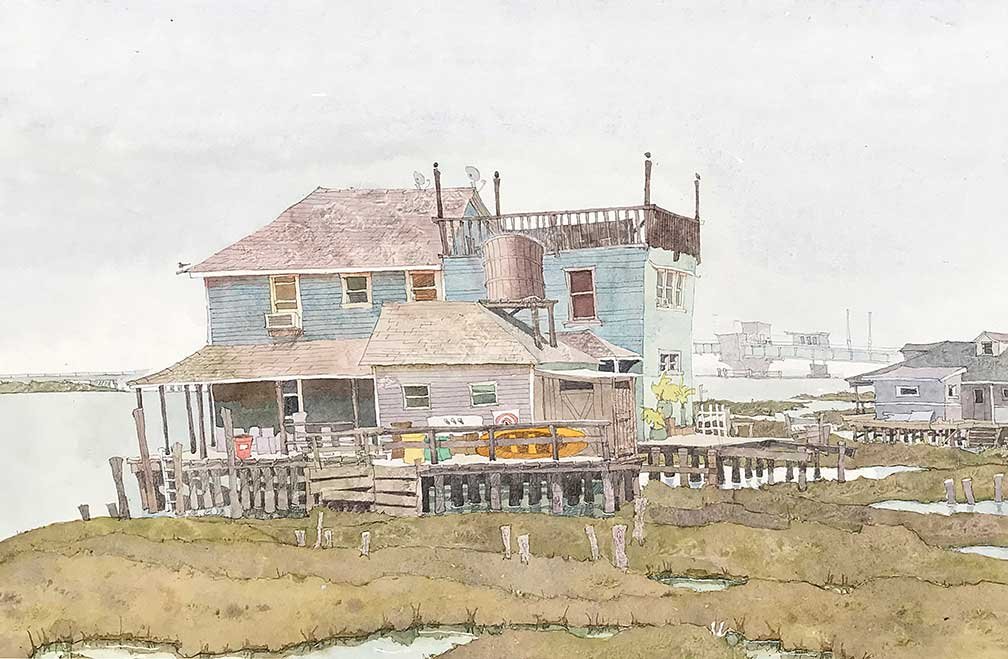
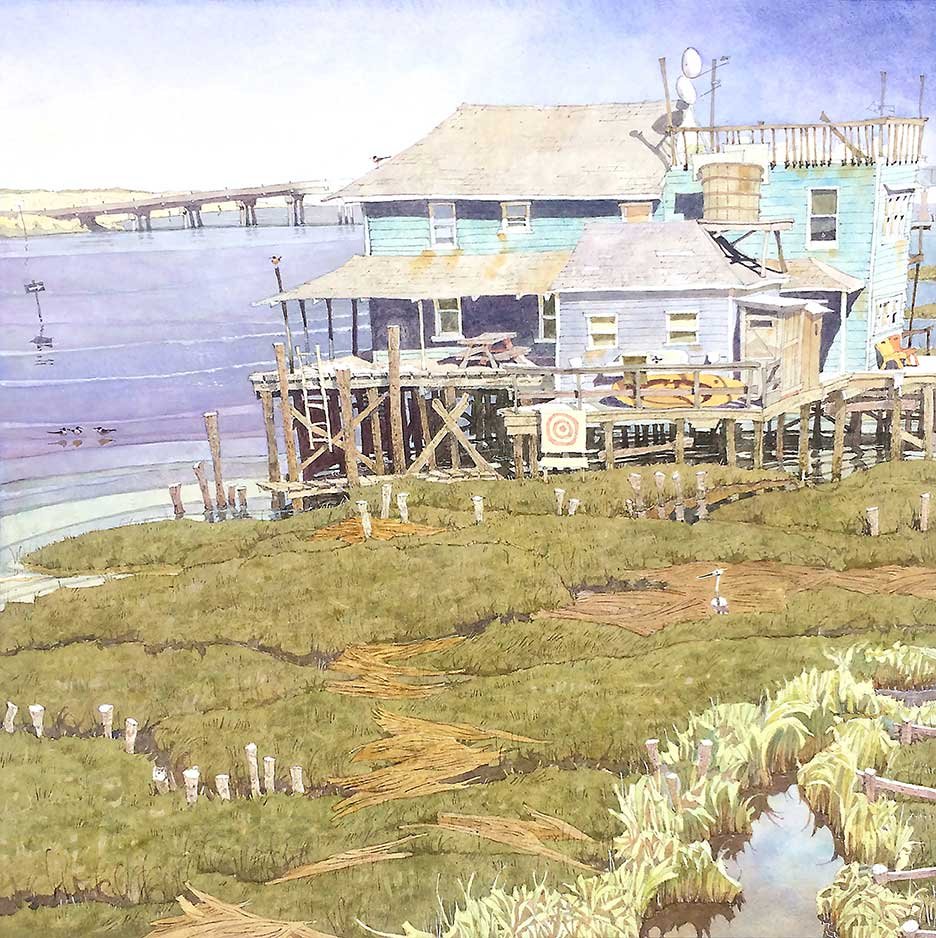
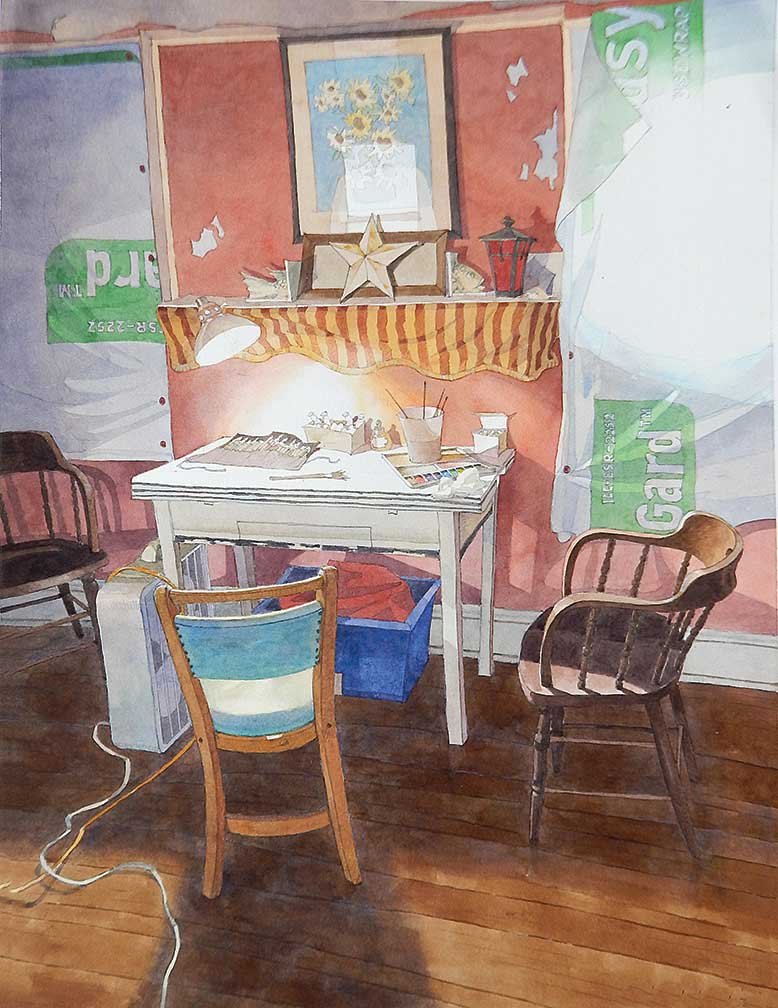
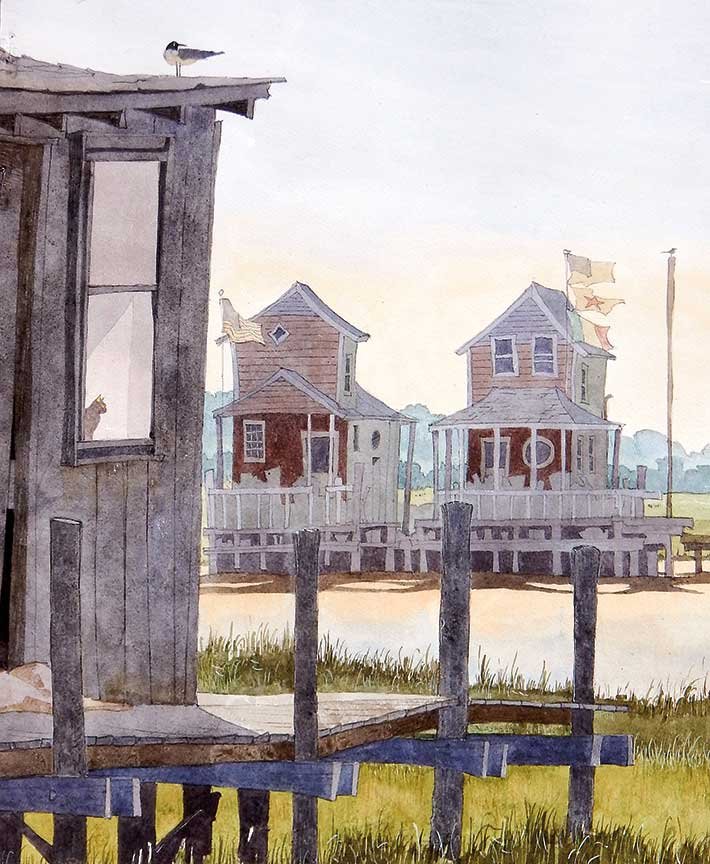
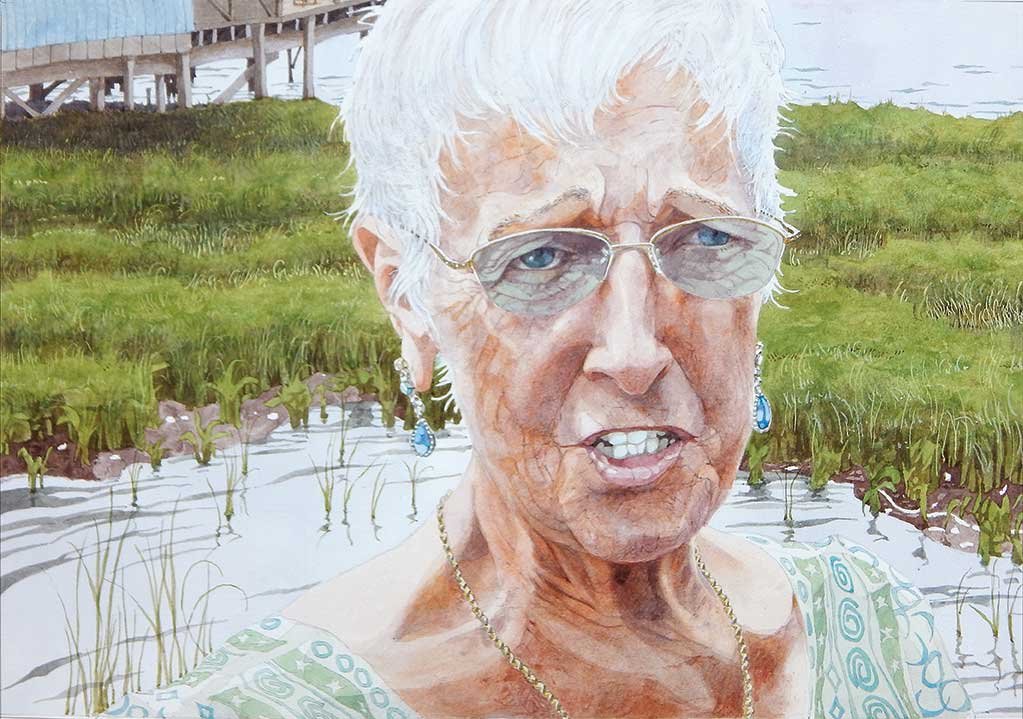
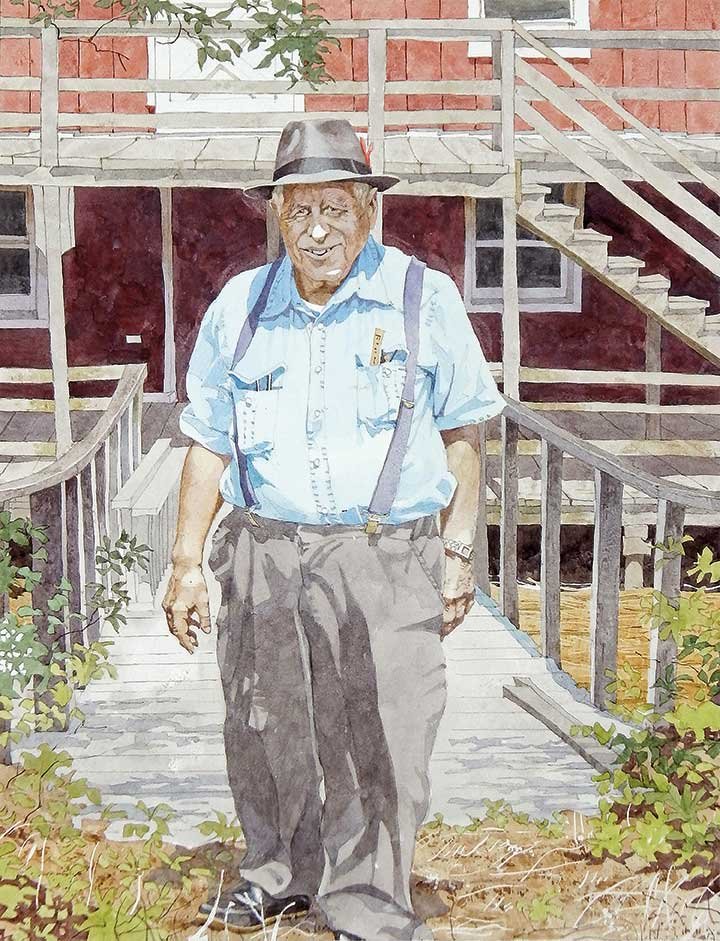
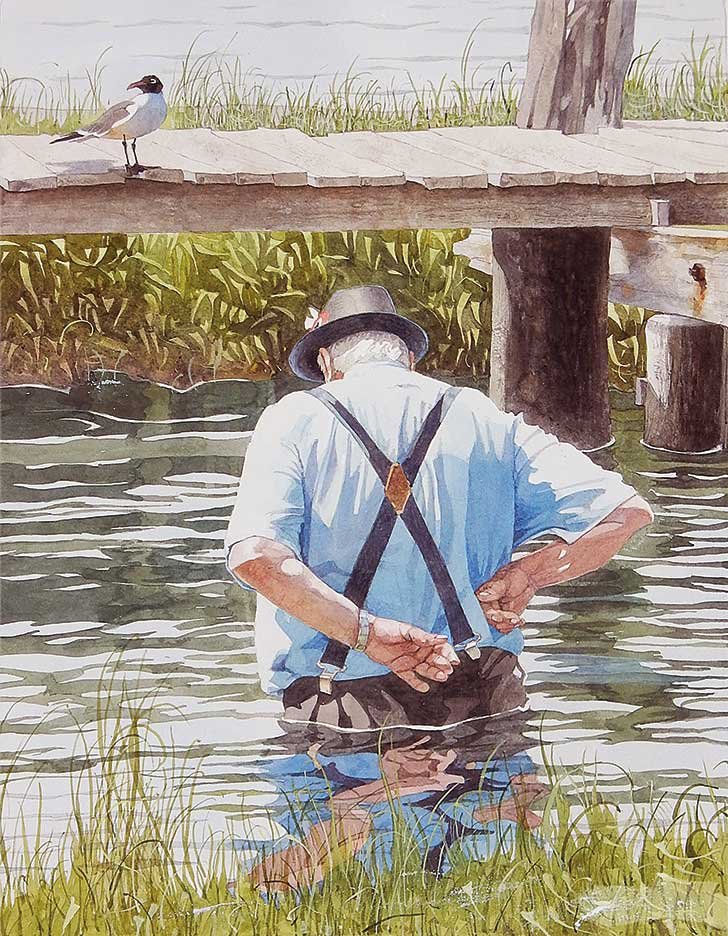

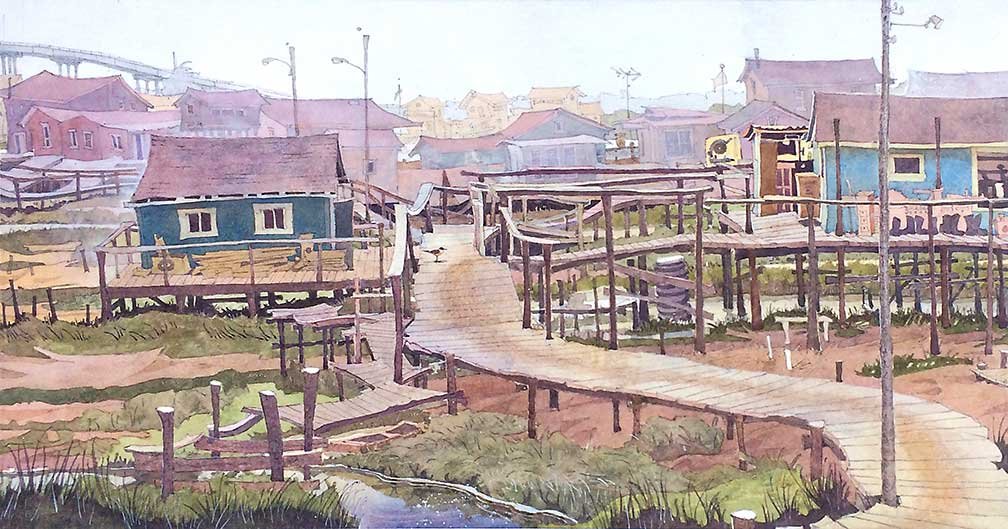

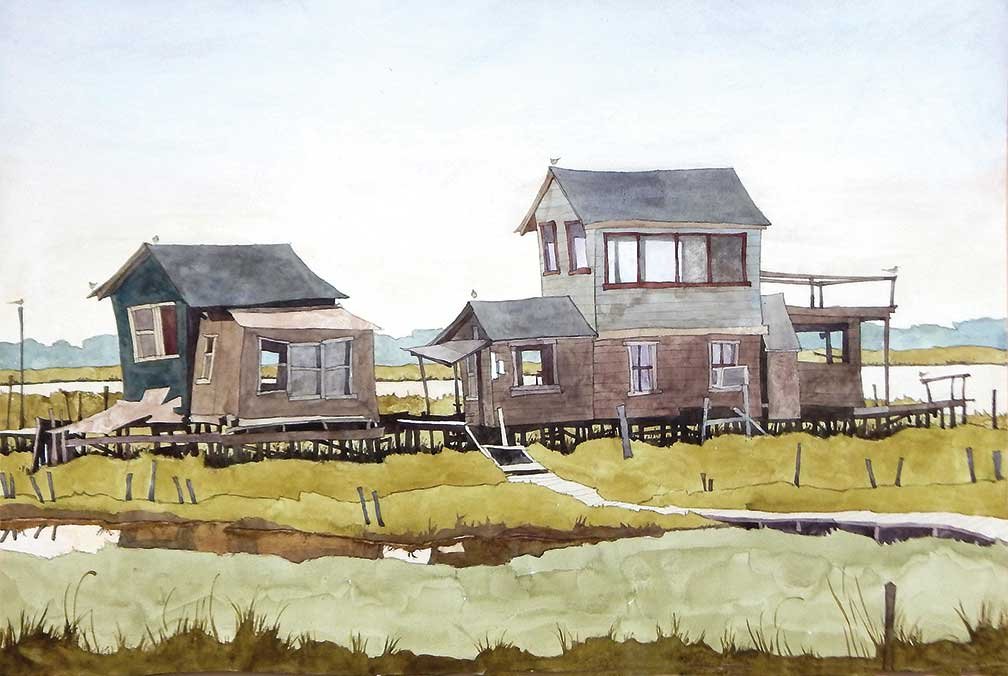



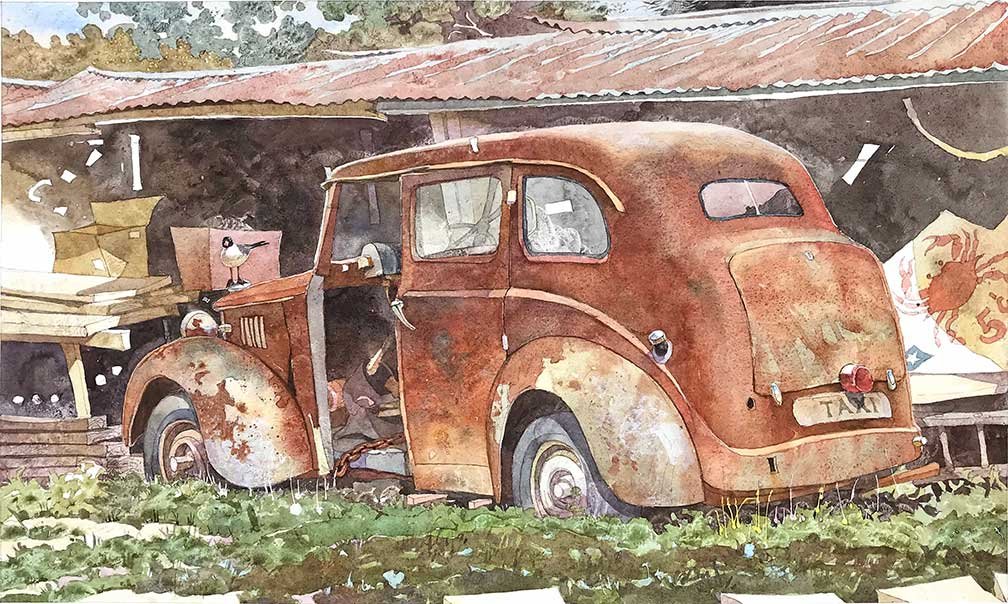
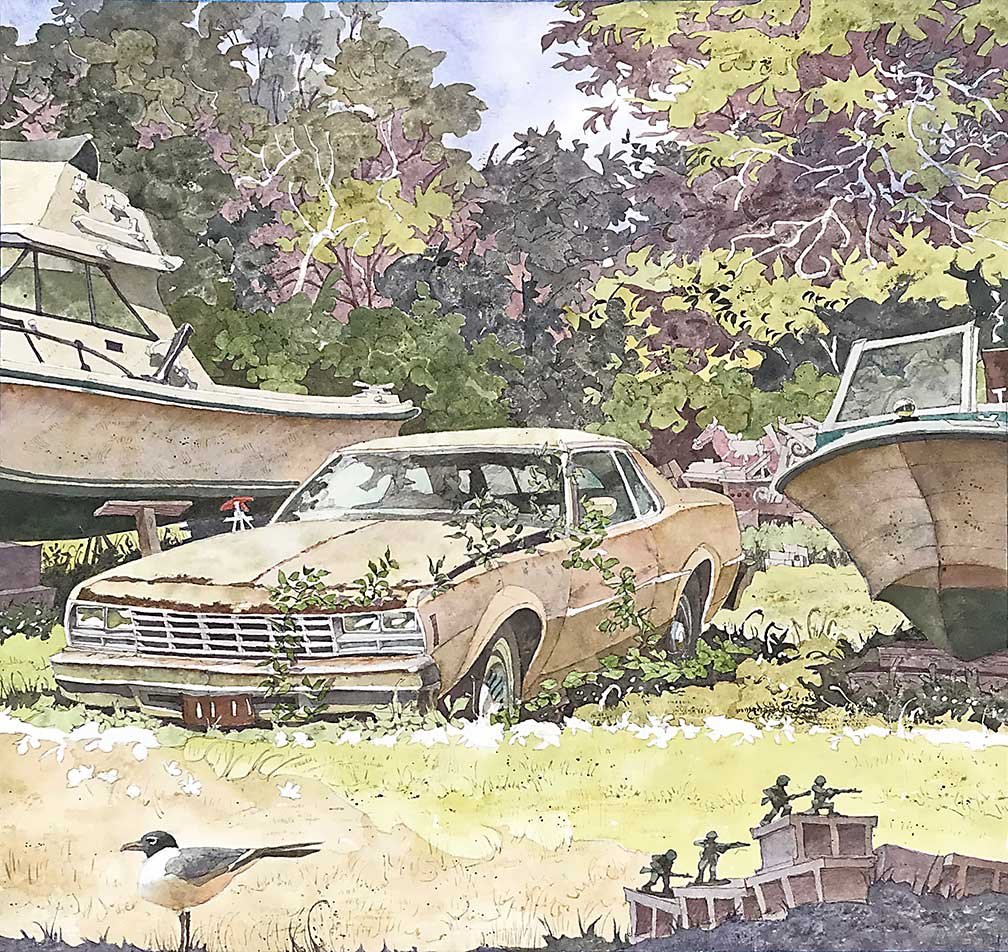
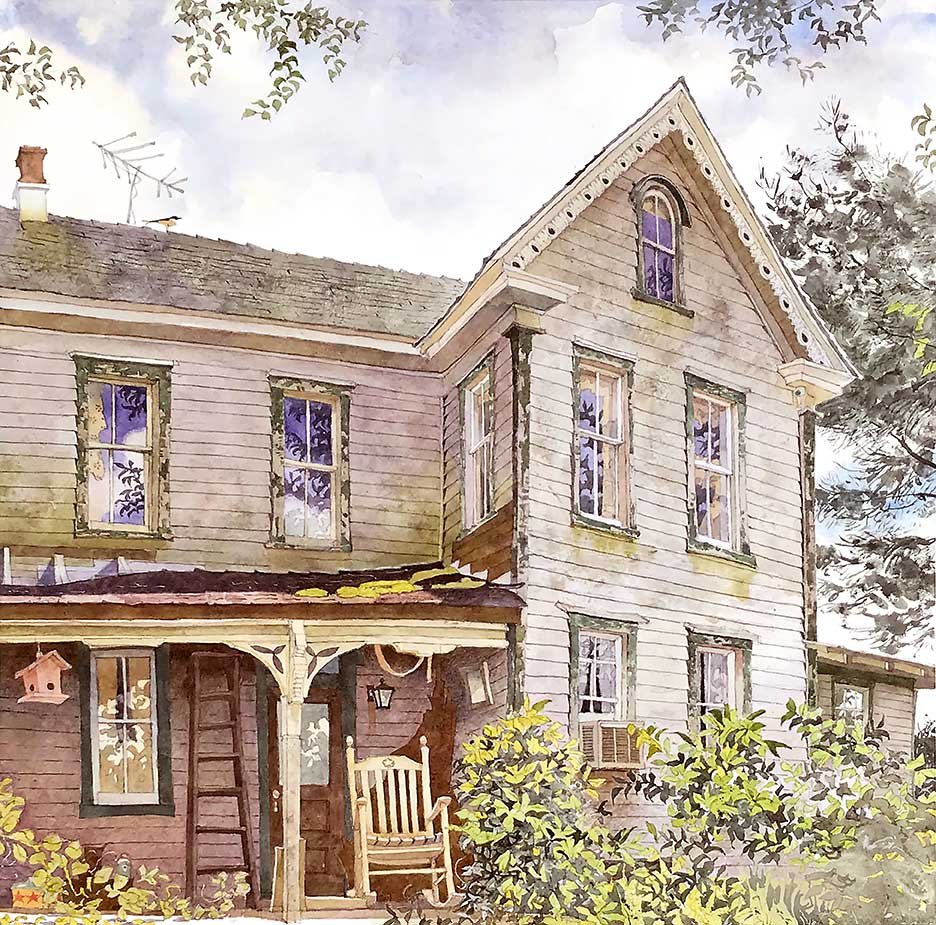

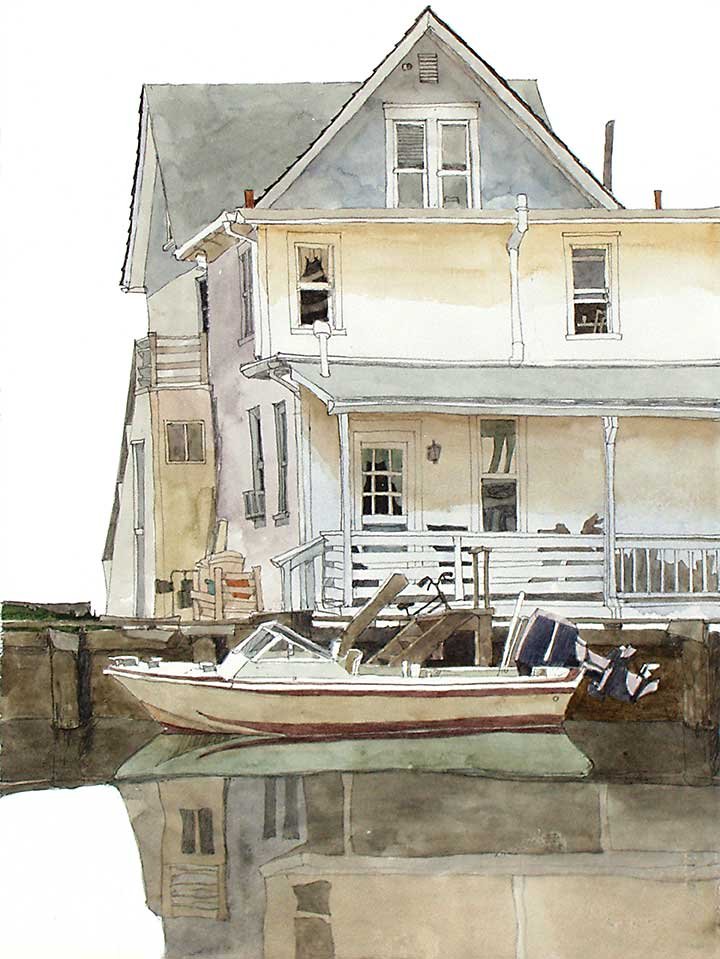
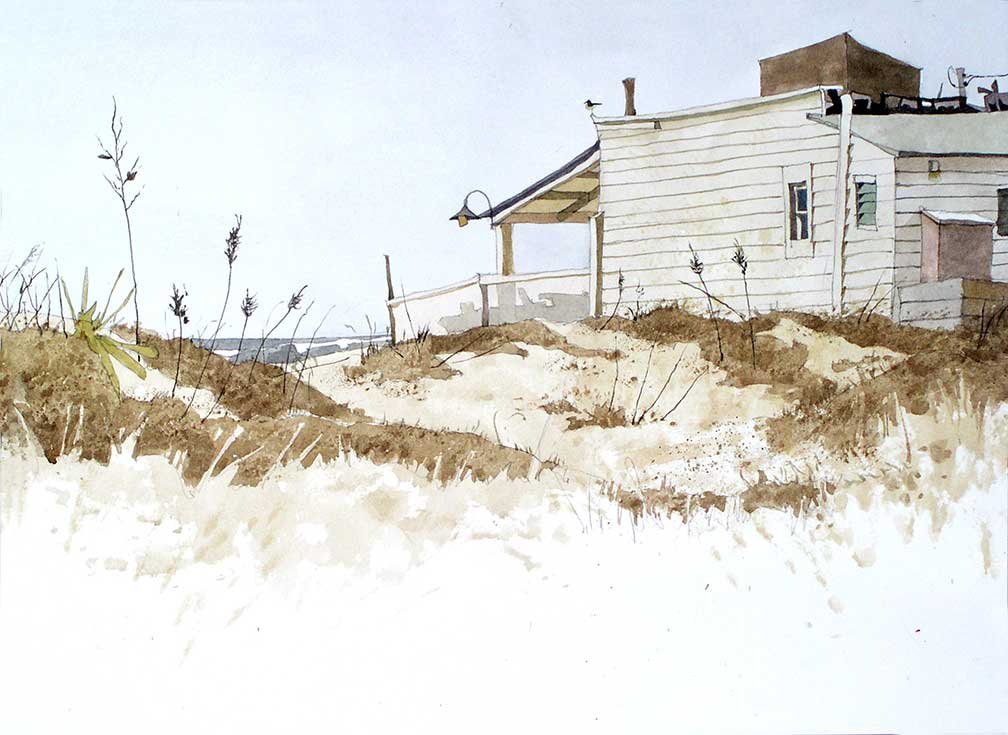
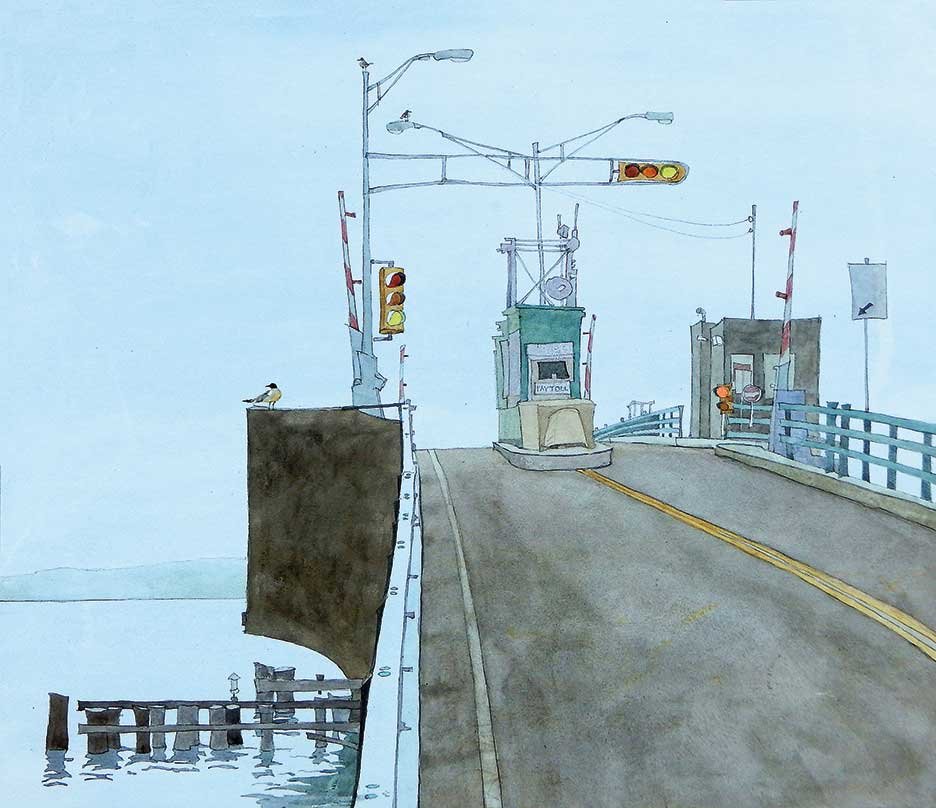
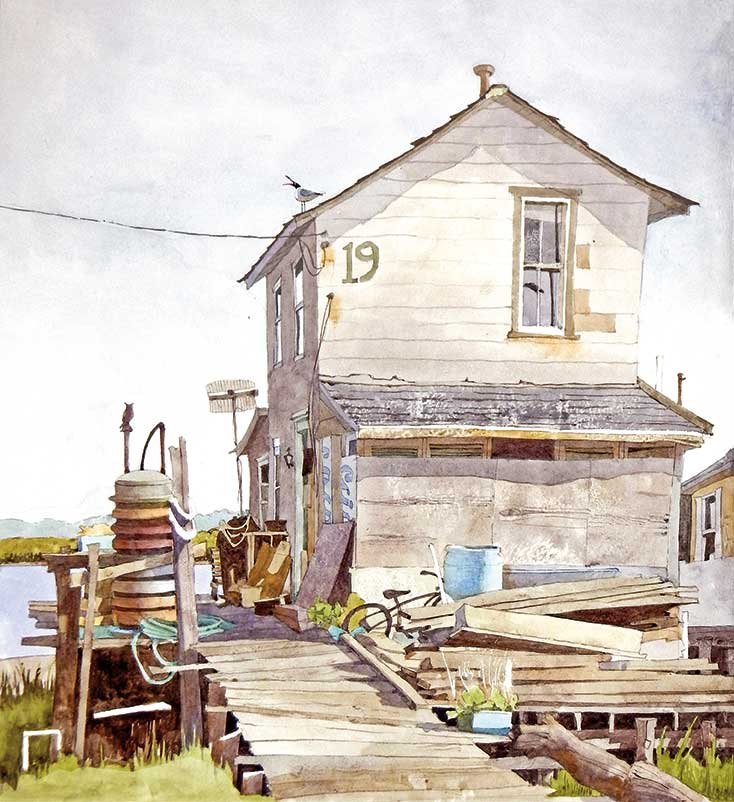
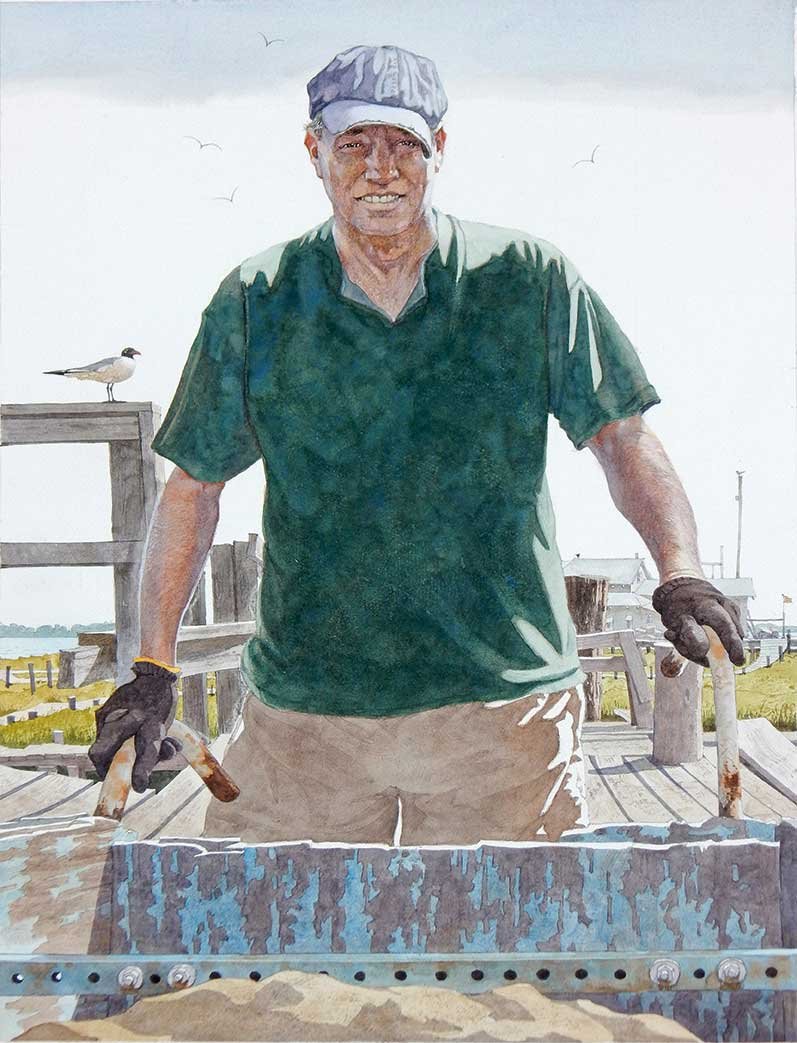
Chestnut Hill
Chestnut Hill is an ornate, historic community adorning the northeast edge of Philadelphia Pa. The Wissahickon Creek passes through in Valley Green Park on its way to the Schuylkill River making it one of the most beautiful parts of the city.
The story of how I found myself stranded and on foot in Chestnut Hill is too long to tell, but there I was, stranded. That was over ten years ago.
Having a few weeks to fill, I took my tools onto Germantown Avenue and began a watercolor. As one thing leads to another, I have now built a large collection of Chestnut Hill images and another home away from home with good friends and lasting opportunities. I’ve been featured at length several times in the local news, I have spent two winter seasons there in my own Christmas pop-up gallery selling my originals and gicleé prints. I’ve taken part in the towns “Fall for the Arts” street fair exhibits and other exhibits that are part of the town’s tradition.
This all happened because I’d flown into Philadelphia one year unaware that my driver’s license had expired.
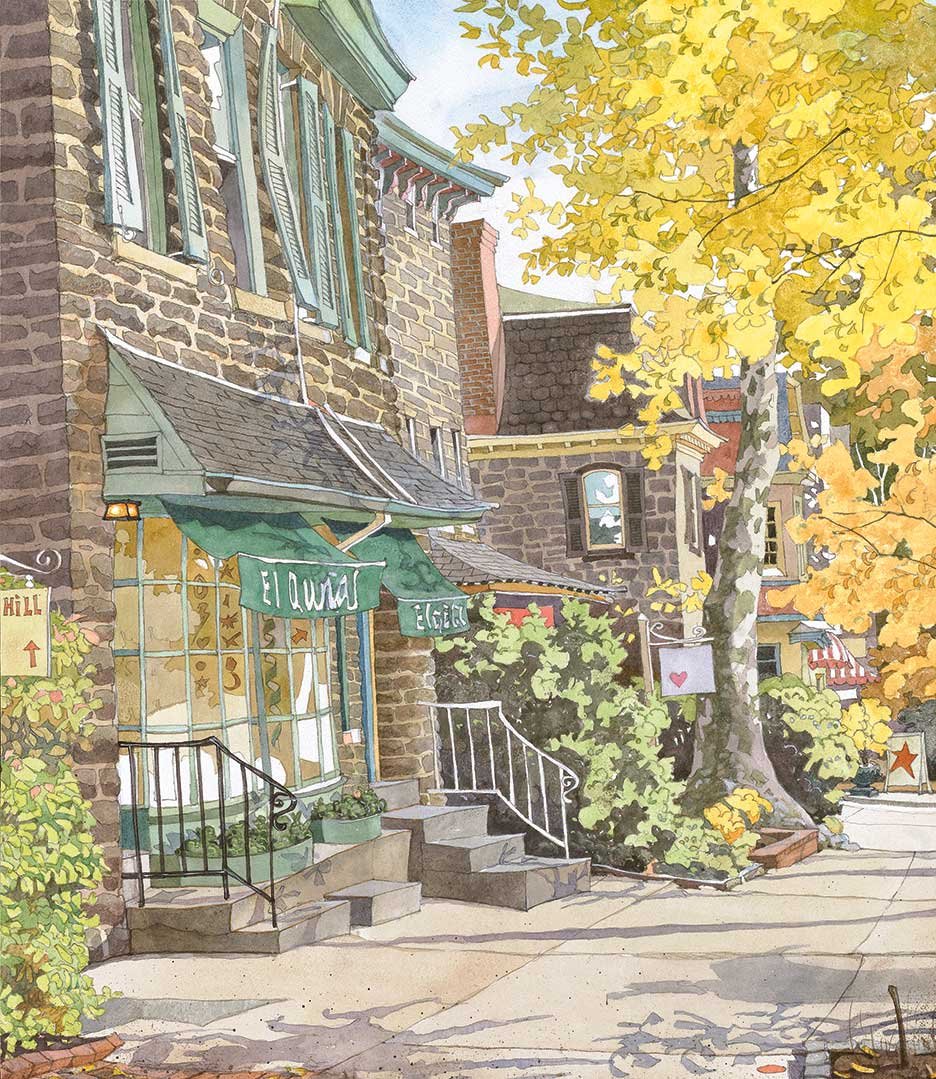
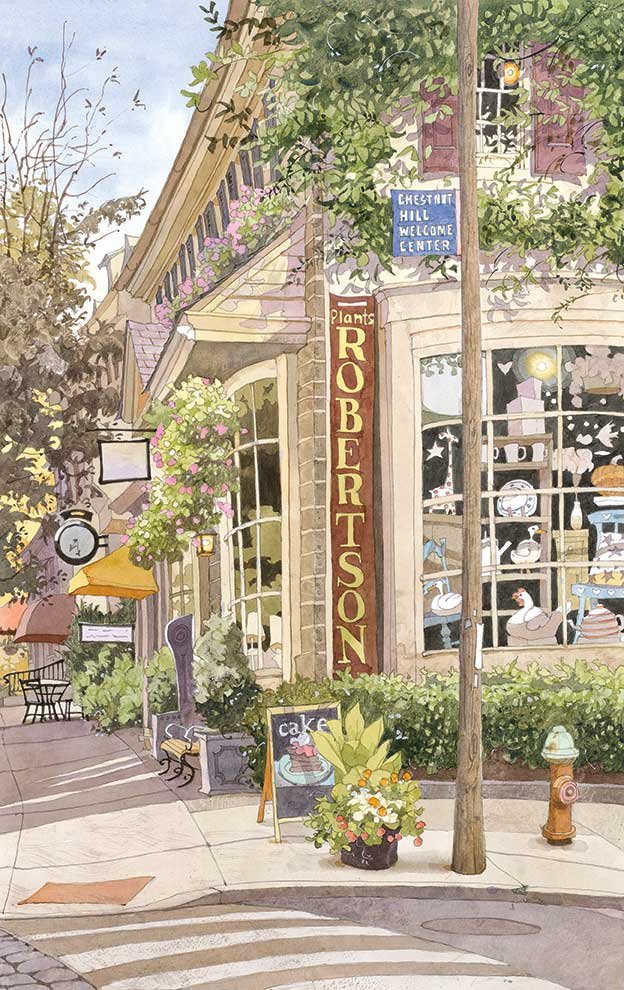
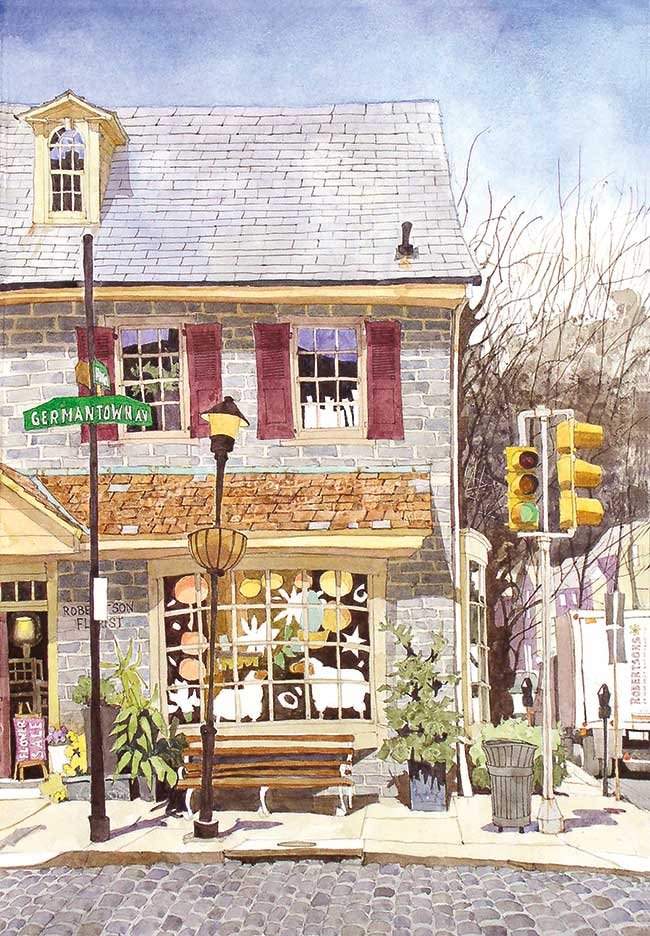
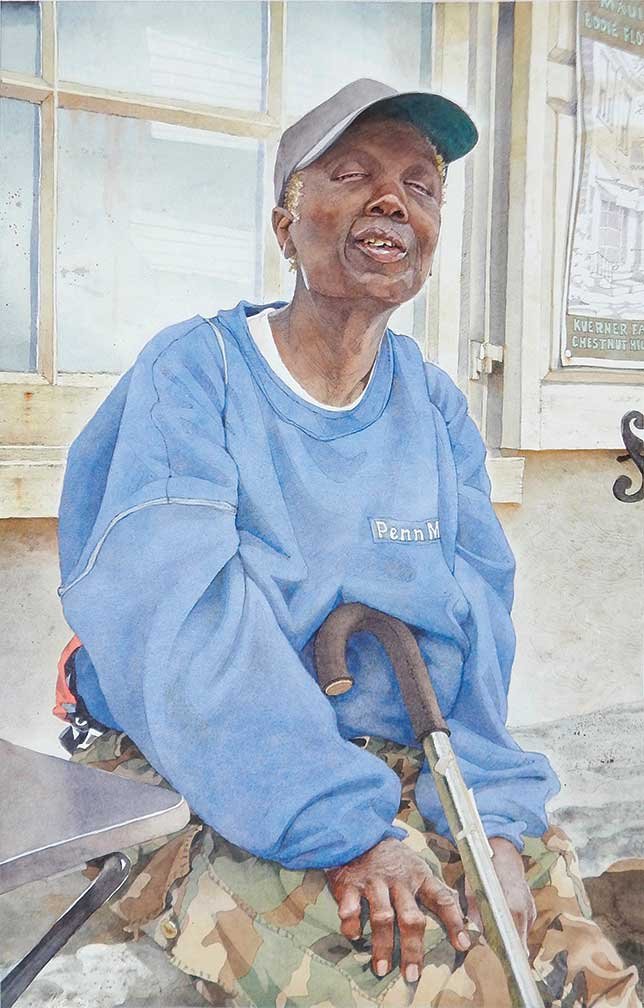
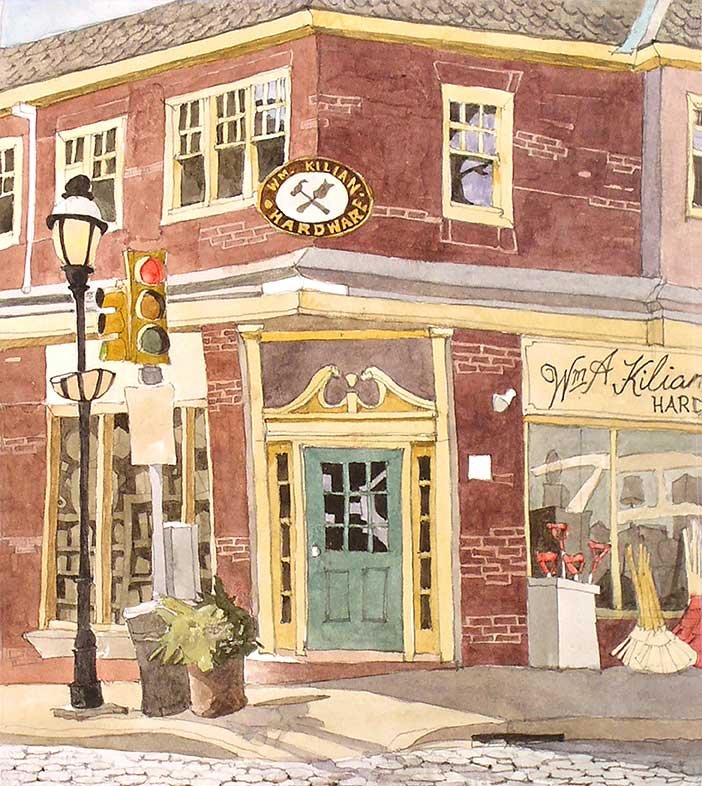
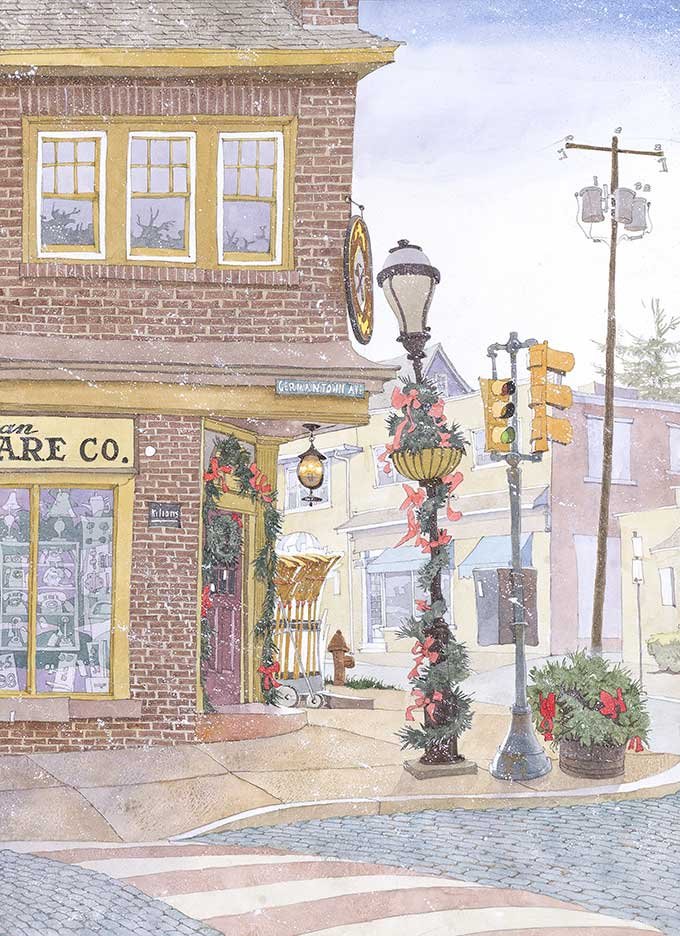
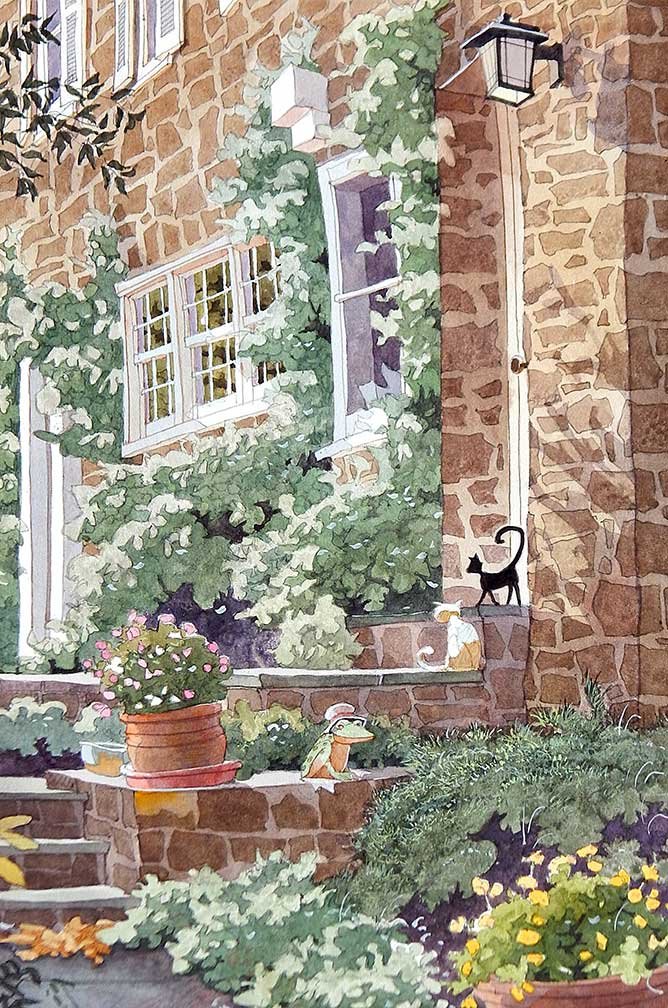

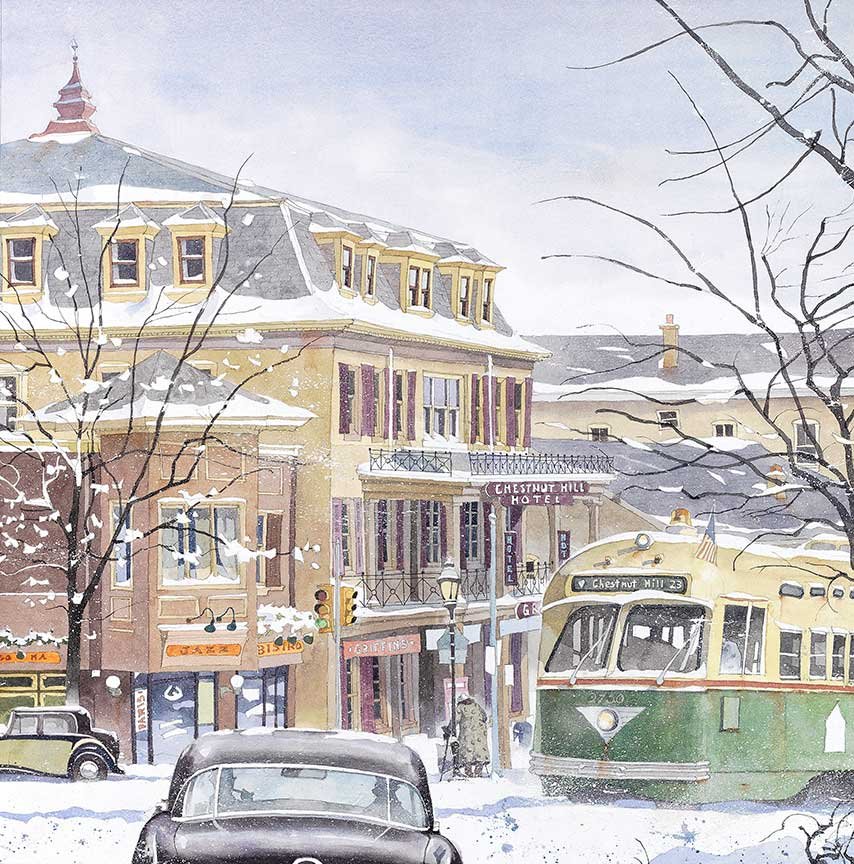
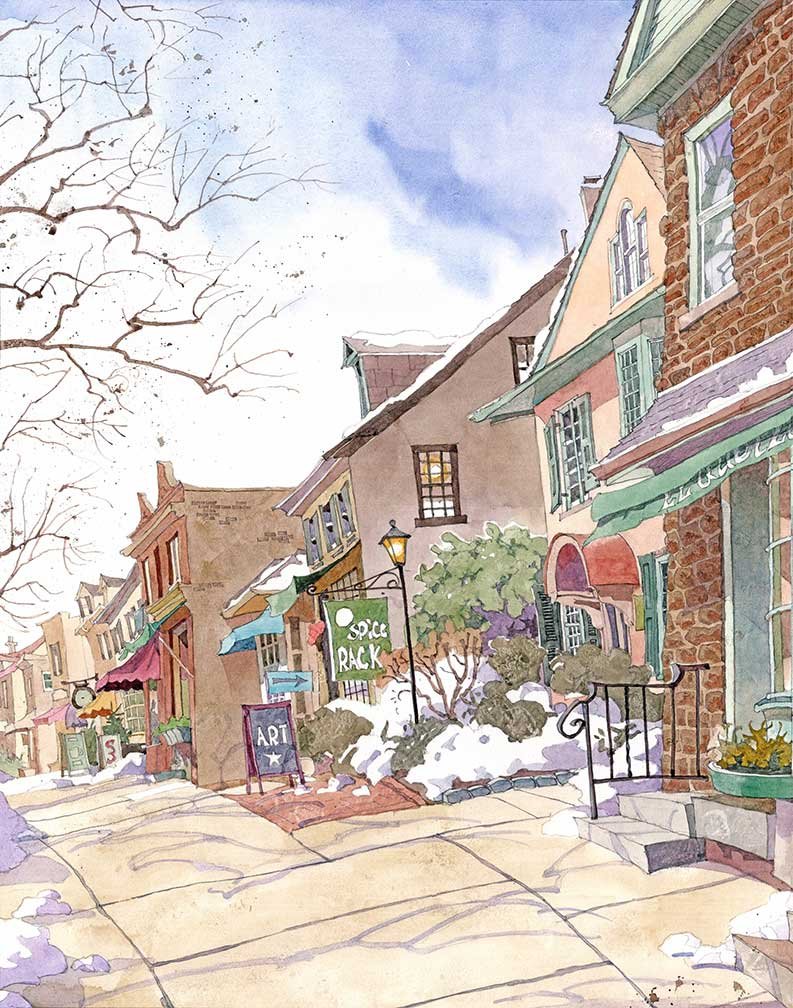
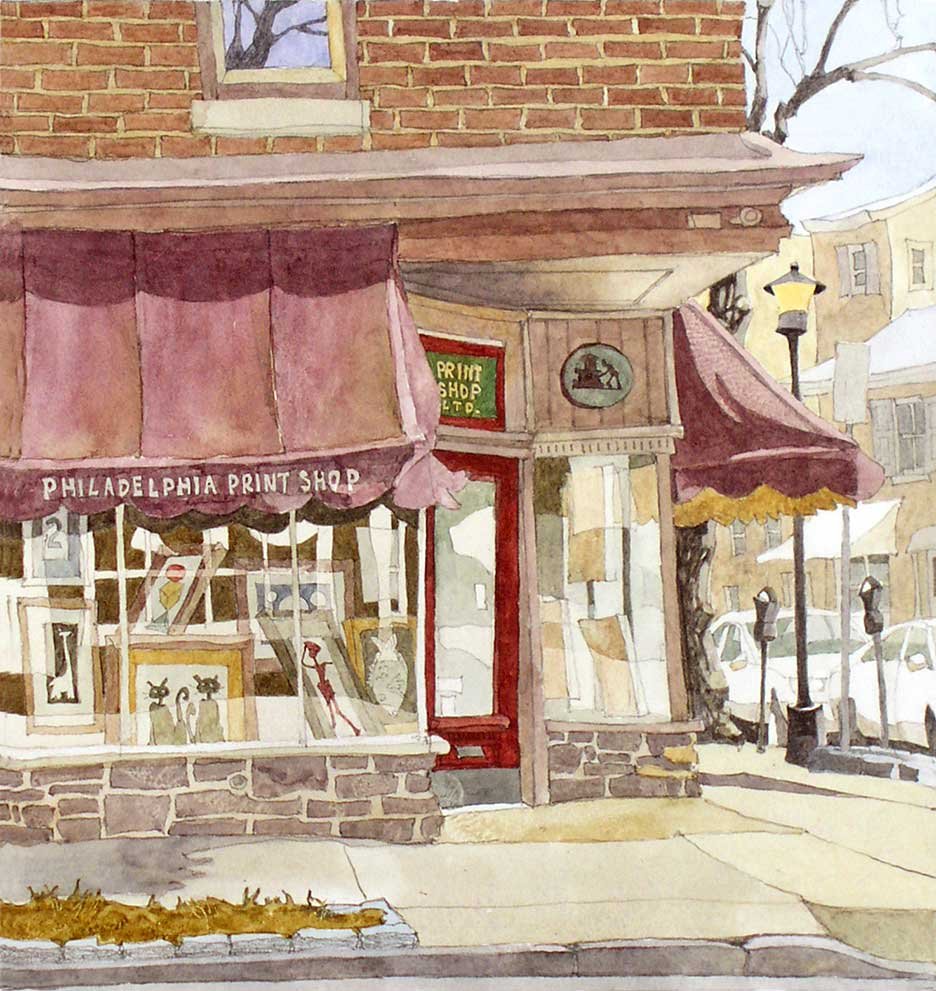
Coloring with Bette
These last four years have been spent mostly caring for my mother in South Jersey along the bay, unable to leave her alone. This is an all-consuming labor of love, leaving less and less time to focus on work. In search of ways to keep us busy, keep her mind active and keep myself sane, I thought of coloring. My first impulse was to go and buy a coloring book, … funny since I am a walking coloring book. Thus began a new discovery as I quickly drew the outlines and handed them to her to color. Some she colored with little or no supervision, others with a bit more, some with a lot more.
I had, until then lived in a world of precise draftsmanship and delicate muted color. These works were the opposite, dictated by the few high-key magic marker colors on hand. In my opinion they are exciting, lively works of art born through serendipity and our collaboration. I am certain they will significantly influence my future artistic approach.
